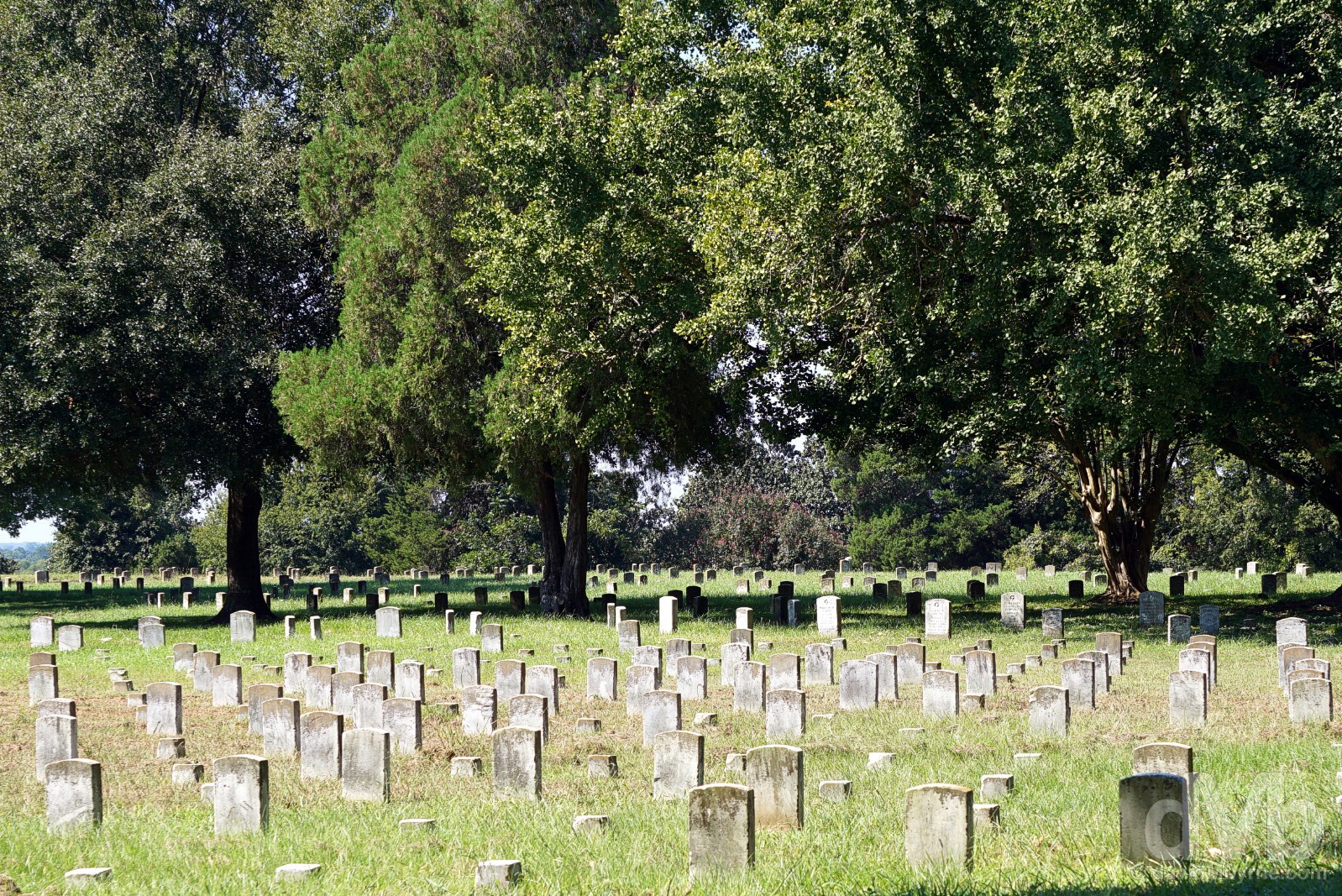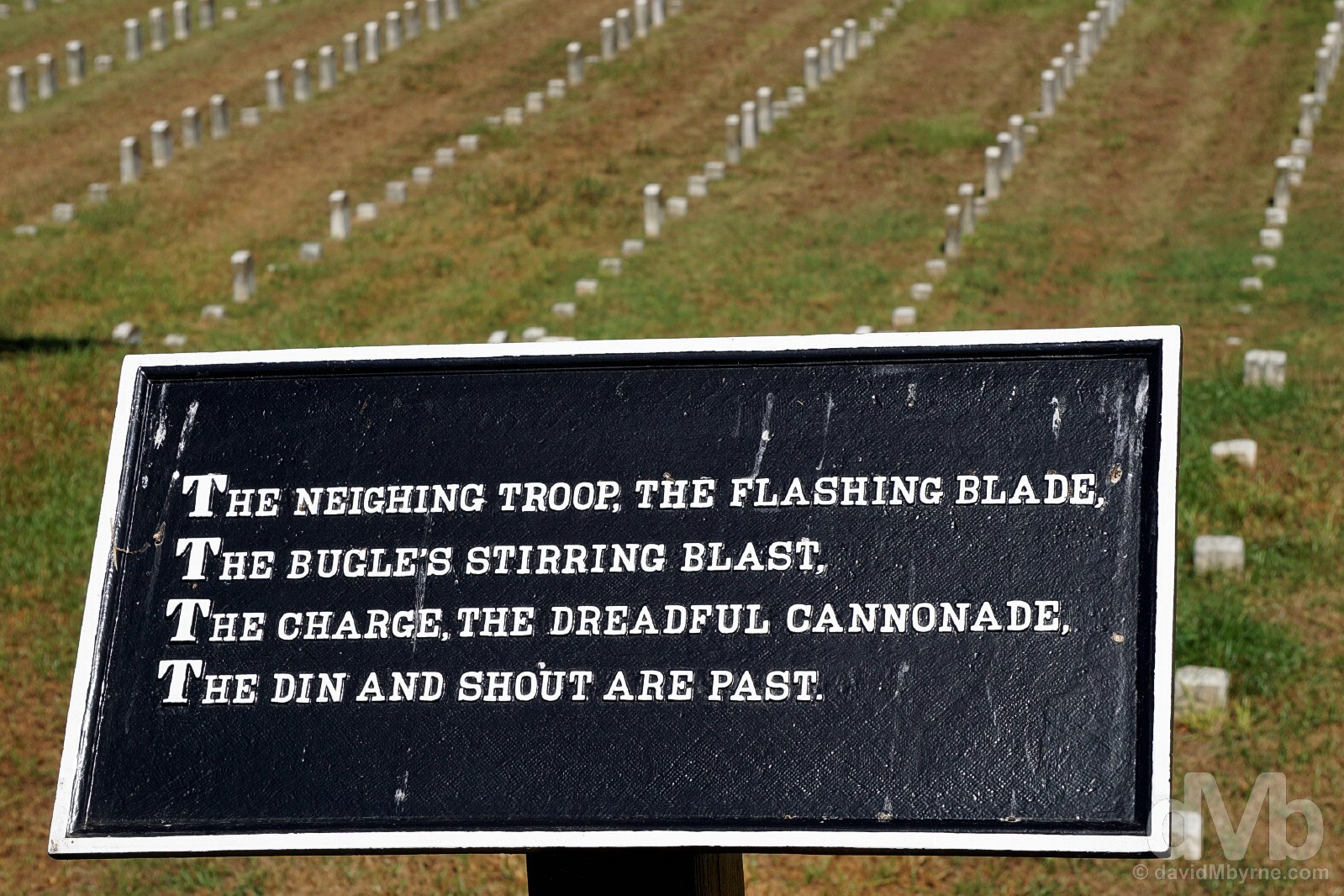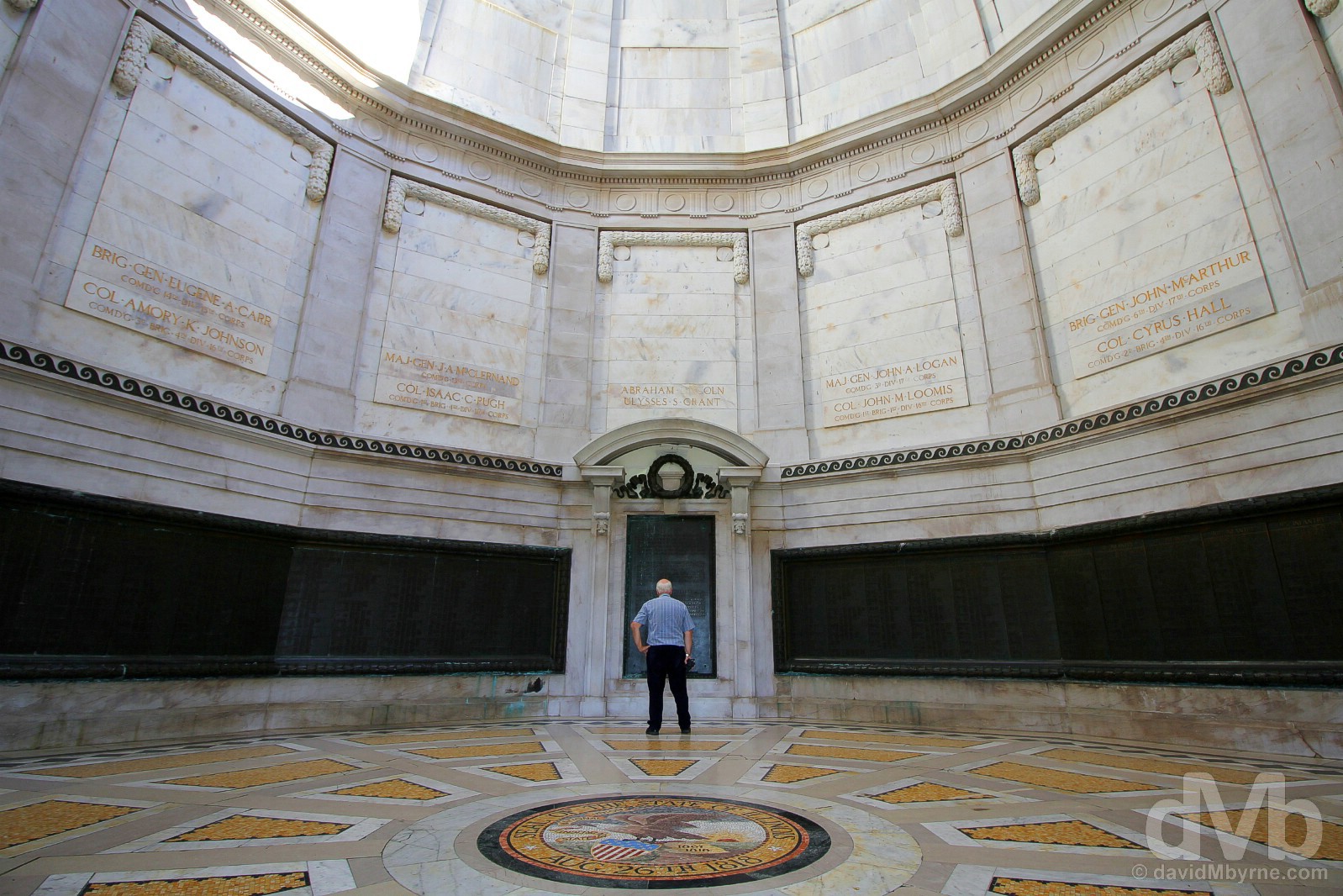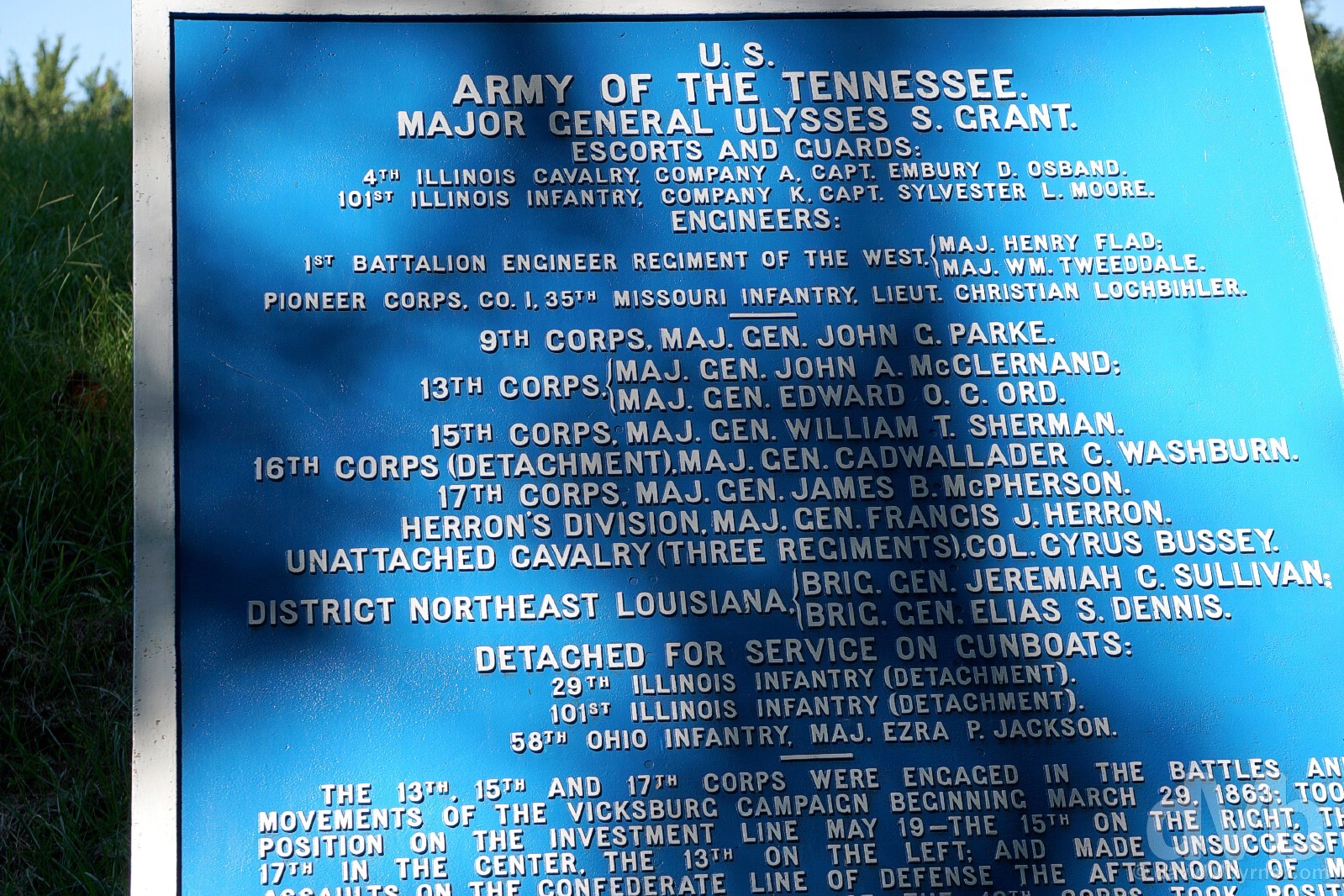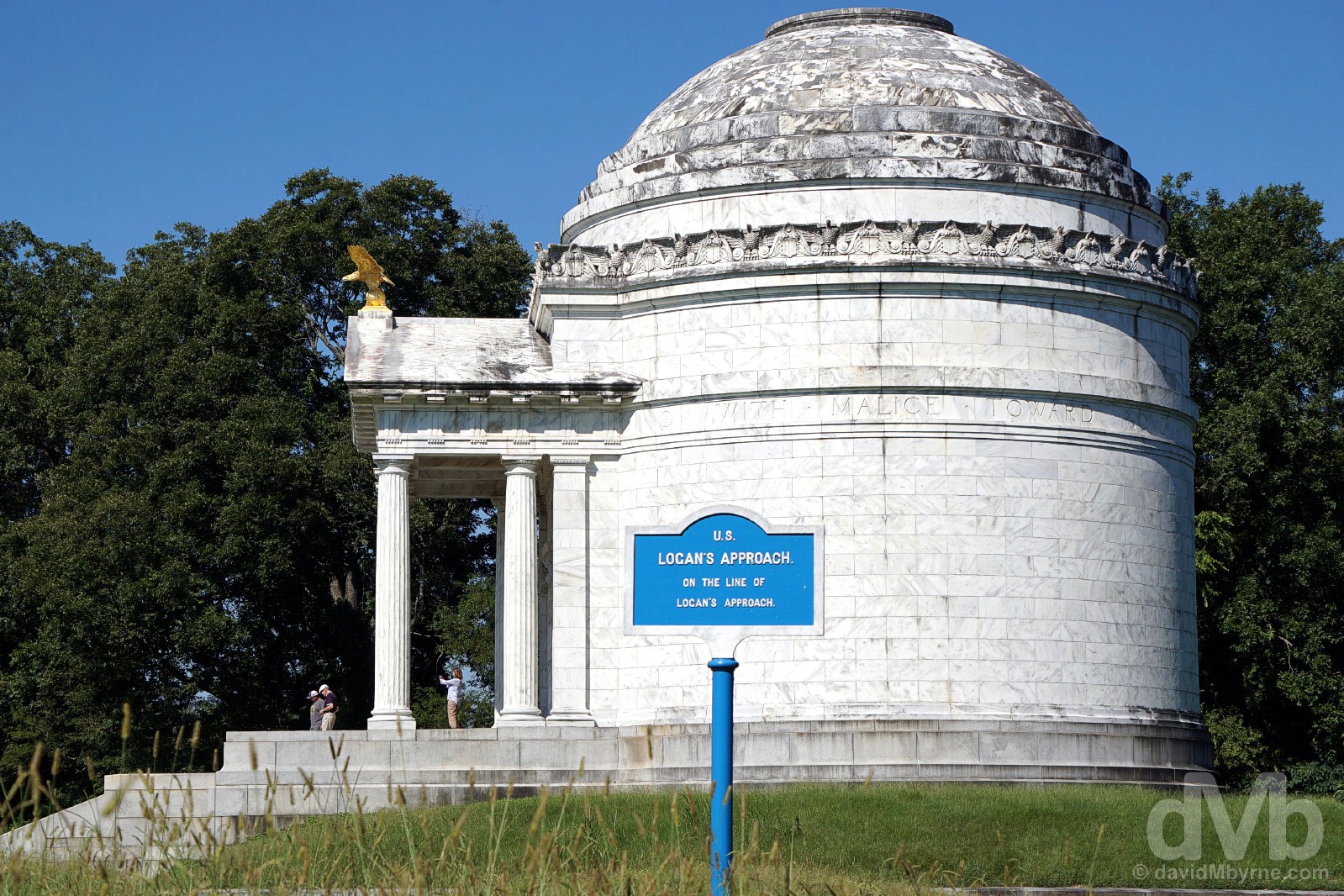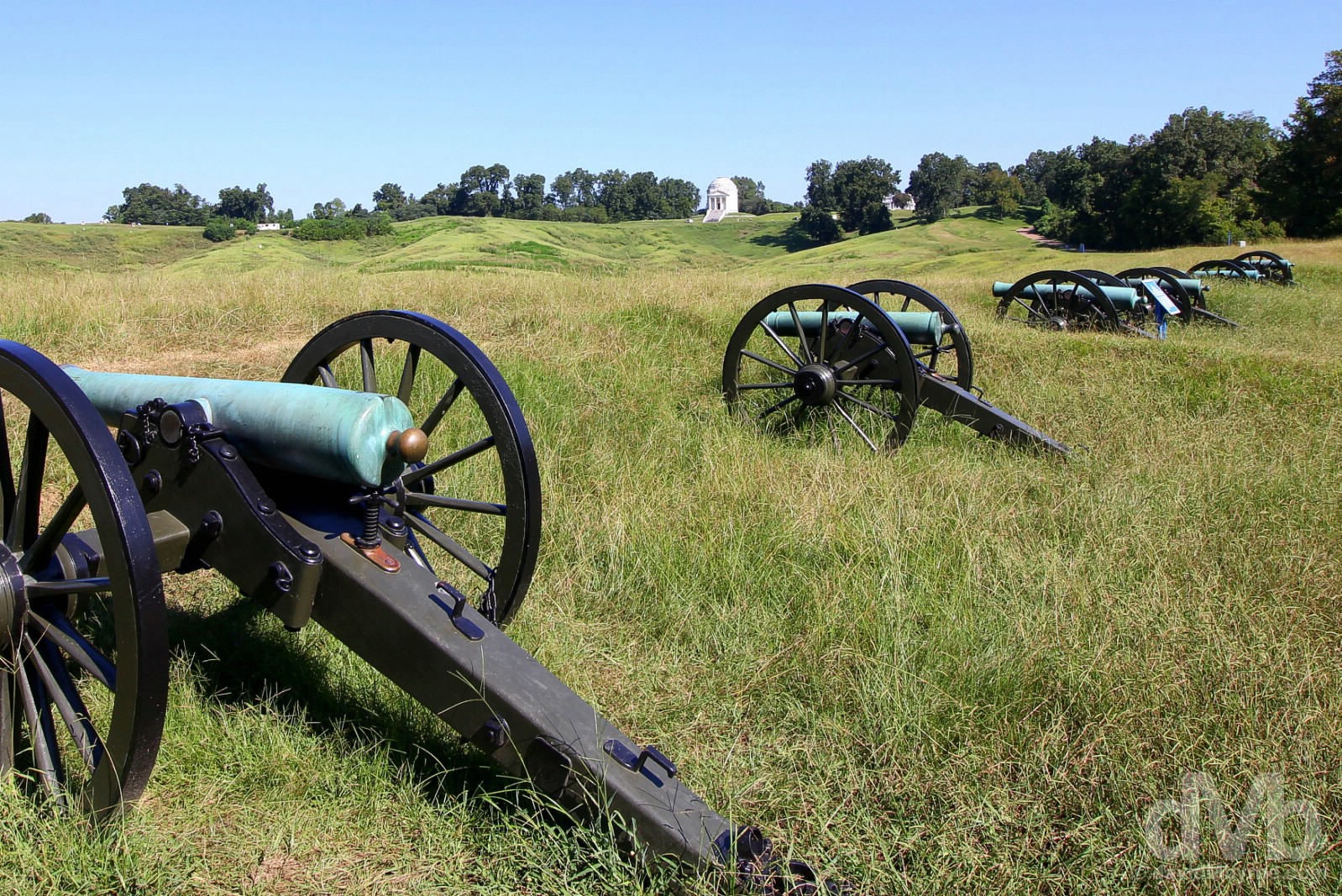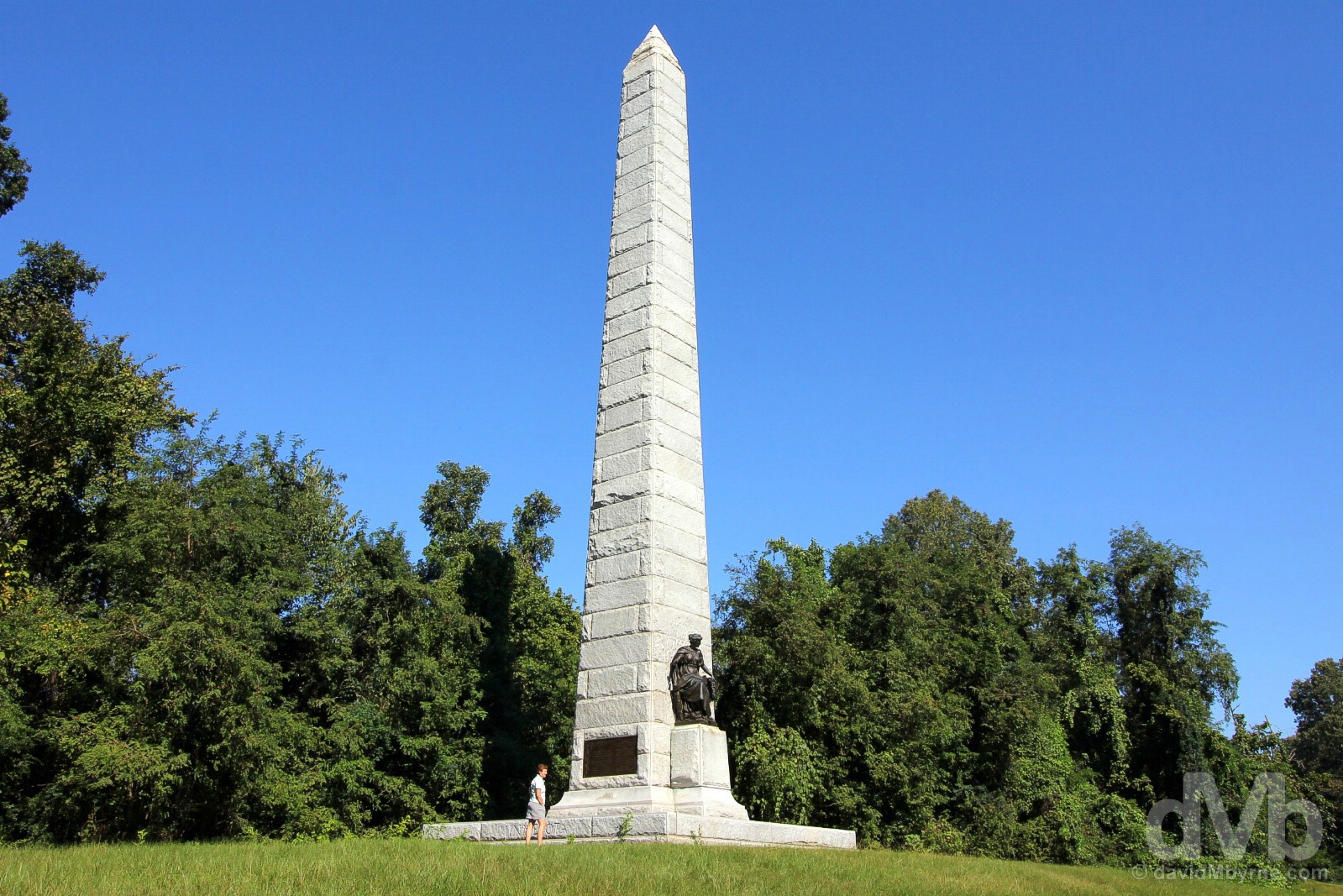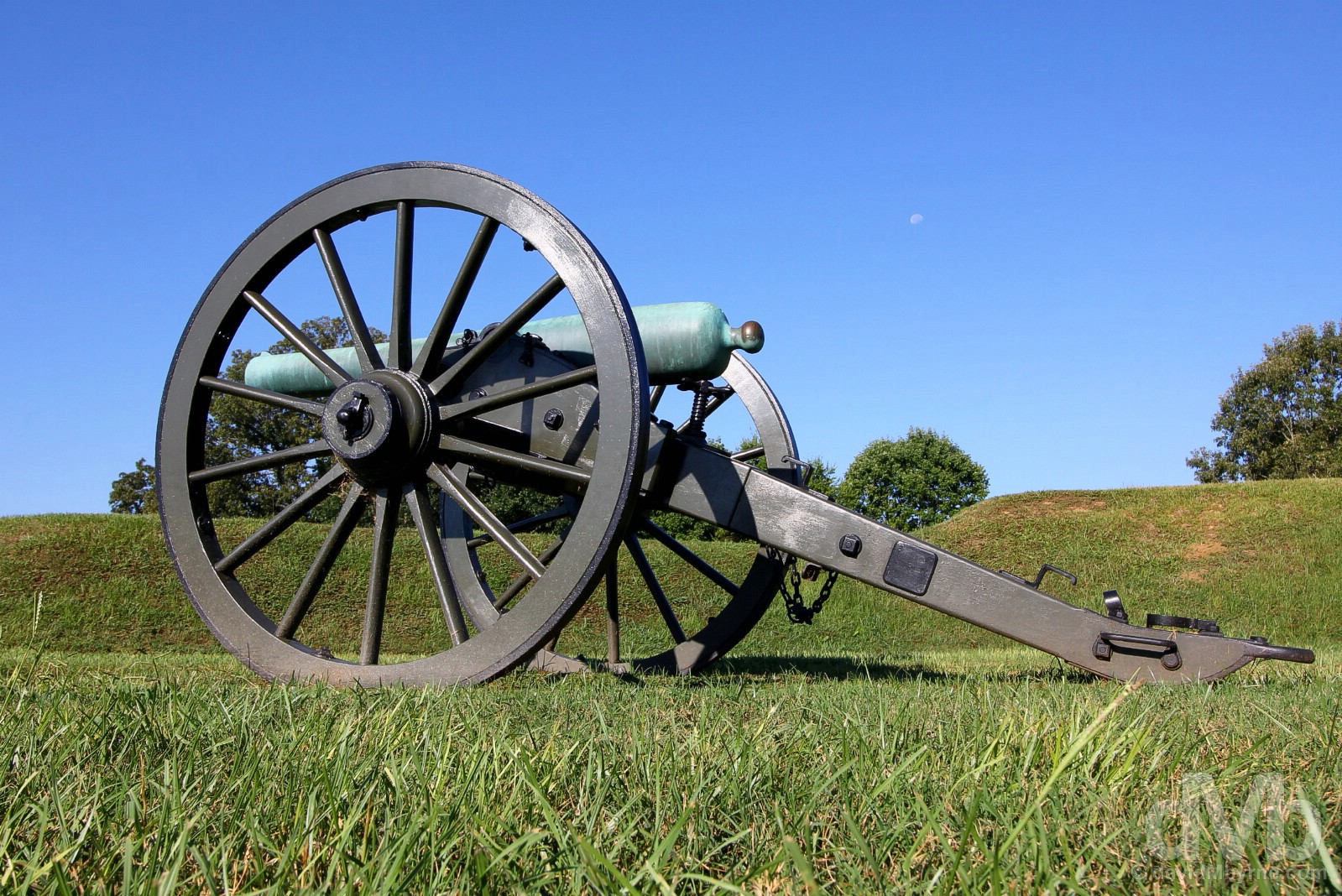EPIC US ROAD TRIP 2016
DAYS 22-25 - THE SOUTH - TENNESSEE, MISSISSIPPI, ALABAMA & GEORGIAImage || The endless cotton fields of the Mississippi Delta.

Epic US Road Trip 2016 – The South
Music (blues, rock ‘n’ roll, rockabilly, jazz, country & bluegrass); bourbon; tobacco plantations; cotton fields; steamy swamps; paddle steamboats on the Mississippi River; friendly southern drawl; Tom Sawyer & Huckleberry Finn; NASCAR Sunday fundays; antebellum architectural gemstones with inviting wraparound front porches; droopy Spanish moss; checked shirts & pickup trucks; Juke Joints; The Dukes of Hazzard; slavery; the Union North vs. Confederate South American Civil War sites; Rosa Parks, Martin Luther King & the Civil Rights Movement; sticky, subtropical climate; trailer parks; indie music college towns; impassioned Bible Belt congregations; BBQ, biscuits, grits & gravy. The South is different, very different, and it’s certainly not short of stereotypes.
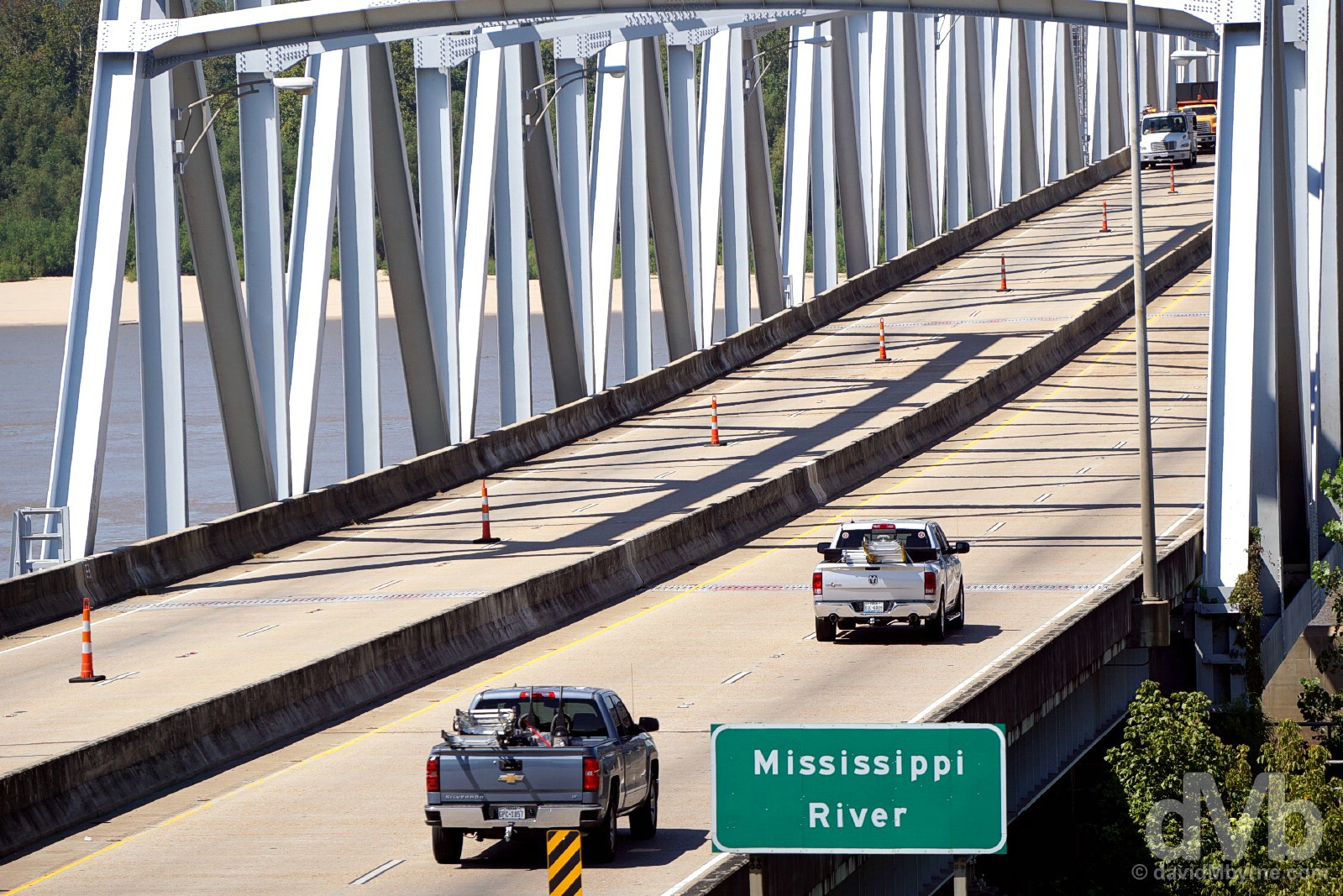
Driving Interstate 20 & US Route 80 across the Vicksburg Bridge spanning the Mississippi River into Louisiana from Vicksburg, Mississippi. September 20, 2016.
Three-plus days it took us to cover the 941 miles we covered in getting from Memphis, Tennessee to Cornelia, Georgia from where we launched our assault on the Appalachians. Things had cooled dramatically by the time we got to the fringes of misty Appalachians, but The South was hot. Hot & sticky, just as expected. So too the regional highlights, just as expected: the cotton fields, BBQ & blues of the Mississippi Delta; the Civil War history of Vicksburg; and the Civil Rights history of Alabama the obvious standouts. Welcome to Epic US Road Trip 2016 Days 22 to 25.
Image ||Beale Street, Memphis, Tennessee.
“Shamelessly touristy and with a rustic & rough-around-the-edges look & feel (unmistakably Southern, Beale Street feels markedly different to anything we’d experienced north of here). Nonetheless, the street has undeniable character and for blues aficionados there really is nowhere else quite like it.”
Day 22 || September 18 2016
Route || St. Louis, Missouri to Memphis, Tennessee (via Dyess, Arkansas)
Miles (Kilometres) Driven || 322 (518)
Posted From || Memphis, Tennessee
Today’s Highlight || Dusk on Beale Street, Memphis
We arrived in Memphis, Tennessee, in the late afternoon, crossing over the Mississippi River and the state line from Arkansas in the process. We were behind schedule, an unexpected stop in Dyess, Arkansas, en route from St. Louis, Missouri, to blame. But, and behind schedule we may have been, we still picked a great time to find ourselves once again by the banks of Old Man River – it was golden hour in Memphis.
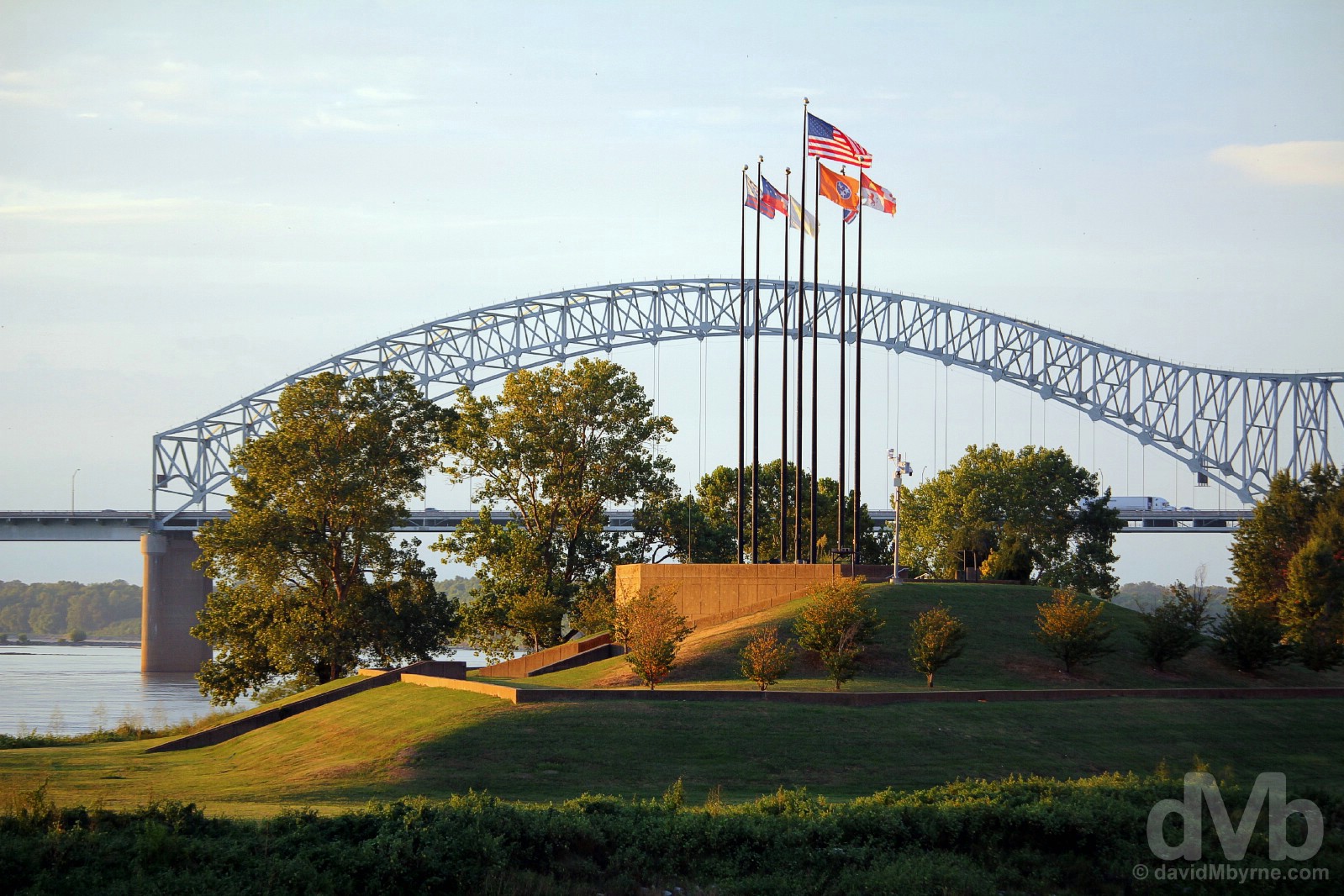
Sunset light illuminates a portion of the Hernando de Soto Bridge & flags on Mud Island as seen from the banks of the Mississippi River in Memphis, Tennessee, the largest city in the US on the Mississippi River. September 18, 2016.
State Nickname – The Volunteer State. State Motto – Agriculture and Commerce. Admitted To The Union – June 1796 (16th state). Population – 6.6 million Tennesseans (17th most populous state). Area – 42,100 sq miles (36th largest state). Capital – Nashville. National Parks – 1 (Great Smoky Mountains). National Scenic Byways/All-American Roads – 4/1. Famous For – Music; Jack Daniel’s; Elvis & Graceland; the birthplace of the Ku Klux Klan. State Highlights – Bluesy Memphis, Nashville honky-tonks & the Great Smoky Mountains. Tennessee Titbits – The name ‘Tennessee’ originated from the old Yuchi Indian word ‘Tana-see’ meaning ‘The Meeting Place’; it was the last state to secede from the Union prior to the outbreak of the Civil War and the first state to be readmitted after the war. One gets the impression it never wanted to leave; Tennesseeans are sometimes referred to as Butternuts, a tag which was first applied to Tennessee soldiers during the Civil War because of the tan color of their uniforms; Tennessee has more than 8,600 caves, the most of any US state; the state ties with Missouri as the most neighbourly state in the US – it is bordered by 8 states; Tennessee won its nickname as The Volunteer State during the War of 1812 when volunteer soldiers from Tennessee displayed marked valor in the Battle of New Orleans; Nashville’s Grand Ole Opry is the longest continuously running live radio program in the world. It has broadcast every Friday and Saturday night since 1925; the state is divided into 3 distinct geographical regions, a.k.a. Grand Divisions, legally defined social & cultural regions known for their distinctive musical heritage and as represented by the three stars on the state flag – Bluegrass (eastern Great Smoky Mountains), Country & Western (rolling central hills), & Blues (western lowlands); the state has not one, not two but 9 different official state songs. Yes, music rules ‘round these parts y’all!
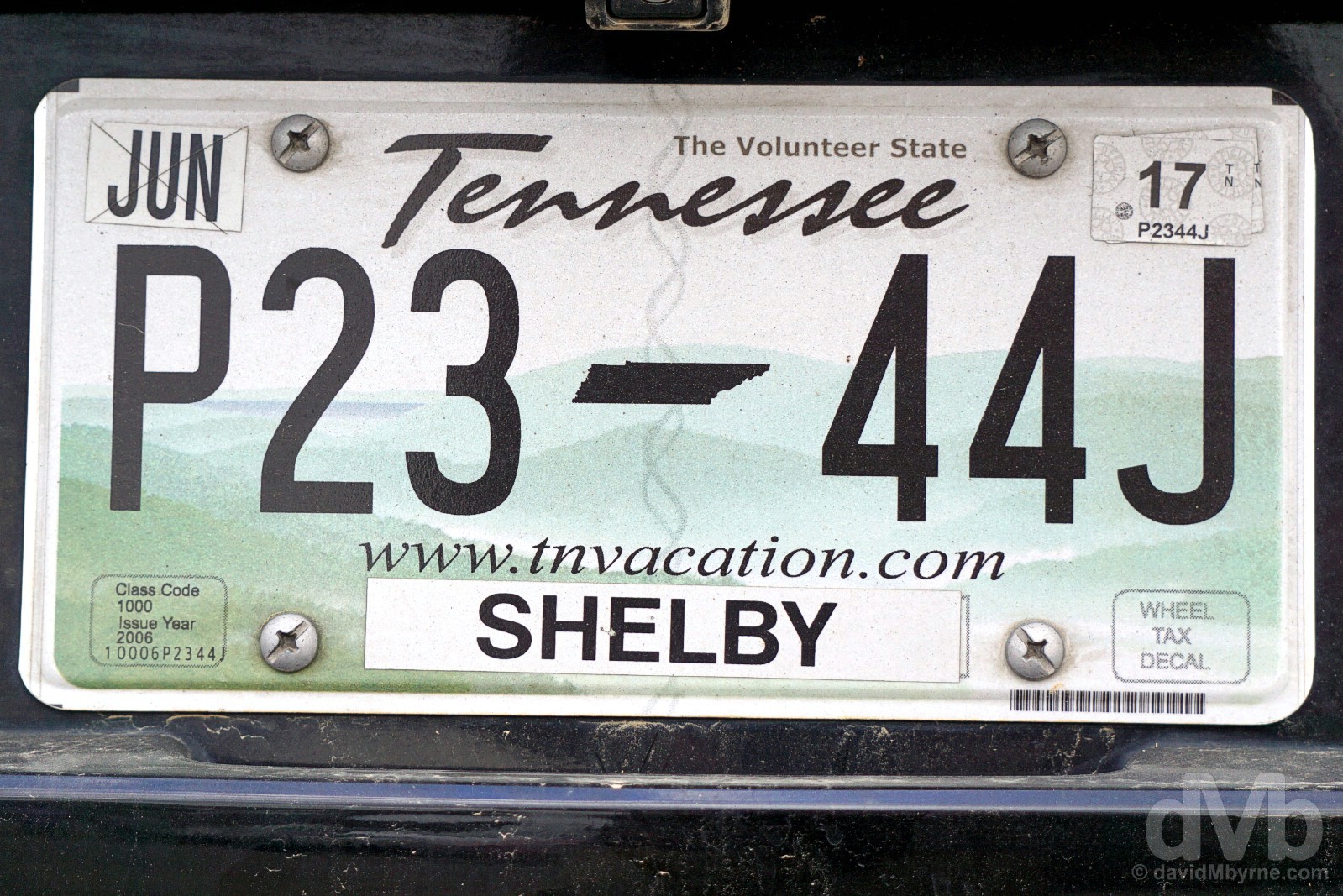
Tennessee. State #16. Memphis, Tennessee. September 18, 2016.
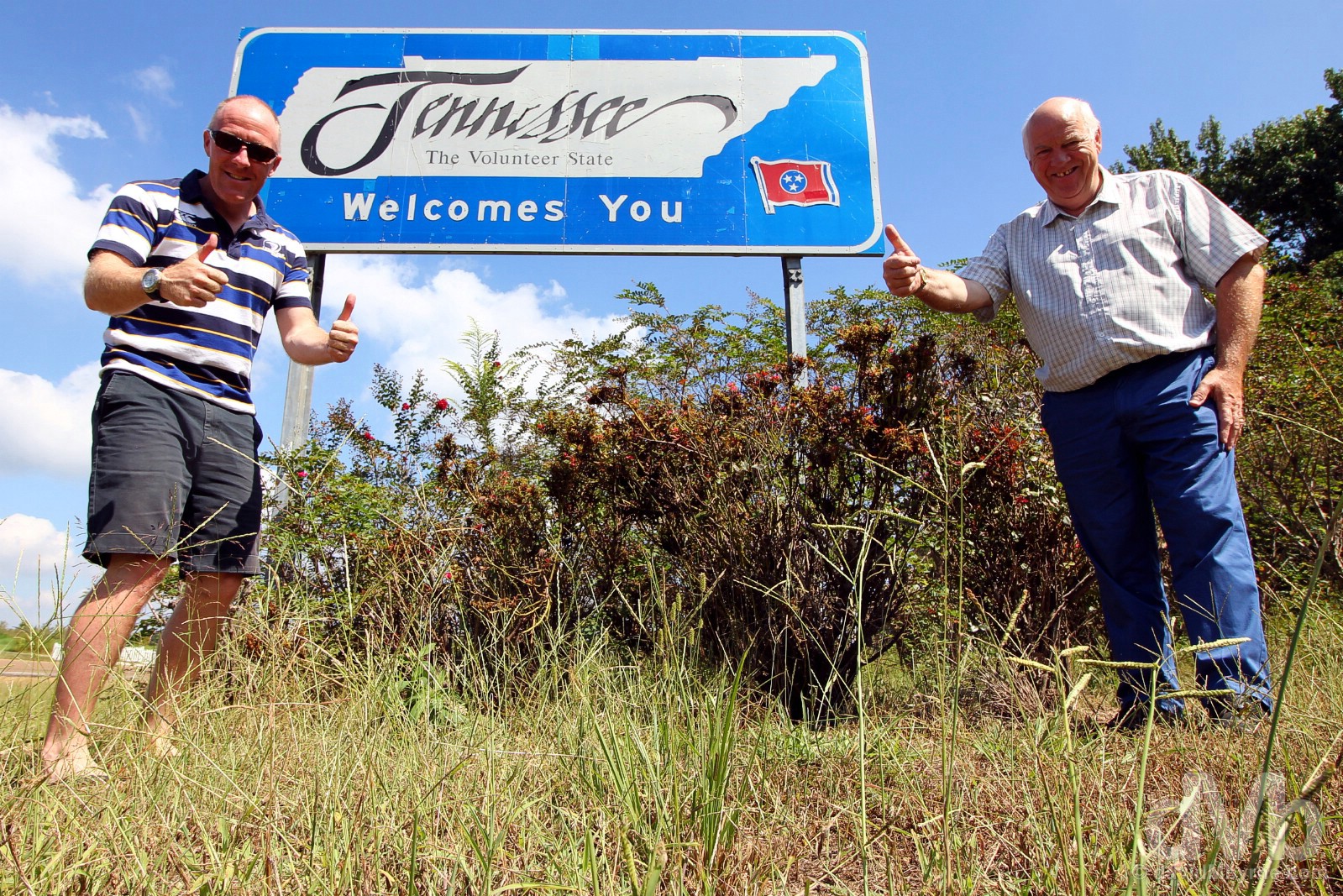
State sign #16 || At the Tennessee-Mississippi state line on US Highway 61. September 19, 2016.
– TNVacation.com
West Tennessee Tunes In Memphis, Home Of The Blues & The Birthplace Of Rock ‘N’ Roll
Yes, it’s all about the music here in Tennessee. Bluegrass and Country-and-Western get the feet tappin’ elsewhere (eastern & central Tennessee respectively) but here in the low, steamy west it’s all about rock ‘n’ roll & the Blues: Memphis, specifically its touristy Beale Street, is considered by many to be the home of the Blues & Elvis, among others, found fame here after walking into the city’s iconic Sun Studio (& of course he’s still here buried on the grounds of his Graceland mansion, one of the city’s must-sees). Some come here for food (the BBQ ribs & crispy catfish platters are legendary), some for the music. Most come for both; it’s an addictive mix.

Hard Rock Cafe at dusk on Beale Street, Memphis, Tennessee. September 18, 2016.
Standing down on the banks of the mighty Mississippi River tonight was our third time on this road trip to find ourselves by Old Man River – after Minneapolis on day 3 & St. Louis on day 21 – but it never looked as good as it did tonight. The golden hour makes everything look better.
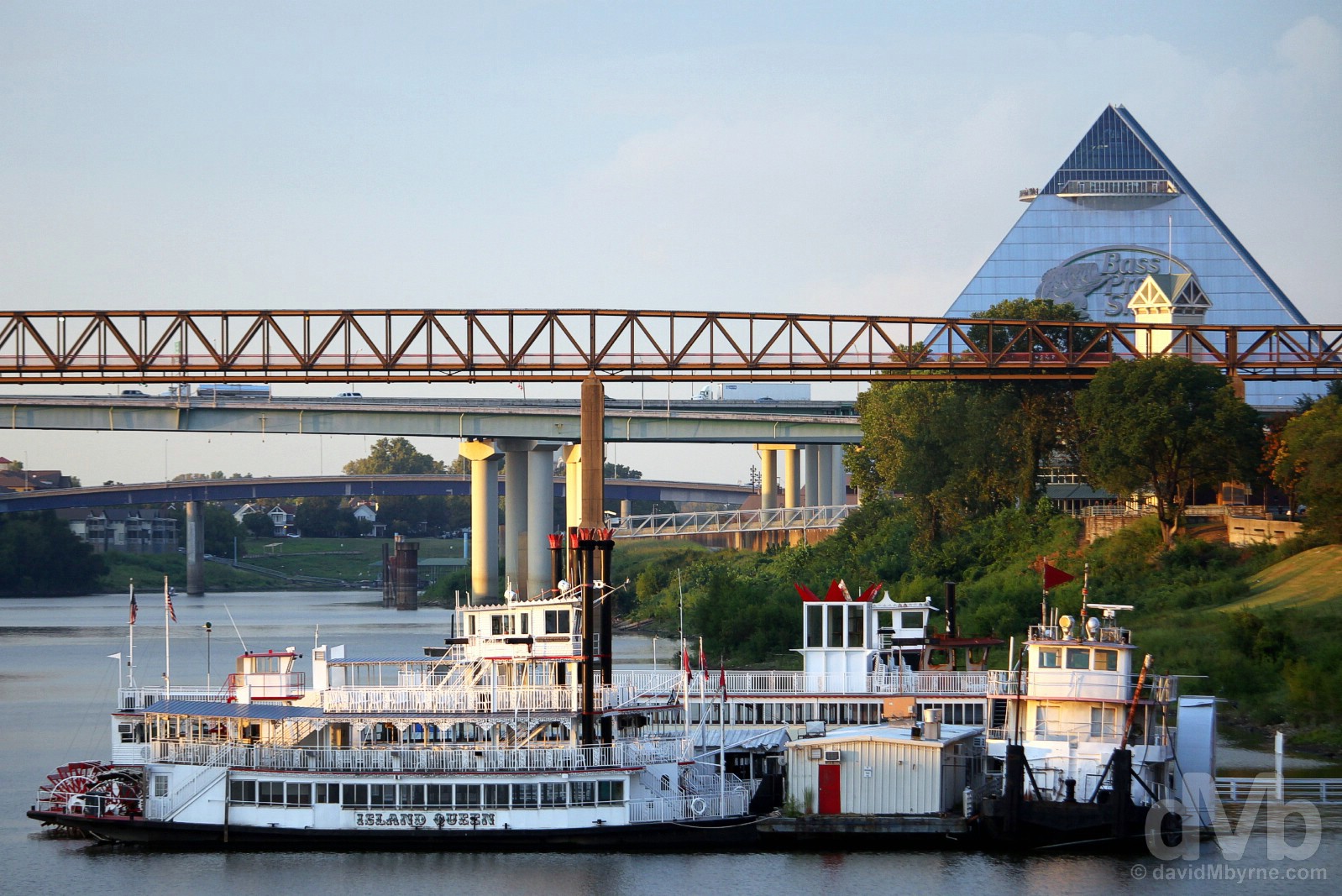
Fading light & paddle steamboats moored on the Mississippi River as seen from Beale Street Landing riverside park. In the distance is one of the city’s most distinctive buildings, the 321-foot-high (98 metre) Memphis Pyramid. Dominating the Mississippi waterfront, it was built as a 20,000-seat arena in 1991 as homage to the city’s namesake in Egypt, the land of pyramids. Both an eyesore & something of a massive White Elephant, it sat idle – just one of many abandonment Memphis landmarks – between 2007 and 2015 when it re-opened as shopping & entertainment complex boasting an outdoor observation deck at its apex. Memphis, Tennessee. September 18, 2016.
Memphis Memories & Improvements
After 22 days and 6,616 miles of road, Memphis is the first location of this road trip that I’m familiar with having first visited back in early August of 2003. Memphis has been busy in the intervening years and seems to have cleaned itself up a bit. Forever battling an image problem of rampant poverty & urban neglect, the post-Civil War collapse of the cotton trade in the nearby Mississippi Delta hit the city hard, its inexorable decline sealed by yellow fever outbreaks in 1878 & 1879 that killed almost 6,000 and caused most whites to flee – at the time Memphis was a breeding grounds for mosquitoes and one of the filthiest cities in the US. Named after the capital of ancient Egypt, some non-touristy parts of the city may very well still rival anything disheveled Luxor, for example, can throw at a visitor, but from what I’ve seen of the city this evening it’s clear that Memphis has made efforts of late to clean up its act.
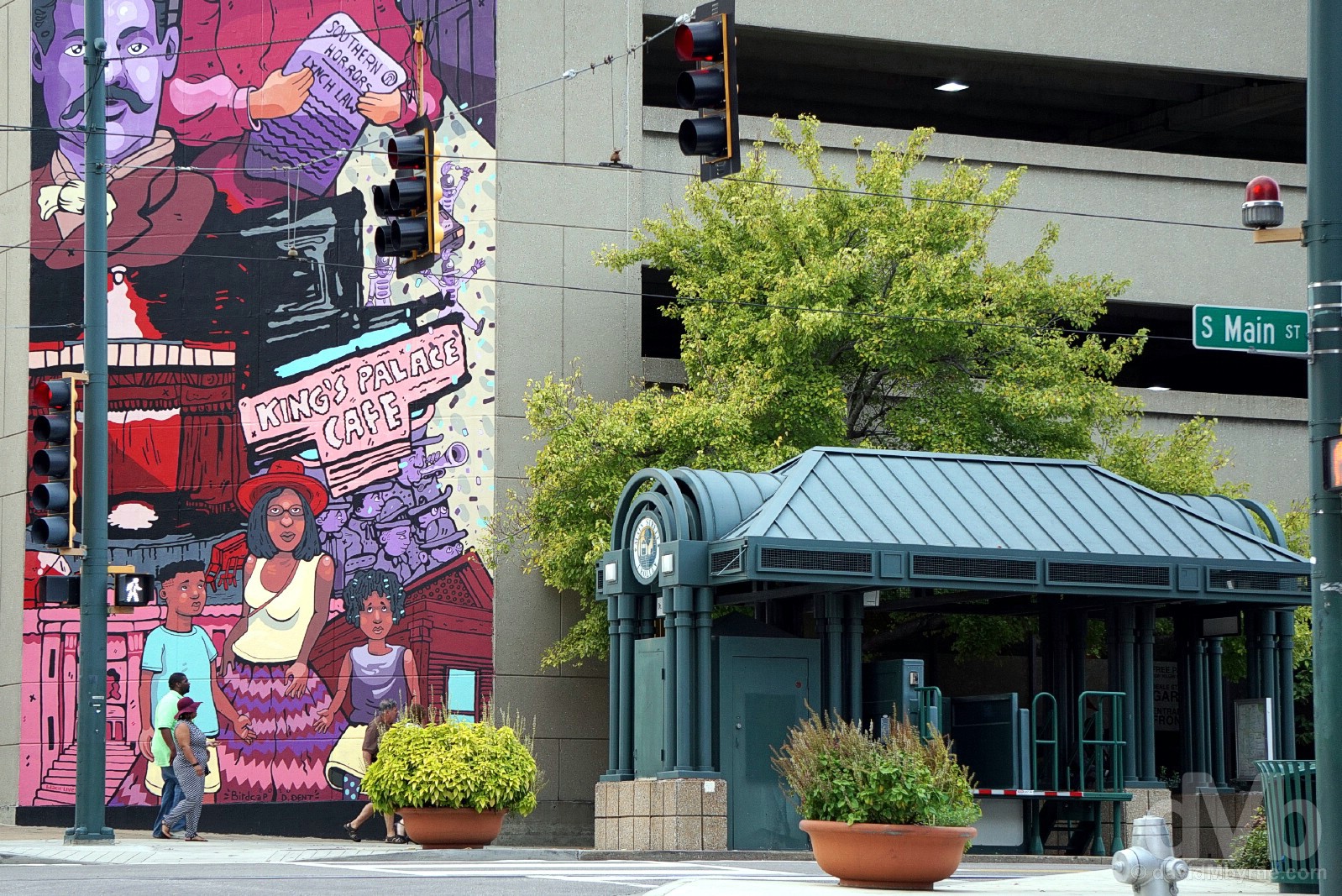
We visited the corner of S Main Street & Dr. M. L. King Jr. Ave in Downtown Memphis to catch a glimpse of the redbrick Hotel Chisca. It was a studio in the mezzanine of the hotel that legendary DJ Dewey Philips, on July 8, 1954, first spun a tune by an then unknown teenager named Elvis Presley. Recorded three days earlier just up the road in the city’s Sun Studio, the reaction to the song – ‘That’s All Right’ – was so overwhelming that by the end of the night Philips had spun the record over a dozen times & had called Elvis in for a live on-air interview. The rest, as the saying goes, is history. One of the landmark buildings in the city that suffered through years of abandonment, Hotel Chisca now seems to have been given a new lease of life; while it has received something of a refurbishment of late it still lies mostly unused meaning the murals across the road on the corner of S Main & Linden Ave proved much more photogenic. Memphis, Tennessee. September 18, 2016.
A short walk from Hotel Chisca is legendary Beale Street, the home of the Blues.
Beale Street – Touristy Blues
Abandoned for years following yellow fever outbreaks and revived somewhat by the African American community, the city’s Beale Street became a hub of black social and civic activity in the early 1900s becoming an early centre for what was to become known as blues music and cementing the city’s place in American music firmament.
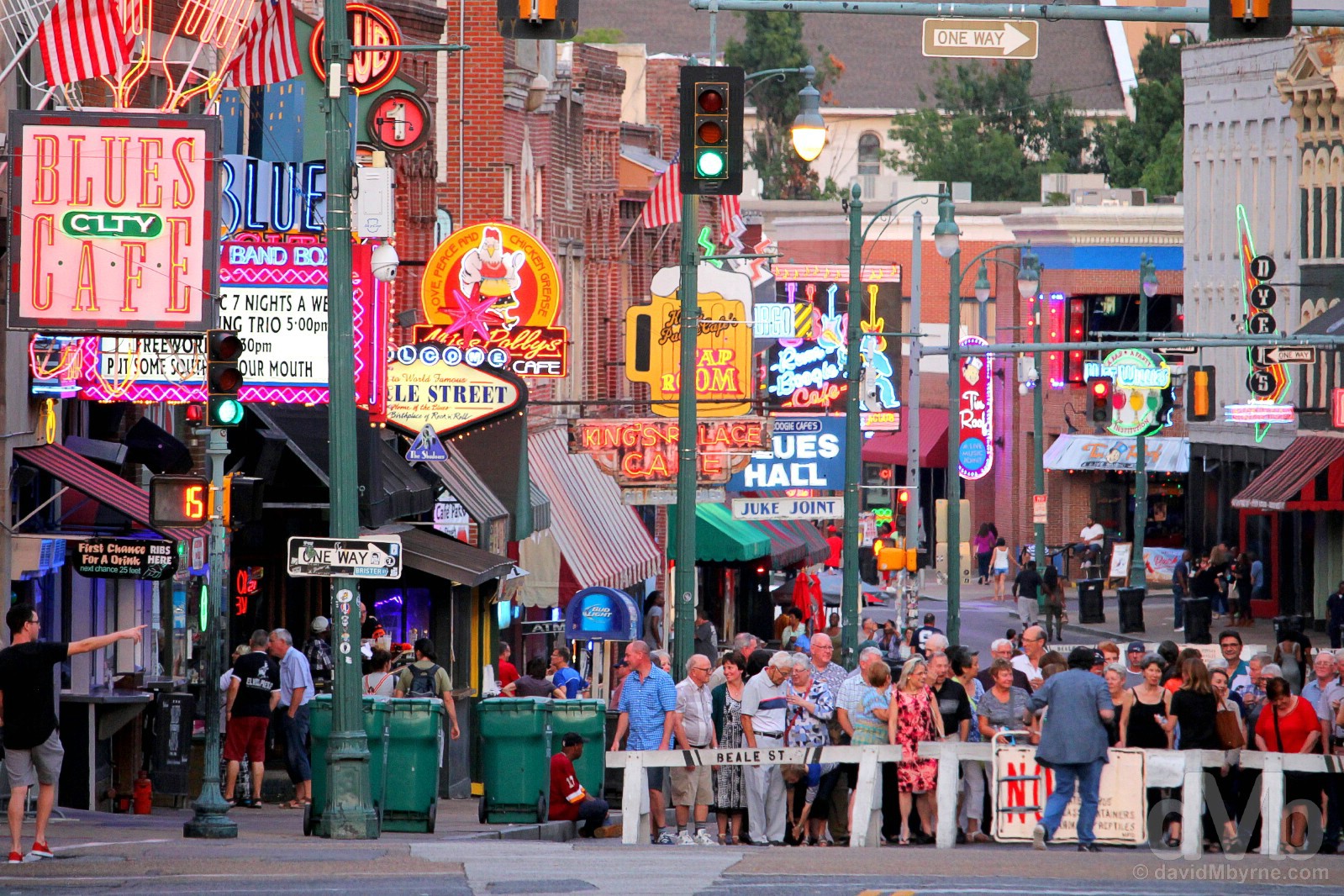
Tourists, blues & BBQ. Beale Street, Memphis, Tennessee. September 18, 2016.
Beale Street became the hub of the black community in the South. The Blues were everywhere! Every night club, dance hall, gambling place and den of iniquity had a stage with music – every night. Every street corner had a jug band that played for pennies. The Street was coursing with energy! It was alive!
To a Bluesman, Beale Street was like New York’s Broadway for an actor. If you could make it here – you could make it anywhere! And, if you hadn’t played Beale – who were you!
– Reproduced from the Birthplace Of Rock ‘N’ Roll pamphlet in Sun Studio, Memphis
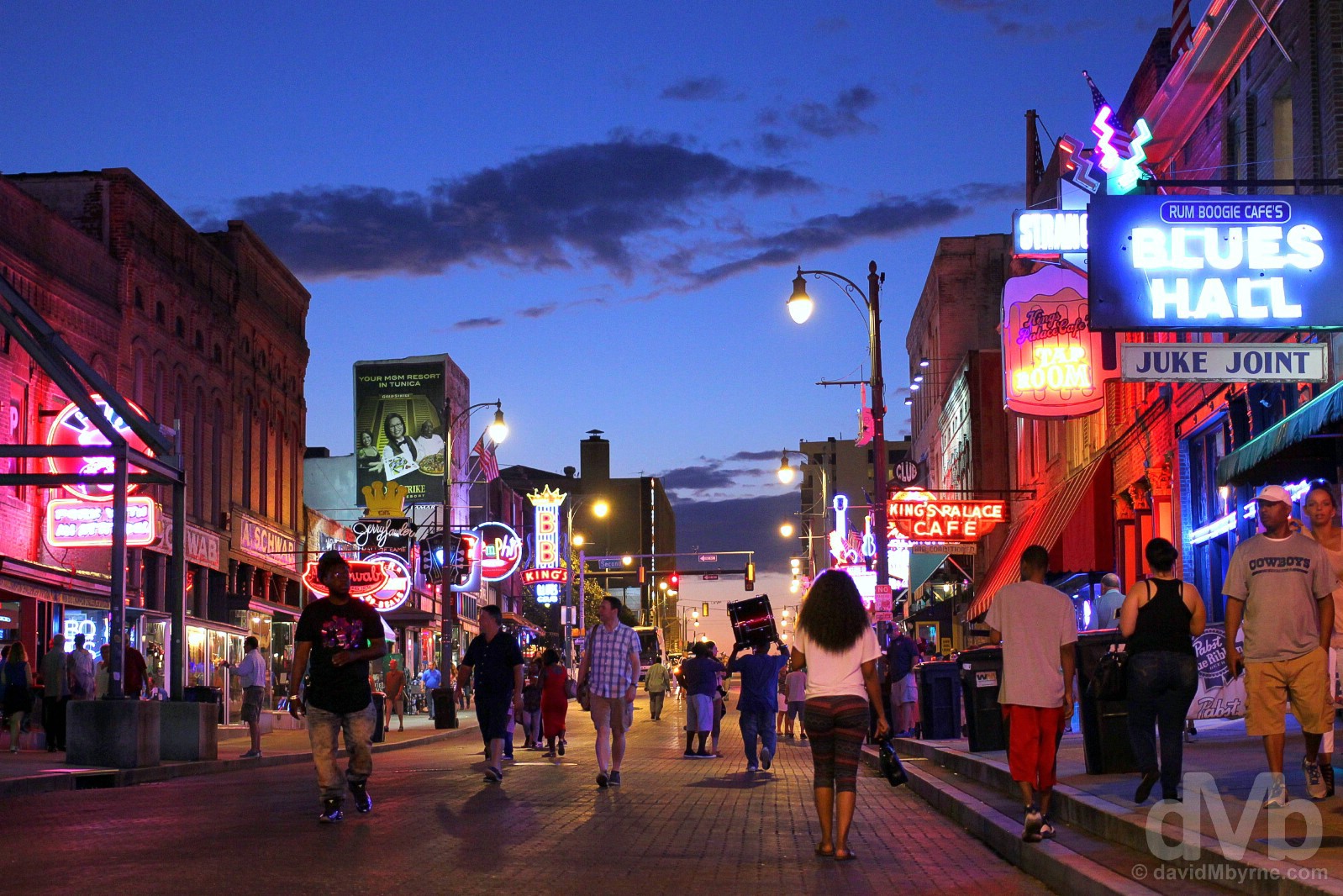
Shamelessly touristy and with a rustic & rough-around-the-edges look & feel (unmistakably Southern, Beale Street looks & feels markedly different to anything we’d experienced north of here). Nonetheless, the street has undeniable character and for blues aficionados there really is nowhere else quite like it. While Beale Street stretches for just under 3 kilometres in total, it’s the short, 1-block, 100-metre-long pedestrianised stretch between S 2nd Street & South B.B. King Boulevard that most associate with Beale Street. A buzzing carnival zone most hours of the day, the street especially comes alive after dark when the wall-to-wall neon shines brightest, the street performers are doing their thing and the smell of BBQ & rhythmic sound of blues emanating from almost every premises seem to carry further on the warm evening breeze. Dusk on Beale Street, Memphis, Tennessee. September 18, 2016.

Beale Street, Memphis, Tennessee. September 18, 2016.
– TNVacation.com
We ended Epic US Road Trip day 22 on Beale Street, absorbing the ‘Memphis Sound’ on this particular sticky Sunday evening. We’ll continue south tomorrow down into the Delta of neighbouring Mississippi, but not before continuing & finishing the pilgrimage here in musical Memphis.
Image ||Colourful Main Street Yazoo City, Mississippi.
“The brightly-painted, colourfully restored or renovated buildings certainly meant Main Street Yazoo City was 1) worth the visit & 2) as pretty as advertised, especially in the late afternoon light of this day.”
Day 23 || September 19 2016
Route || Memphis to Vicksburg, Mississippi (via Clarksdale, Yazoo City & Bentonia, Mississippi)
Miles (Kilometres) Driven || 308 (496)
Posted From || Vicksburg, Mississippi
Today’s Highlight || Slow Mississippi Delta towns
The temperature went up as we went south, south down through the cotton fields and abandoned & generally unkempt-looking blues towns of the famed Mississippi Delta. Maybe it’s the heat but things really do move at a glacial pace down here, assuming they move at all – to me it just looks like everything decays. We felt a million miles removed from the pace of life ‘up north’; even the roads and towns of the sparsely-populated Great Plains exhibited more life than what we saw in the Mississippi Delta today. Maybe it was our timing. After all, supposedly the Delta on a Monday adopts go-even-slower mode. After today I’d well believe it.
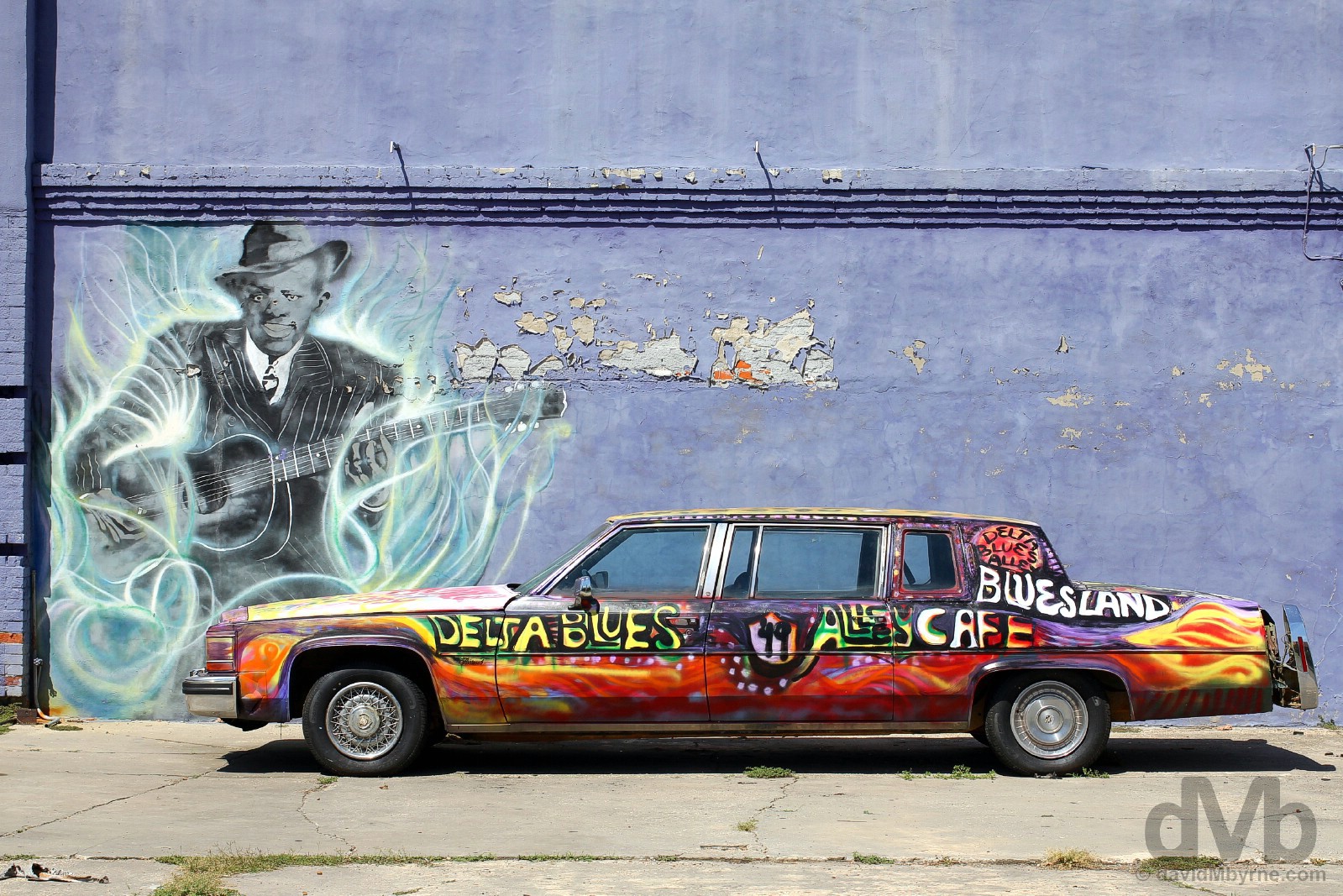
Plenty of colour. Just not many souls. Outside the Delta Blues Cafe on the corner of Delta & Blues Alley in Downtown Clarksdale, Mississippi. September 19, 2016.
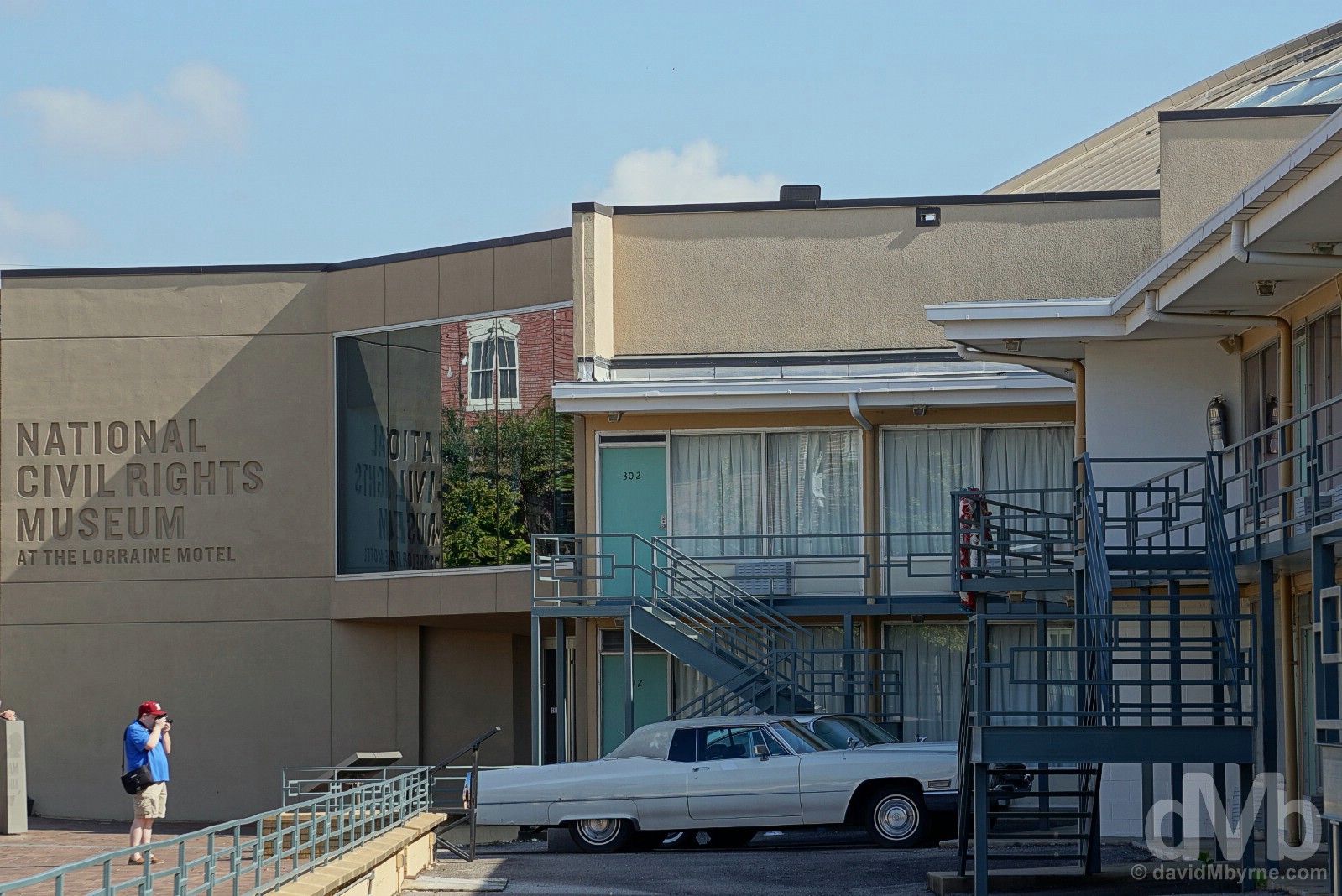
The National Civil Rights Museum at the Lorraine Motel, Memphis, Tennessee. September 19, 2016.
Martin Luther King & His Assassination At The Lorraine Motel
Born January 15 1929, the Reverend Dr Martin Luther King Jr. was senior pastor at Dexter Avenue Baptist Church in Montgomery, Alabama, and the most prominent leader of the Civil Rights Movement. He led the Montgomery Bus Boycott in 1955 following Rosa Park’s arrest and he helped found the Southern Christian Leadership Conference in 1957 while serving as its president. Of course he is most well-known for his August 1963 March on Washington where he delivered his famous ‘I Have a Dream’ speech. Soon after, in 1964, he won the Nobel Peace Prize for combating racial inequality through nonviolence and in March 1965 he helped to organise the Selma-to-Montgomery marches. He was in Memphis on April 4 1968, working on a campaign in support of city sanitation workers frustrated by unfair treatment & low wages, when, at 6.01 p.m., he was shot and killed on the balcony outside his Lorraine Motel room. He was 39 years of age.
– Text reproduced from an info board on display outside the Lorraine Motel
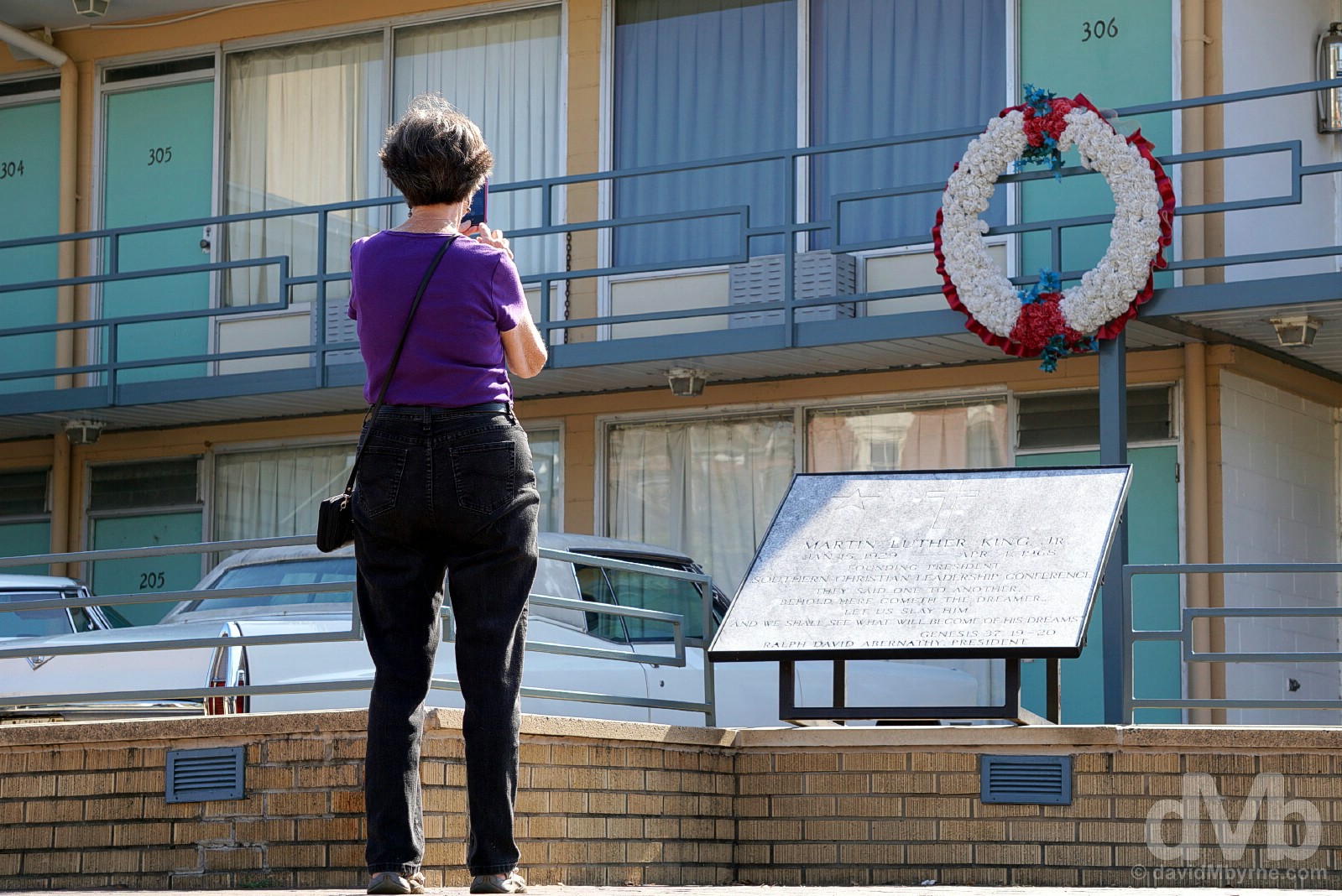
In the 1960s in this region of the segregated South most hotels were white-only. African American proprietors meant the city’s modest Lorraine Motel, first built in the 1920s, was welcoming to blacks – performers on Beale Street, just 5 blocks away, such as Wilson Picket, Aretha Franklin, Ray Charles, and Otis Redding were regulars over the years. Business slumped after King’s assassination and the motel closed. It was eventually bought, in 1982, by local black community leaders who worked to save it from destruction and to turn the site into the National Civil Rights Museum. Opened in 1991 and extensively renovated between November 2012 and April 2014 (the motel & museum complex is much better presented than I remember it being in 2003, another area of Memphis that has been spruced up), the museum offers an in-dept look at the movement that thrust King into the spotlight and ultimately changed America. The exterior of the motel and two preserved rooms, King’s room 306 & neighbouring 307, remain much as they were on that evening in April 1968; the vintage cars in the parking lot represent the vehicles parked at the motel that evening; and the ever-present wreath on the balcony is a replica of the original placed here on April 8, 1968, during a memorial service. The Lorraine Motel, Memphis, Tennessee. September 19, 2016.
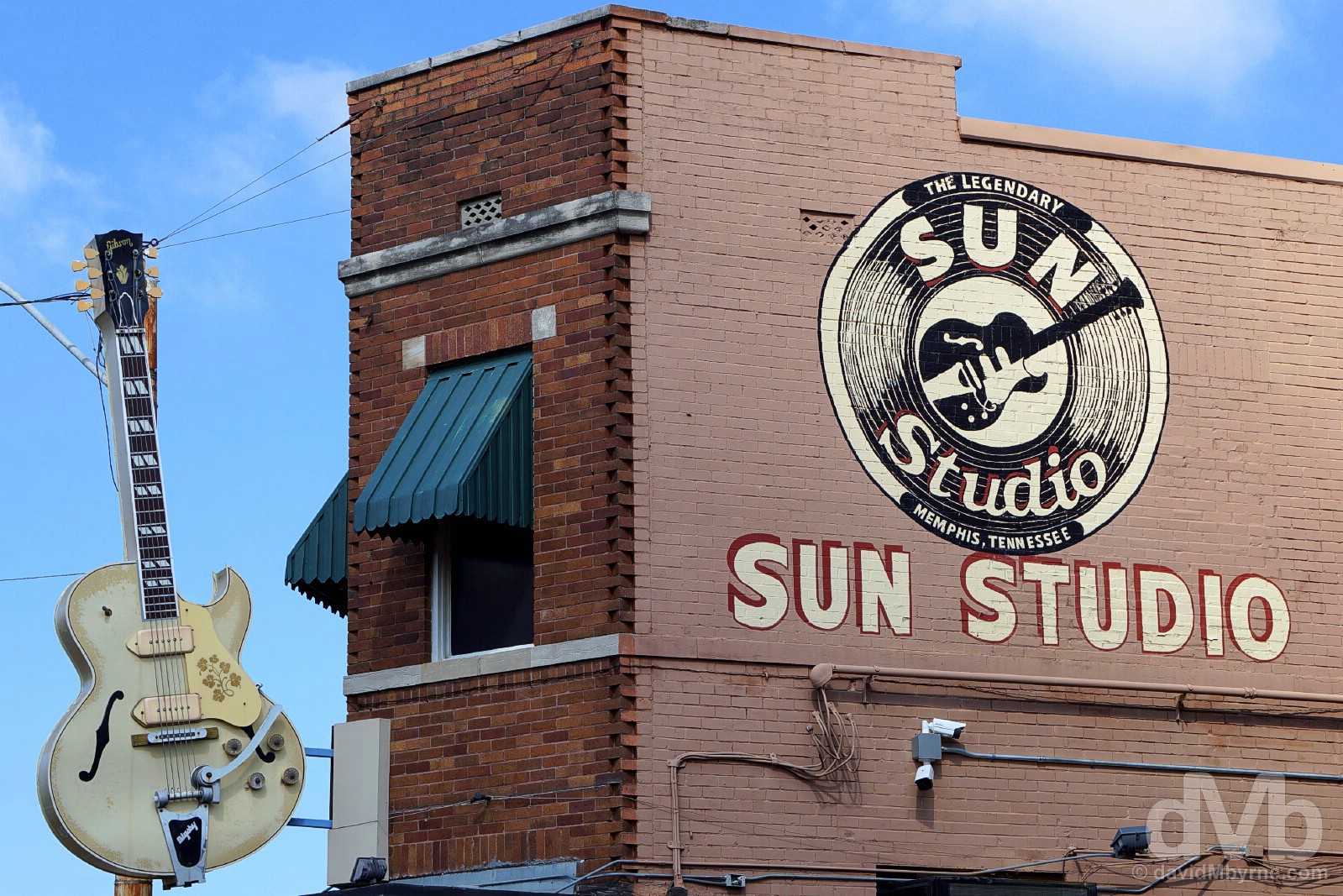
The exterior of Sun Studio, Memphis, Tennessee. September 19, 2016.
Sun Studio
I’ll freely admit to not fully appreciating the historic clout of this place, that was until such time as I walked through the doors and joined the awesome hour-long tour. Sun Studio, the birthplace of rock ‘n’ roll, was founded by Sam Phillips in 1950 in a bid to record the music all around him. Nobody could have foreseen the success the studio would go on to enjoy as this little one-man recording studio in an unremarkable – until then – Southern town would inexplicably create music genres and launch many a music legend – Jerry Lee Lewis, Johnny Cash, Carl Perkins and of course Elvis, who got his break here in 1953, would all hit the (very) big time as a result of laying down pioneering sounds in Sun Studio’s now legendary recording studio.

The Sun Studio tour was/is awesome. It starts in the tight confines of the memorabilia & photo-heavy room upstairs where the names of blues icons BB King, Ike Turner and Howlin’ Wolf, among others, are brandied about with humorous abandon by the affable & knowledgeable tour guide. Scratchy original recordings from historic recording sessions are also played – including Elvis’ very first recording – and there’s even the original broadcast booth from which DJ Dewey Philips would broadcast his shows in the mezzanine of the city’s Chisca Hotel, recovered during the course of renovations on the hotel as recently as the summer of 2013. However, it was the time spent in the small recording studio that is the highlight of the tour for most. The studio, still a working recording studio to this day, has barely changed since the 50s and X marks the spot where many a legend has stood and recorded, with signed guitars & mounted photo present as proof. The most iconic photo of the lot, hanging on the wall beside where it was captured, is this, the so-called ‘Million Dollar Quartet‘ of (L-R) Jerry Lee Lewis, Carl Perkins, Elvis, and Johnny Cash. Elvis, then a nervous & shy 18-year-old who hung out on Beale Street having moved to the city from Tupelo, Mississippi, 5 years earlier, famously walked into Sun Studio looking for a recording gig in August 1953, sating ‘I don’t sound like nobody’ when asked who he sounded like. He was right, rock ‘n’ roll was born and the rest is history. The others followed in subsequent years, drawn, it is said, to Sun Studio after hearing Elvis on the radio. This iconic picture was captured on December 4, 1956. It was just a regular day in Sun Studio. Perkins was there recording & Jerry Lee was sitting in on the session piano. Cash dropped by to say hi to old friends, as did Elvis, a superstar signed to a mega deal with label RCA at this stage. Elvis headed for the piano and an old-fashioned barrel house session with barber shop harmony resulted. Sun recorded the whole thing, of course, and the Memphis Press Simitar ran the story with a picture titled ‘The Million Dollar Quartet’. In the recording studio of Sun Studio, Memphis, Tennessee. September 19, 2016.
– Reproduced from the Sun Studio Birthplace Of Rock ‘N’ Roll pamphlet
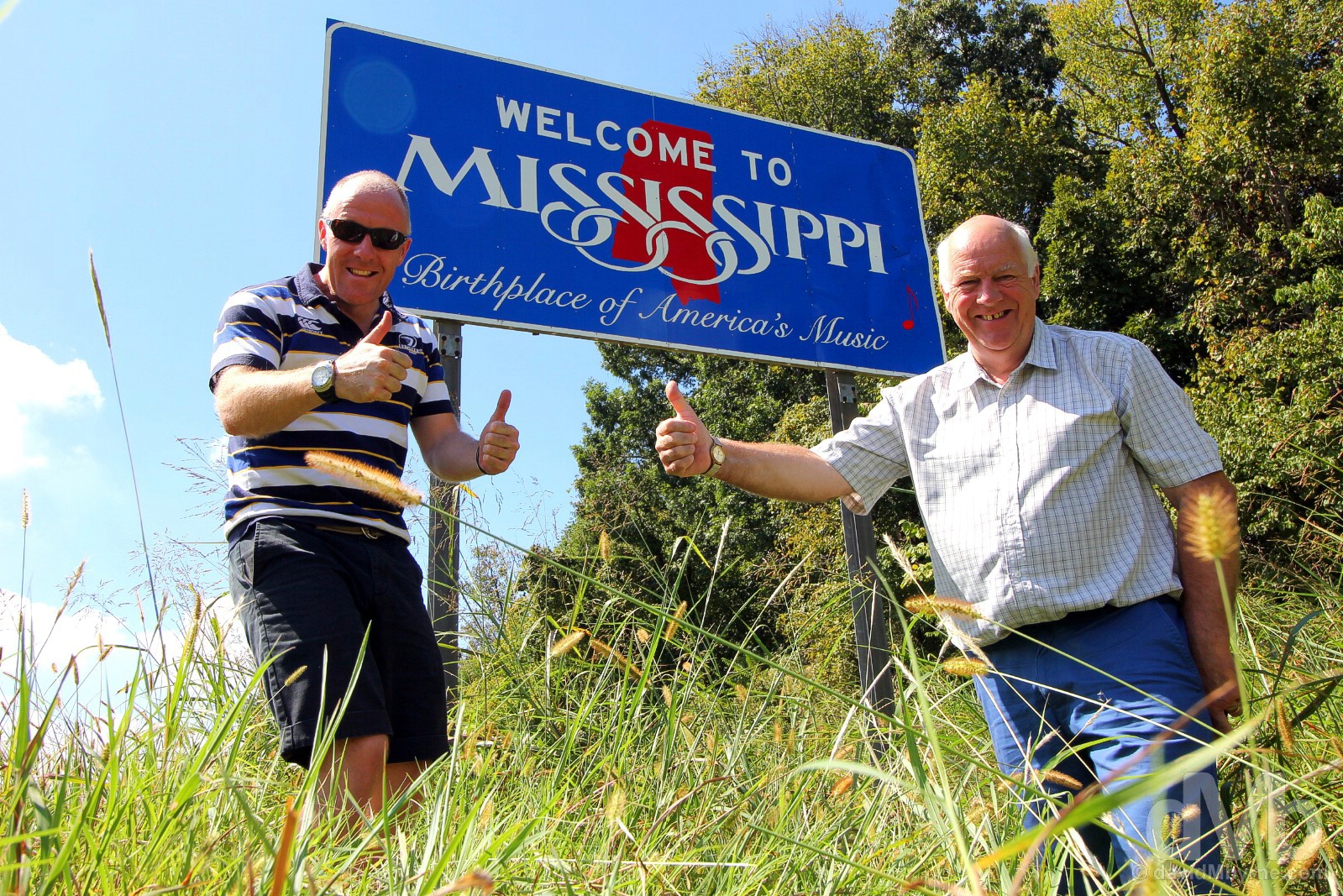
State sign #17 || At the Tennessee-Mississippi state line on US Highway 61. September 19, 2016.
State Nicknames – The Magnolia State; The Hospitality State. State Motto – Virtute et Armis (By Valor and Arms). Admitted To The Union – December 1817 (20th state). Population – 3 million Mississippians (32nd most populous state). Area – 48,400 sq miles (32nd largest state). Capital – Jackson. National Parks – 0. National Scenic Byways/All-American Roads – 1/1. Famous For – Cotton fields; rural country roads; poverty; Juke Joints; being the coolest state to spell out (M-I-S-S-I-S-S-I-P-P-I); the racist past & civil rights history; being the birthplace of Elvis (Tupelo); riverboats & the Mississippi Delta, birthplace of the Blues. State Highlights – Delta drives & authentic Juke Joints. Mississippi Titbits – Once one of the 5 wealthiest states off the back of slave-driven cotton production, now Mississippi is the poorest state in the US, ranking low on the list of nearly every national marker of economy and education; although majority white since the 1930s & the Great Migration, Mississippi, at almost 40%, still has the highest percentage of black residents of any US state; the entire state is lowlands with a mean elevation of just 300 feet (91 metres) above sea level and is thus susceptible to flooding; school corporal punishment is common in Mississippi; the first Coca-Cola was bottled in 1894 in Vicksburg, Mississippi; a slow state anyway, Sundays & Mondays in Mississippi, and especially in the Delta, are so-called slow days. Best not be in a hurry in this part of the Deep South.
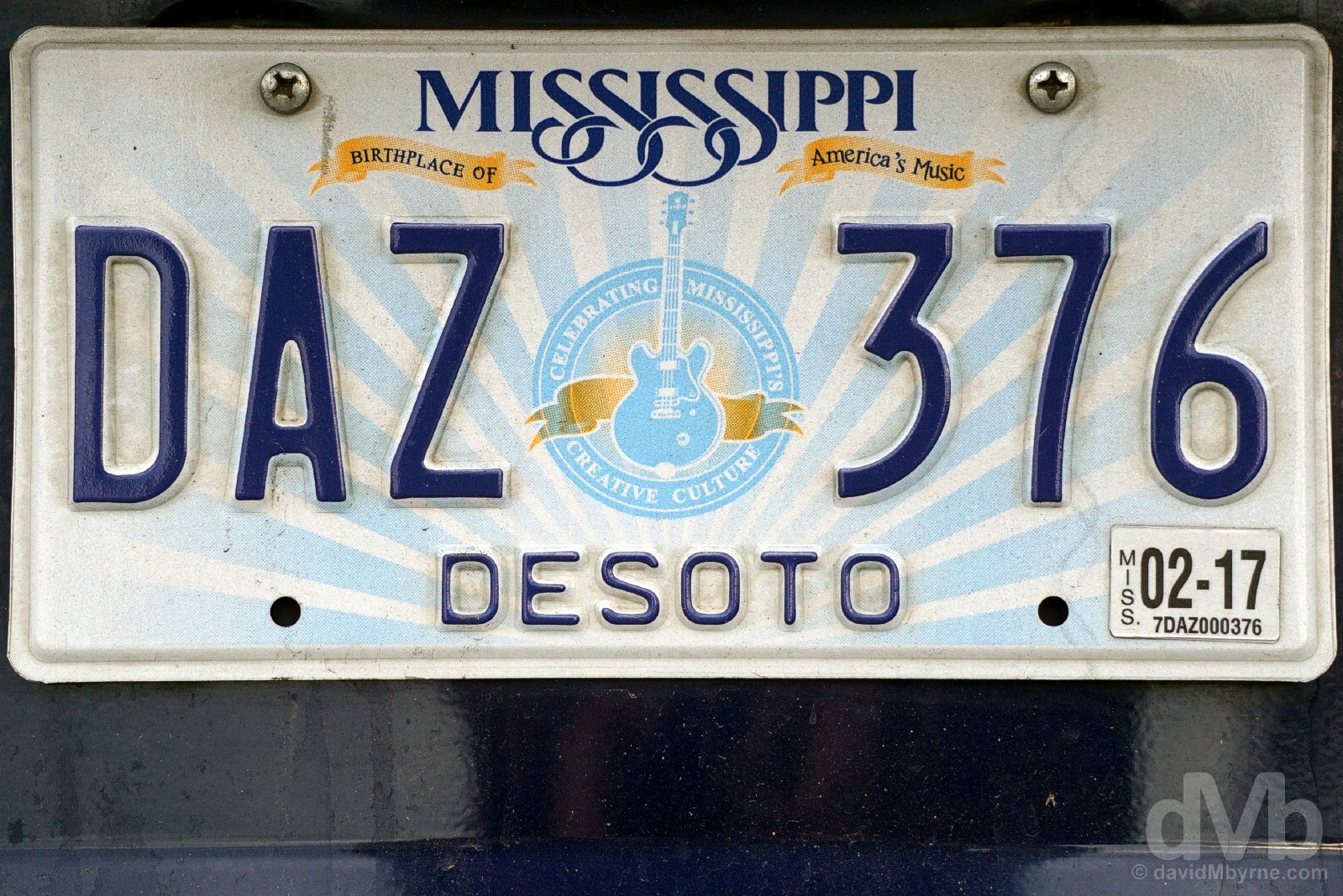
Mississippi. State #17. Clarksdale, Mississippi. September 19, 2016.
Crossing the state line into Mississippi also saw us officially entering the famed and distinctive Mississippi Delta. One of the most mythical places in the US and the birthplace of The Blues, this is a rural region of flat agricultural expanse that’s poor, susceptible to flooding and liberally dotted with funky blues-lovin’ towns. It has been called ‘The Most Southern Place on Earth’ (Southern in the sense of ‘characteristic of its region, the American South’) because of its unique racial, cultural and economic history – make no mistake, The Delta feels very different to anything experienced north of here. Two hundred miles long and seventy miles across at its widest point, the Delta is a 7,000 square mile (11,200 km²) region of alluvial floodplain sandwiched between the Mississippi River to the west and the Yazoo River to the east. The stereotypes come thick & fast and when crossing over the state line with Tennessee to the north it doesn’t take long to espy exactly what you expect to espy in the Mississippi Delta.
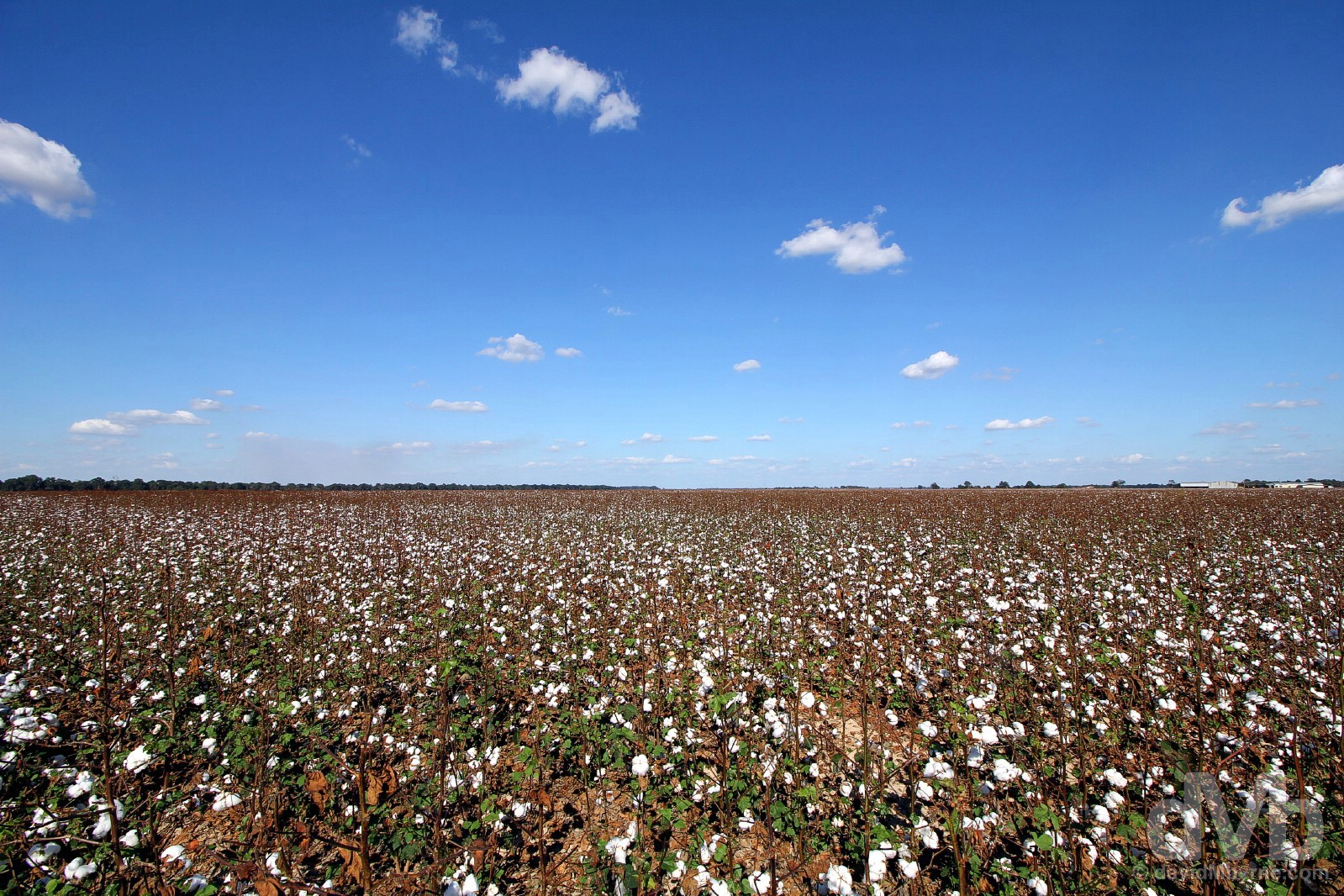
Iconic Mississippi Delta. Cotton. Lots of cotton. The endless cotton fields off US Highway 61, northern Mississippi. September 19, 2016.
Originally covered in hardwood forest, the Mississippi Delta was developed as one of the richest cotton-growing areas in the US prior to the 1861-1865 American Civil War; at the outbreak of the war Mississippi was one of the 5 wealthiest states in the US with white riverfront cotton plantation owners becoming wealthy off the back of enslaved African Americans who comprised the vast majority of the region’s pre-Civil War population. The war, which the slavery-advocating Confederate South lost to the Union North, wrecked the cotton trade and although it led to the abolition of slavery, African Americans, who would develop here the musical forms of blues and jazz, still remained disfranchised right up until after gains made by the Civil Rights Movement in the 1960s, a movement which brought much well-publicised violence to the state and the wider South. Today the Delta’s population, unlike the rest of the state, is still overwhelmingly black, and with the agricultural economy no longer what it used to be the Delta has been working hard at diversifying its economy, much like the rest of the state of Mississippi.

Only a few miles over the state line with Tennessee and the endless fields of cotton began stretching for miles on the flat plains of the northern Delta. It should have been but it wasn’t initially obvious what all the white stuff was. The penny soon dropped, I pulled over, went investigating and I soon found myself among the waist-high cotton plants, the blindingly-white soft & fluffy fiber of the cotton boll, or protective case, a marked contrast to the stiff & prickly cotton plant itself. I couldn’t help but thinking how cotton pickin’ in the heat of the Delta would have been an arduous & uncomfortable undertaking. Among the cotton fields off US Highway 61 in the northern Mississippi Delta. September 19, 2016.
The Southern Delta had plenty of pain… black slaves and white sharecroppers alike. Cotton was a brutal life. The music helped.
Whites had their music – melodic Celtic folk music that began the evolution to country music. Blacks brought a rhythmic, beat-driven music of ‘field hollers’, a call and response where one voice sings the lead and is answered by the rest in chorus.
It was in the black churches where the first blending of call and response with white music began to take place – African tradition interwove music and worship. Anglican hymns took on a totally new and different African rhythm.
– Reproduced from the Birthplace Of Rock ‘N’ Roll pamphlet in Sun Studio, Memphis
For some reason we got confused by the roads in and out of Clarksdale, the first of the three regional towns we visited today en route from Memphis to Vicksburg. Signage didn’t make sense and the roads themselves were almost deserted, leading us to believe that at times we were going somewhere we shouldn’t have been. After 22 days of effortless navigation along some 6,800 miles (11,000 kilometres) of US roads, the Mississippi Delta had us disorientated, at least until we figured things out. Yes, it is very different down here.
Clarksdale – The ‘Real Deal’
Probably the most revered blues town of them all, Clarksdale is, according to Lonely Planet, the ‘real deal’. This tiny Delta town still regularly hosts the cream of blues talent and the town itself is something of a blues Shangri-la with blues clubs & museums aplenty. Just don’t come callin’ on a Monday afternoon – the place will be as flatlined as anywhere else down here.
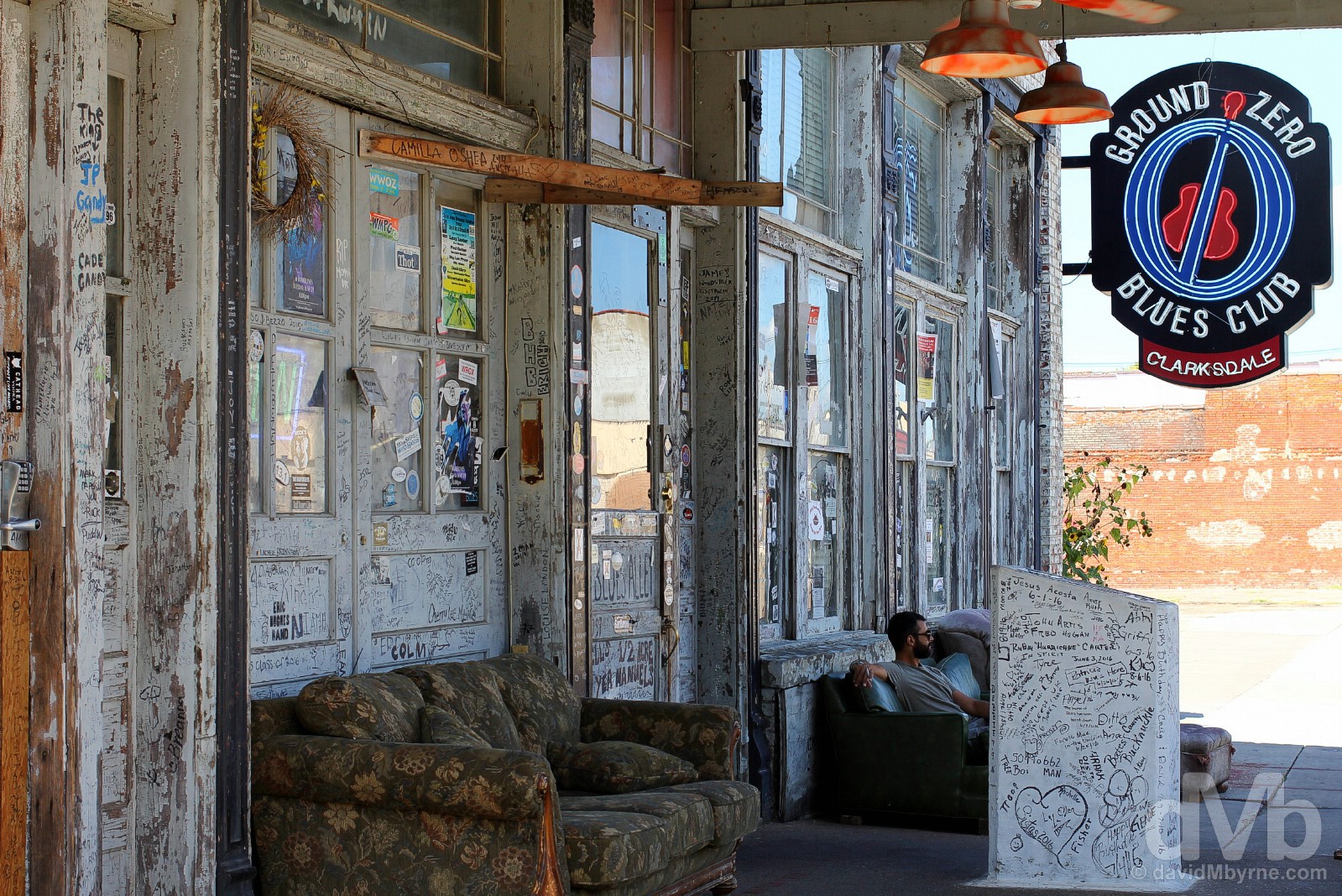
Closed. The graffiti-heavy porch of Clarksdale’s Ground Zero Blues Club. It opened in 2001 to celebrate the area’s rich blues heritage & to provide a forum in which it can continue through the showcasing of the best of today’s Delta Blues musicians. Named in 2005 as one of the ‘Top 100 Bars and Nightclubs in America’ and voted #1 blues club in the nation by BestBluesClub.org, the club is part-owned by Academy Award-winning actor and Mississippi Delta resident Morgan Freeman. Open Wednesday though Sunday, it was, of course, very much closed when we stopped by mid-afternoon on a Monday. But closed or no, it’s still a photogenic scene. Clarksdale, Mississippi. September 19, 2016.
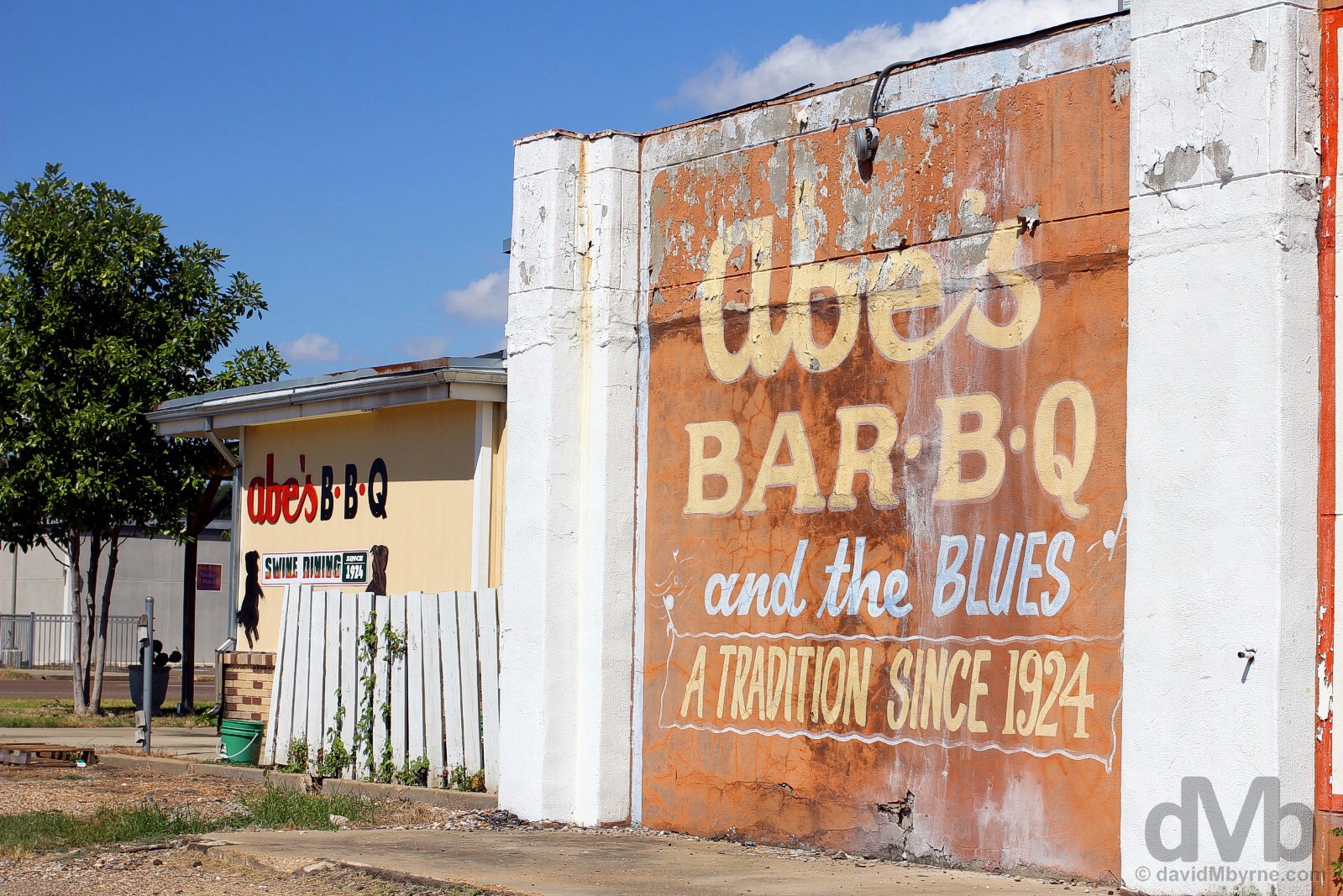
Located at ‘The Crossroads’ on the corner of US 49 & 61, where legend says that Delta blues king Robert Johnson sold his soul to the devil and the Blues was born, stopping off at Abe’s Bar.B.Q for a lunchtime Bar-B-Q Pork sandwich was always going to happen, assuming it was open on this sleepy Monday – mercifully it was. A Clarksdale institution, people have been ‘swine dining’ on Abe’s genuine pit BBQ since 1924, and have been returning over & over for just as long thanks to Abe’s so-called ‘Come Back Sauce’, or so it is claimed. Clarksdale, Mississippi. September 19, 2016.
Yazoo City
Deviating off US Highway 61, it’s a two-hour 100-mile Delta drive south from Clarksdale to Yazoo City. And given the fact that we were primarily in the Delta region because of Yazoo City then it was obviously a Delta destination of ours.
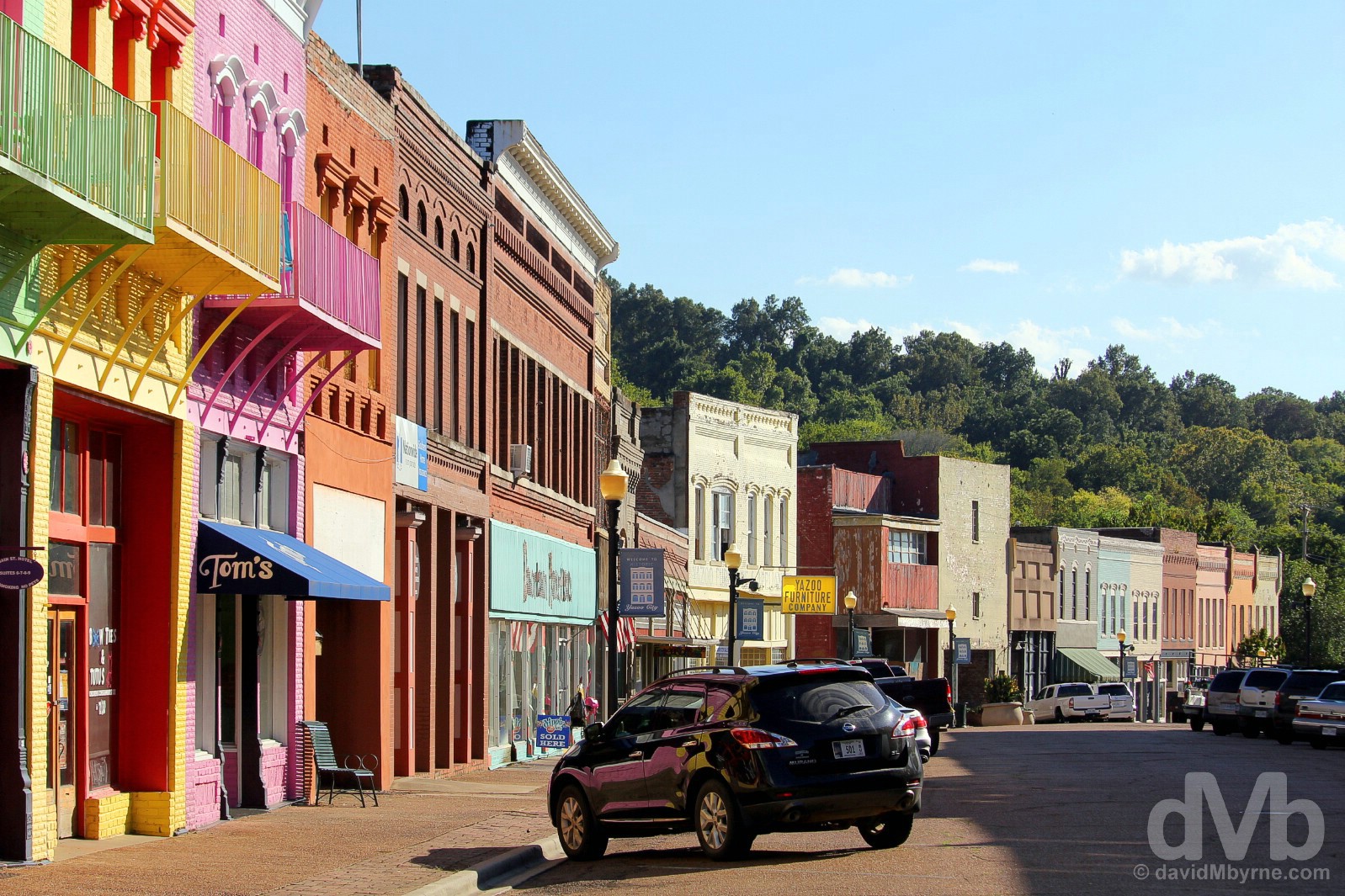
The good folk of @VisitYazoo reached out to me on Social Media when in the planning stages for this road trip, highlighting their beautifully rejuvenated Main Street. Maps were then referenced, distances calculated and a way was found to add the Mississippi Delta to the overall itinerary. The brightly-painted, colourfully restored or renovated buildings certainly meant Main Street Yazoo City was 1) worth the visit & 2) as pretty as advertised, especially in the late afternoon light of this day. Main Street, Yazoo City, Mississippi. September 19, 2016.
– VisitYazoo.org
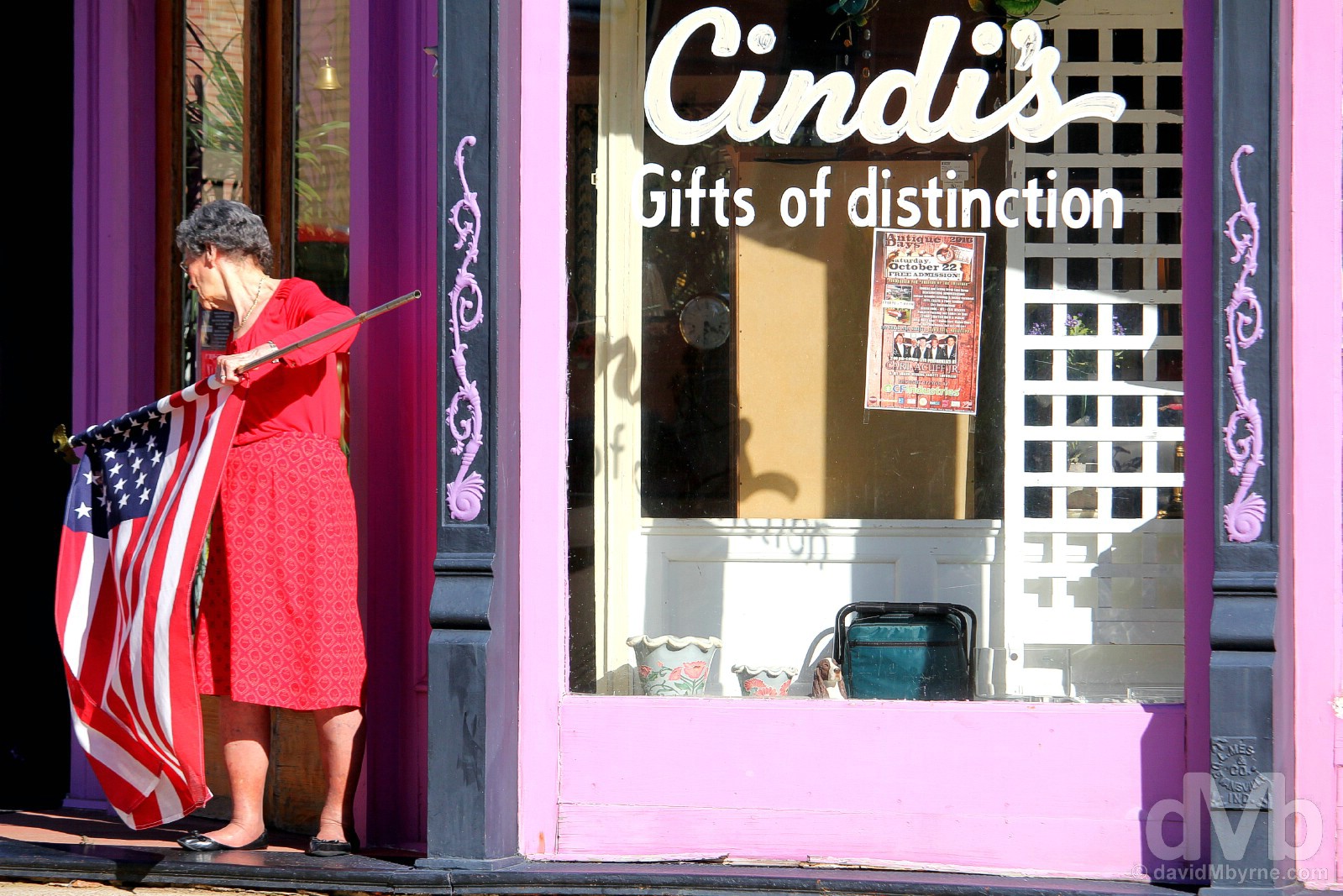
Closing up for the day? Cindi’s, Gifts of distinction. Main Street, Yazoo City, Mississippi. September 19, 2016.
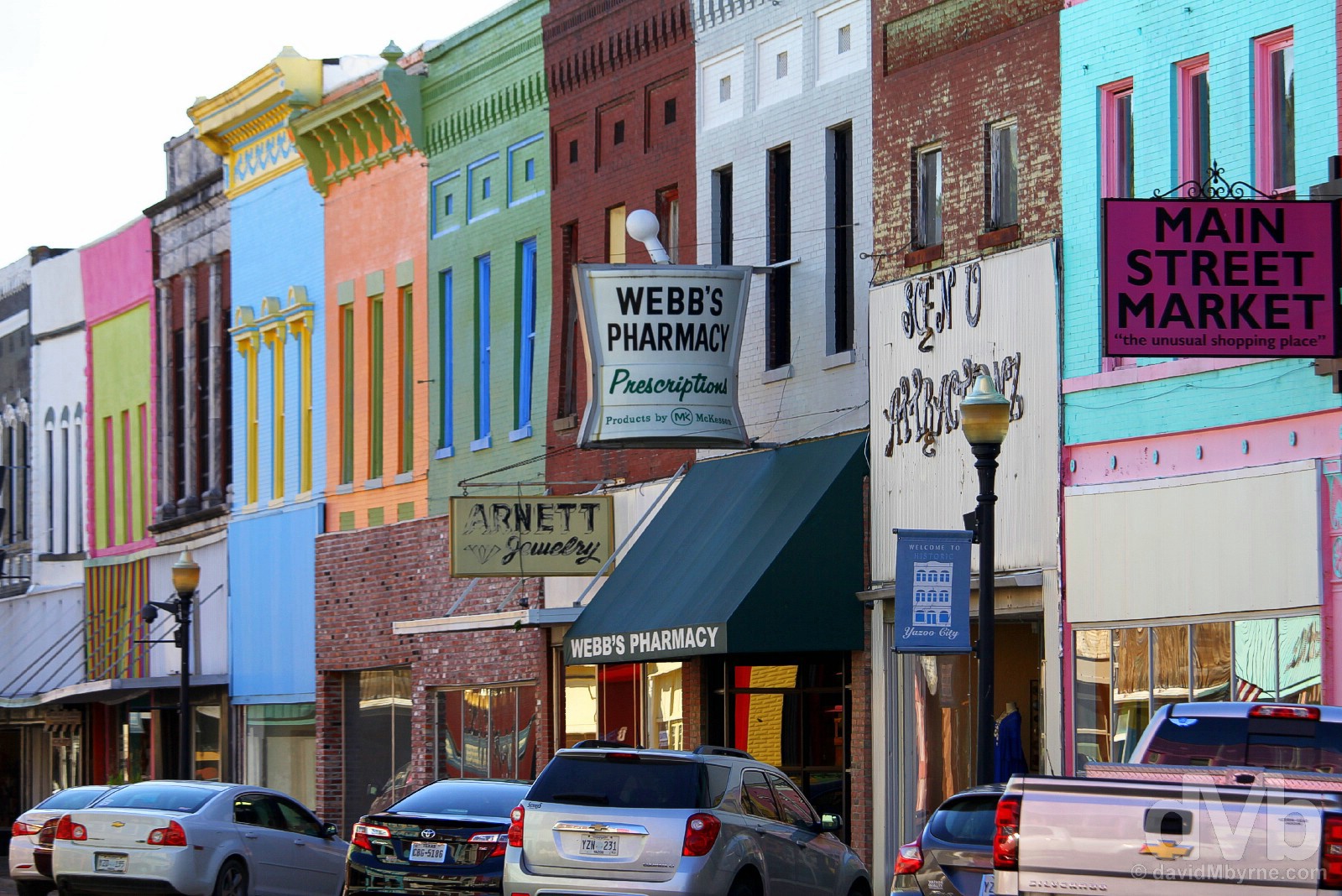
Less than a decade ago Yazoo City’s historic Main Street, the centrepiece of the National Register of Historic Places-listed Yazoo City Town Center Historic District, was in dire need of some upkeep – vacant buildings, most of which date to the early 1900s, were crumbling and ghost town status was fast approaching. Local business owners stepped in, purchased buildings, oversaw renovations and attracted business, all of which sees Yazoo City’s Main Street enjoying something of a renaissance, not that you would know it of course when visiting on a Monday afternoon; parked cars were plentiful but Main Street Yazoo City was just as quiet as everywhere else was today. Main Street, Yazoo City, Mississippi. September 19, 2016.
Bentonia & The Blue Front Cafe
Another Delta drive of some 16 miles southeast of Yazoo City brought us to Bentonia, a tiny town that boasts its very own unique ‘Bentonia-style’ of blues singing & guitar-playing. It’s also home to the oldest juke joint in Mississippi – and possibly the world – that is still in daily operation, the Blue Front Cafe.

It doesn’t look like much but that’s the shabby & rustic Juke Joint way. First opened in 1948 by locals Mary & Carey Holmes, in its early heyday the Blue Front Cafe was the spot for workers coming in from the fields for buffalo fish, drinks, music, haircuts and more. Forced to operate under a tangled set of local rules during the segregation era, the Blue Front couldn’t, for example, sell Coca-Cola, a product reserved for whites, while a 10 p.m. curfew was routinely ignored at the height of the cotton gathering and ginning season to serve shift workers around the clock. Music was often impromptu with bookings for acts rare and advertisements for performances even rarer. Carey Holmes died in 1970 with ownership of the Blue Front Cafe passing to his son Jimmy ‘Duck’ Holmes, the last surviving performer of the Bentonia style of blues. A popular attraction to this day for those in search of an authentic blues experience in a rustic setting, Jimmy continues to operate it as an informal down-home blues venue, one that has garnered international renown among blues enthusiasts. The Blue Front Cafe, Bentonia, Mississippi. September 19, 2016.
Juke Joints
As closely associated to the Mississippi Delta as cotton, Juke Joints are informal roadside shacks of the Delta where secular music, suggestive dancing, eating, drinking, and, in some cases, gambling & prostitution were the norm – juke means ‘wicked and disorderly’ in Gullah, a creole of English & various African languages spoken on a group of islands off the southern coast of the US. They catered to a rural work force that began to emerge after the emancipation, plantation workers and sharecroppers that needed a place to relax and socialize following a hard week, particularly since they were barred from most white establishments by Jim Crow laws. Most classic bona fide juke joints, often in ramshackle buildings or private houses located at rural crossroads or on the outskirts of towns, are mostly male hangouts, African American neighbourhood clubs where outside visitors are a rarity.
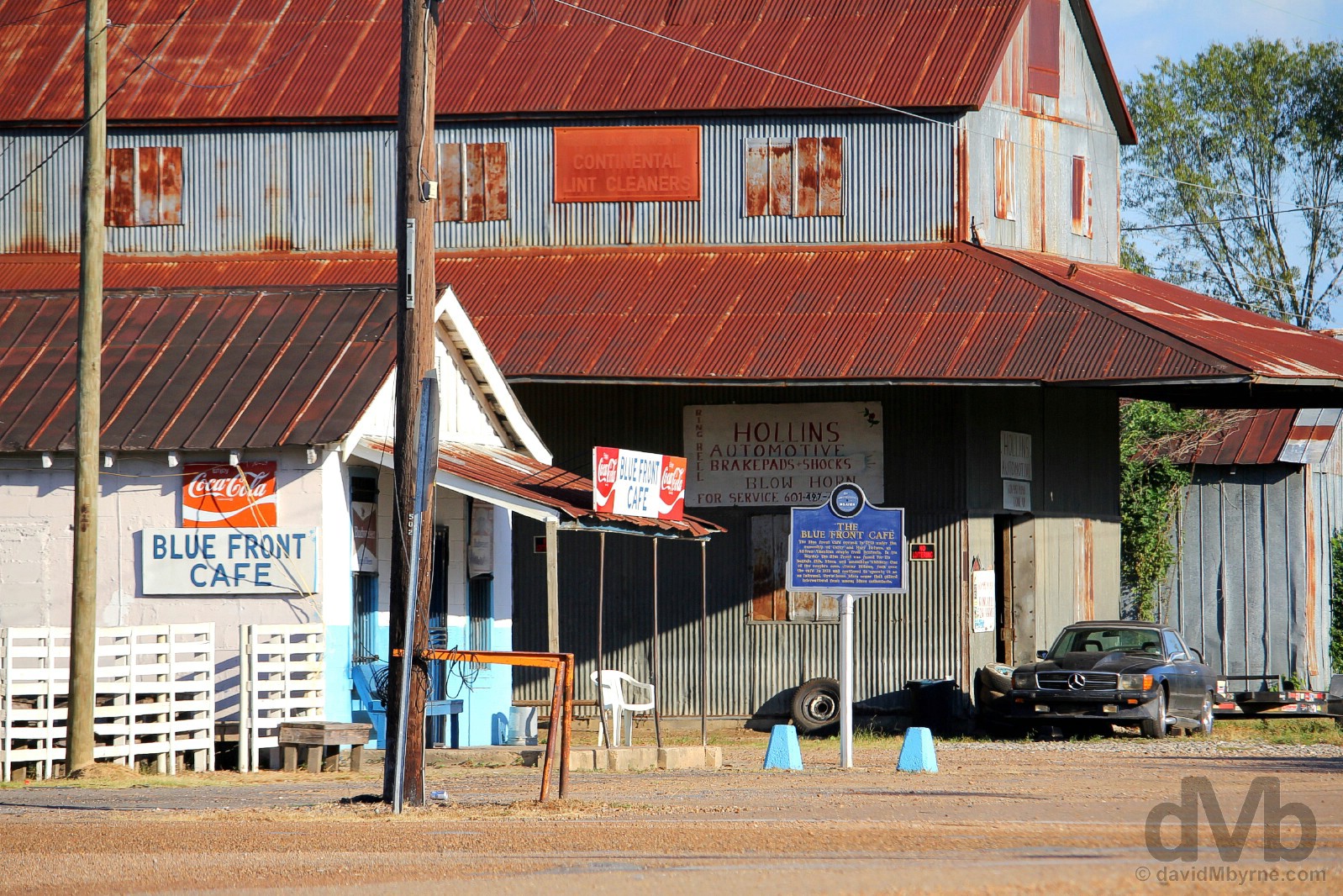
In many ways Bentonia offered up the classic Mississippi scene – a shabby juke joint in a tumbledown town far removed from anything that even remotely resembles urban glitz. Needless to say the town was deserted. Looking very abandoned, it still looked very inviting when bathed in soft late afternoon light. I peaked through the chained doors of the Blue Front Cafe, not seeing much and hoping to return some day when there is actually something going on. Bentonia, Mississippi. September 19, 2016.
Away from the flat Delta, Mississippi is a heavily forested state. This much was obvious this evening when driving from Bentonia, which lies just outside the Delta proper, to Vicksburg, the southern terminus of the Delta – author and Delta native David L. Cohn famously wrote that ‘the Delta begins in the lobby of the Peabody Hotel in Memphis and ends on Catfish Row in Vicksburg.’ Our last drive of the day was a short one but soft lighting when skirting the southern edge of the state’s Delta National Forest ensured it was a picturesque one, a typically gorgeous rural Mississippi drive.
Vicksburg
We rolled into Vicksburg late this evening, the light fading fast. There’s an attraction of a different kind here. One of the key sites of the American Civil War, Vicksburg is famous countrywide as the site of the 1863 Confederate defeat to Union General Ulysses S. Grant, a defeat that finally gained the Union control of the Mississippi River and signaled the beginning of the end for the Confederacy. Yes this is a place for history buffs. We’ll get a more in-dept look at the town’s main draw, Vicksburg National Military Park, tomorrow, starting Epic US Road Trip day 24 where we ended this one.

Sunset light on the arch marking the entrance to the Vicksburg National Military Park. Today Vicksburg National Military Park, essentially a massive battlefield, circles the city of Vicksburg. A 16-mile tour road parallels the Union and Confederate lines with designated stops at places of interest including, among others, artillery battery positions, State Monuments, sculptures & the Vicksburg National Cemetery, the final resting place of some 17,000 dead. Vicksburg, Mississippi. September 19, 2016.
Image ||Vicksburg National Cemetery, Vicksburg National Military Park, Mississippi.
“Of the almost 17,000 Union soldiers of the Vicksburg Campaign buried here in the Vicksburg National Cemetery about 13,000 are unknown, their ultimate sacrifice marked only by small square markers.”
Day 24 || September 20 2016
Route || Vicksburg to Pratville, Alabama (via Selma, Alabama)
Miles (Kilometres) Driven || 336 (541)
Posted From || Pratville, Alabama
Today’s Highlight || Vicksburg National Military Park
– Lonely Planet Civil War Trail Road Trips, 1st edition
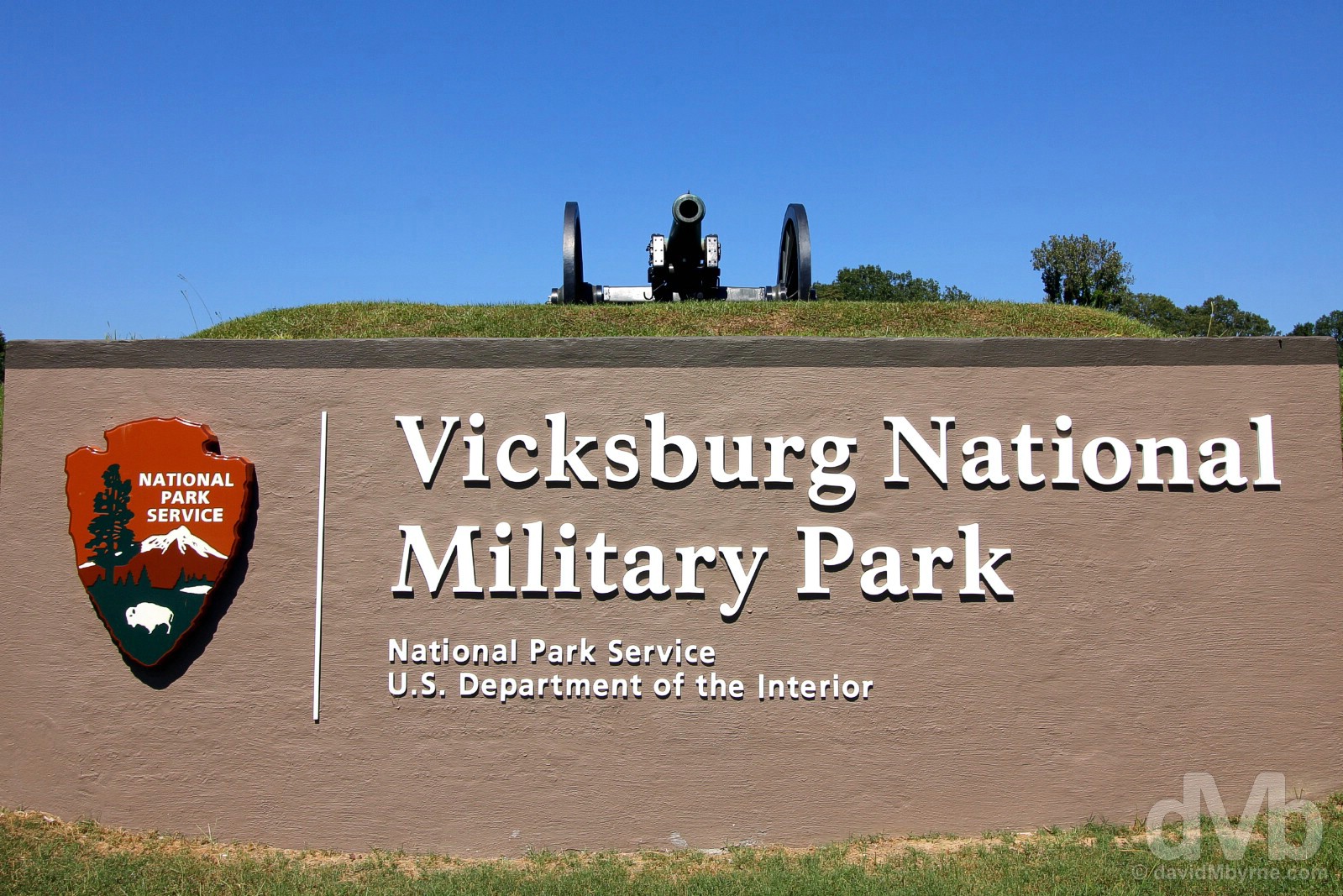
Vicksburg National Military Park, Vicksburg, Mississippi. September 20, 2016.
The Battle For Vicksburg & Vicksburg National Military Park
Strategically placed atop a high bluff overlooking a bend in the mighty Mississippi River meant that during the 1861-1865 American Civil War Vicksburg was a prized possession. One of the key sites of the war, the town, a Confederate stronghold, was besieged for 47 days by Union forces led by General Ulysses S. Grant before finally falling on July 4, 1863. A killer blow, losing control of the crucial Southern waterway signalled the beginning of end for the Confederate States who would eventually go on to lose the wider war. We drove the 16-mile self-drive tour of the amazing Vicksburg National Military Park earlier today, a stinking hot day down here in the Deep South; the sweat was rolling off our brows as we were examining the memorials, statues, plaques & battery lines detailing one of the darkest periods in American history.
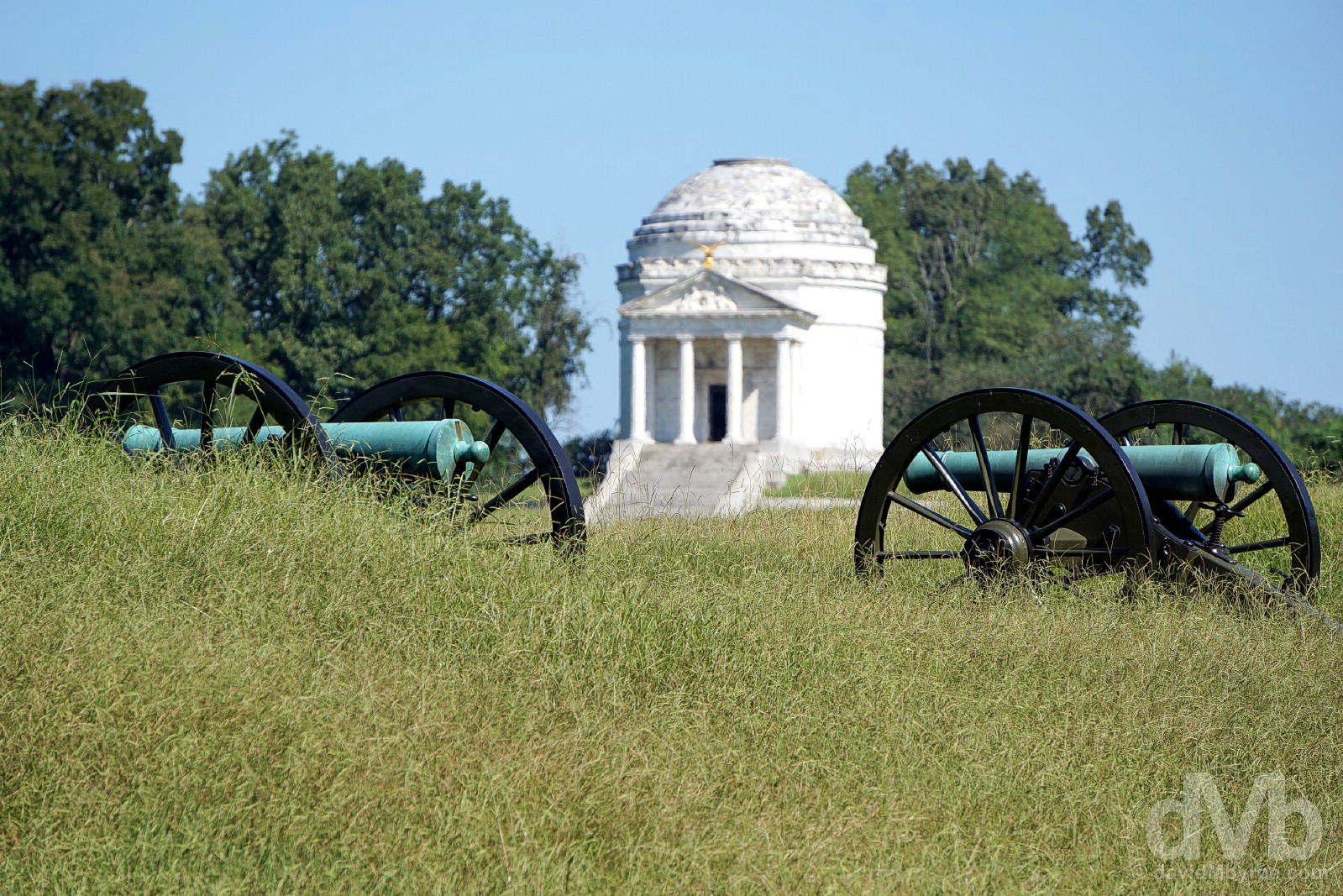
Two artillery cannons of the Union line perched on a bluff with the towering Illinois Memorial, the biggest and most impressive of all the park’s state memorials, in the distance. Vicksburg National Military Park, Vicksburg, Mississippi. September 20, 2016.
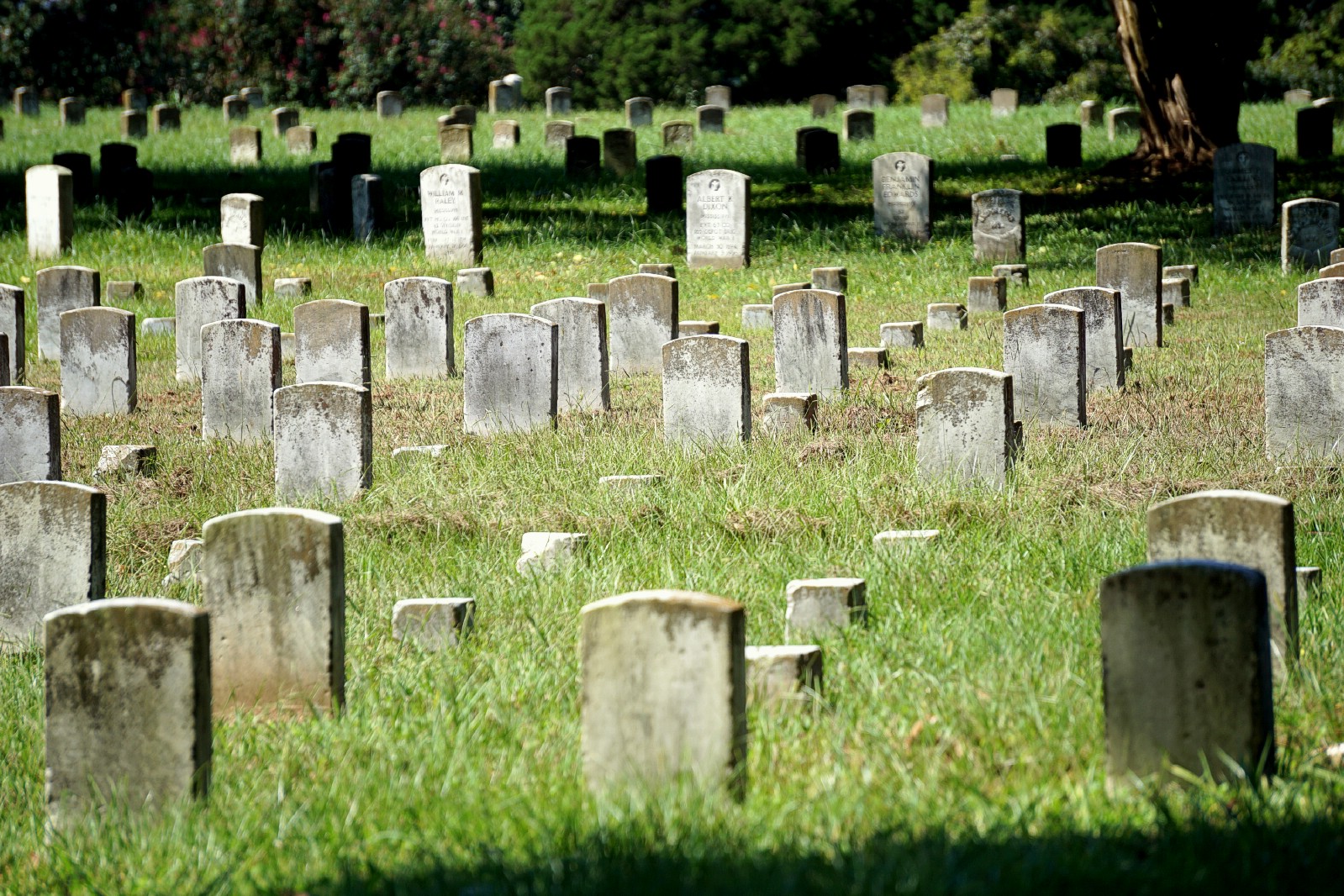
Of the almost 17,000 Union soldiers of the Vicksburg Campaign buried here in the Vicksburg National Cemetery about 13,000 are unknown, their ultimate sacrifice marked only by small square markers. Established in 1866 and part of the wider Vicksburg National Military Park, the cemetery was closed to burials in 1961. Vicksburg National Cemetery, Vicksburg National Military Park, Vicksburg, Mississippi. September 20, 2016.
More pictures from today’s self-drive tour of Vicksburg National Military Park.
Before getting back on the road for the drive east to Alabama we couldn’t help but visit neighbouring Louisiana, if only for a fleeting visit (it was so fleeting that Louisiana didn’t even offer up a ‘Welcome to Louisiana’ sign and thus isn’t classed as one of the 26 states visited over the course of the wider, 36-day road trip). To do so we drove across the Mississippi River, and the state line, via the cantilevered Vicksburg Bridge, the northernmost crossing of the Mississippi River in Louisiana open to motor vehicles.
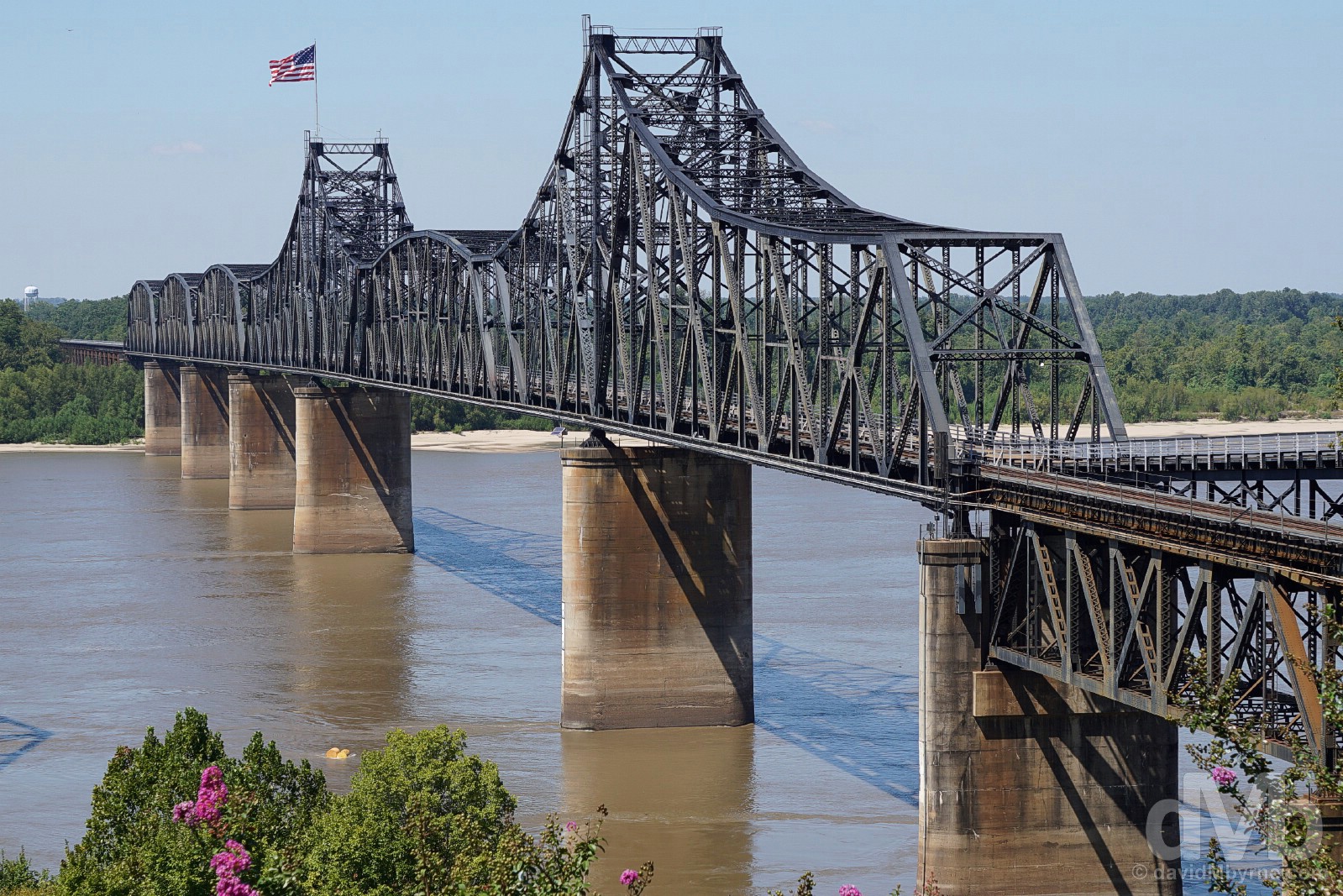
Had we driven from Vicksburg to Louisiana prior to 1998 then we’d have driven across this, the Old Vicksburg Bridge, seen here form the Mississippi Welcome Center on the banks of the river. Also known as Mississippi River Bridge, it opened in 1930 and was listed on the National Register of Historic Places in 1989. Closed to vehicular traffic in 1998, today it sits just up river of the newer Vicksburg Bridge & carries a single rail way line across the Mississippi. The Old Vicksburg Bridge spanning the Mississippi River from Vicksburg, Mississippi, to Delta, Louisiana. September 20, 2016.
State Line To State Line
Turning our back on the Mississippi River for the fourth and final time of the road trip, we set off via Interstate 20 from the Mississippi-Louisiana state line. After 150 miles of driving across the centre of the great state of Mississippi, it was late in the afternoon when, and having crossed the whole state in one foul swoop, we arrived at the Mississippi-Alabama state line.
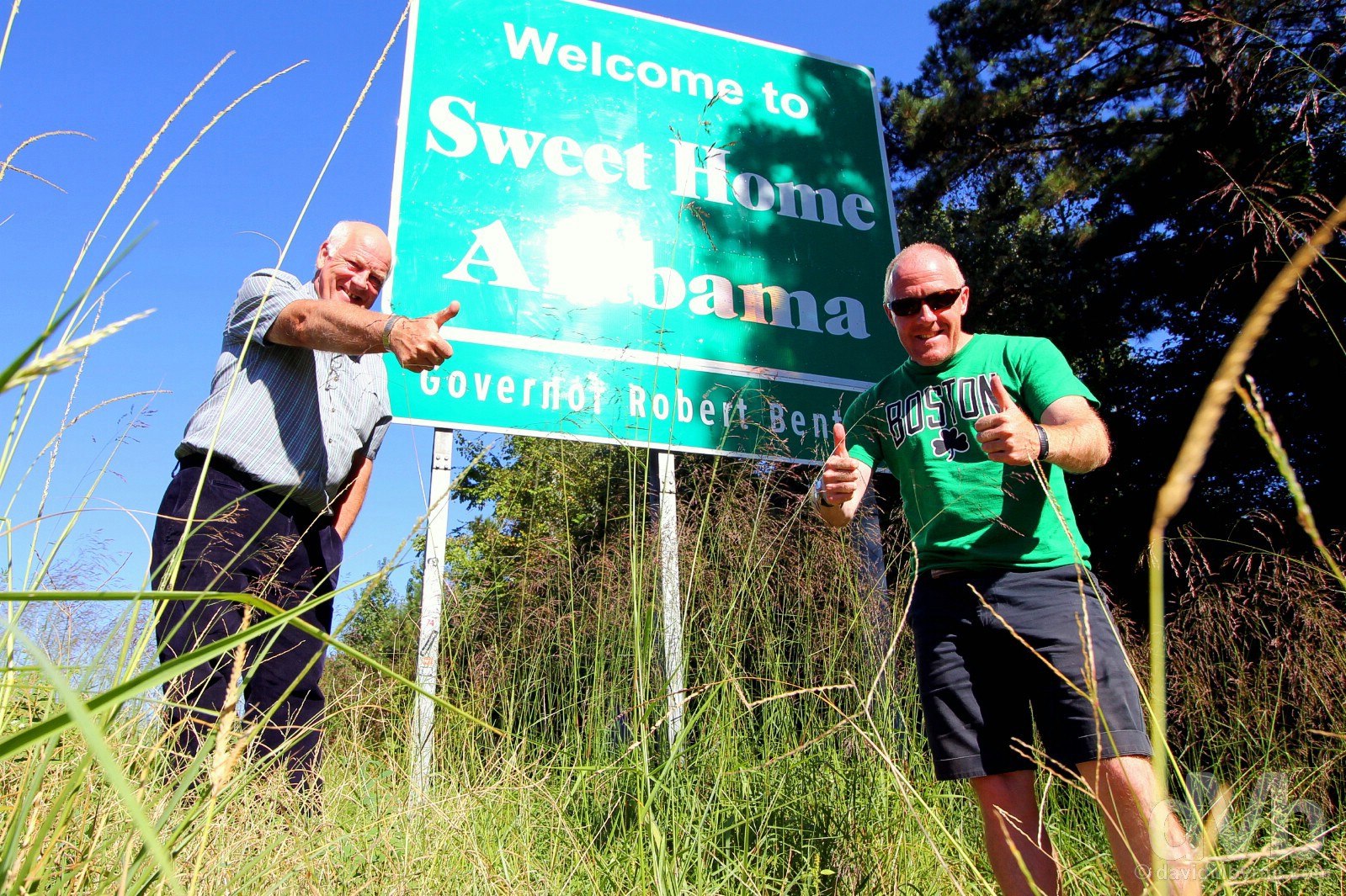
State sign #18 || Welcome To Sweet Home Alabama. At the Mississippi-Alabama state line on Interstate 20 outside Cuba, western Alabama. September 20, 2016.
![]() Alabama
Alabama
State Nicknames – The Yellowhammer State; Heart of Dixie; The Cotton State. State Motto – Audemus Jura Nostra Defendere (We Dare Defend Our Rights). Admitted To The Union – December 1819 (22nd state). Population – 4.8 million Alabamians (24th most populous state). Area – 52,400 sq miles (30th largest state). Capital – Montgomery. National Parks – 0. National Scenic Byways/All-American Roads – 2/2. Famous For – Racial segregation; being the birthplace of the ill-fated Confederate States of America; French influence; cotton; Rosa Parks & the Civil Rights Movement; Harper Lee’s 1960 Pulitzer Prize winning literary classic To Kill a Mockingbird. State Highlights – The Selma to Montgomery Voting Rights Trail, a US National Historic Trail; typically Deep South antebellum architecture. Alabama Titbits – The word Alabama means ‘tribal town’ in the Creek Indian language; the state is hot, sticky & windy – along with Oklahoma, it has the most reported EF5-rated tornadoes, those delivering total destruction of buildings, of any state; the 1901 Alabama Constitution, with almost 800 amendments and running to over 310,000 words, is by some accounts the world’s longest constitution and is roughly forty times the length of the US Constitution; Hitler’s typewriter, a survivor from his Eagle’s Nest mountain retreat, is exhibited at the Hall of History Museum in Bessemer; not a place to be poor, Alabama’s income tax on poor working families is among the highest in the US (although it does levy the lowest property taxes in the US); forget Louisiana’s New Orleans. Stretching back to 1703, Mobile, Alabama is known for having the oldest organised Carnival, a.k.a. Mardi Gras, celebrations in the US.
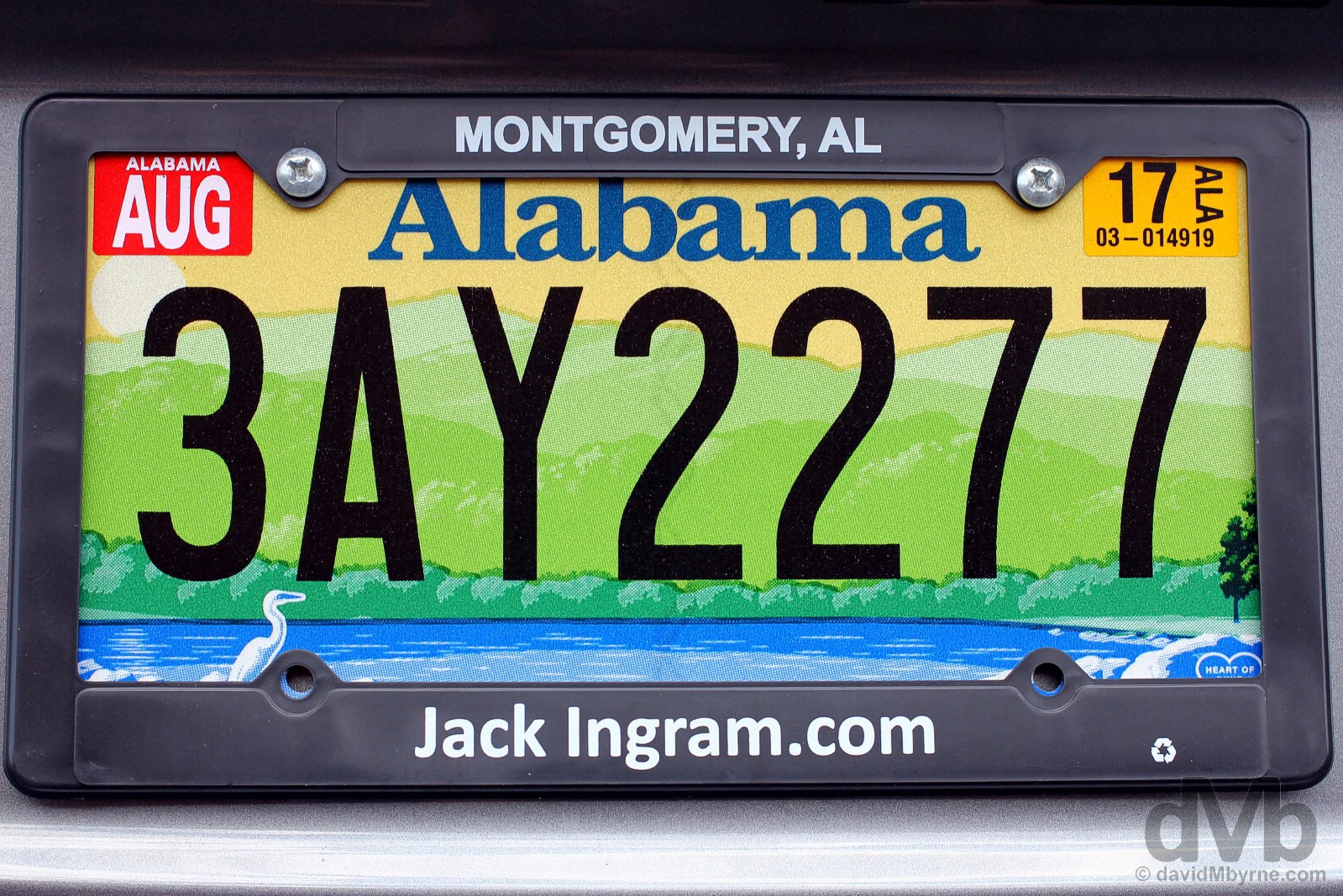
Alabama. State #18. On the streets of Montgomery, Alabama. September 21, 2016.
With a reputation as something of a stubborn, wayward & rebellious state, race & segregation defines Alabama and has done for well over a century. The state was home to Jefferson Davis, the first president of the failed slave-advocating Confederation of southern states, a.k.a. Dixie, in 1861, the year the Civil War began – Alabama was one of the first seven states to secede from the Union following the election of Abraham Lincoln and Montgomery, the state capital, was the first Confederate capital. The state, like all Confederate states, suffered following the end of the war. Jim Crow segregation laws lingered here longer than anywhere in the US, the Civil Rights Movement viciously opposed with African Americans & poor whites essentially disenfranchised as per the state constitution of 1901. All that changed in 1955 when a slight African American women Rosa Parks refused to give up her seat to a white on a Montgomery bus. This galvanised the often bloody Civil Rights Movement and eventually led to the passage of the Voting Rights Act of 1965. Today the state has turned its tormentous past into one its biggest draws for the here & now – a visit to the state offers a powerful insight in the racial dynamic & history of the US with cities like Birmingham, Montgomery, Selma and Tuskegee all pivotal in the Civil Rights Movement.
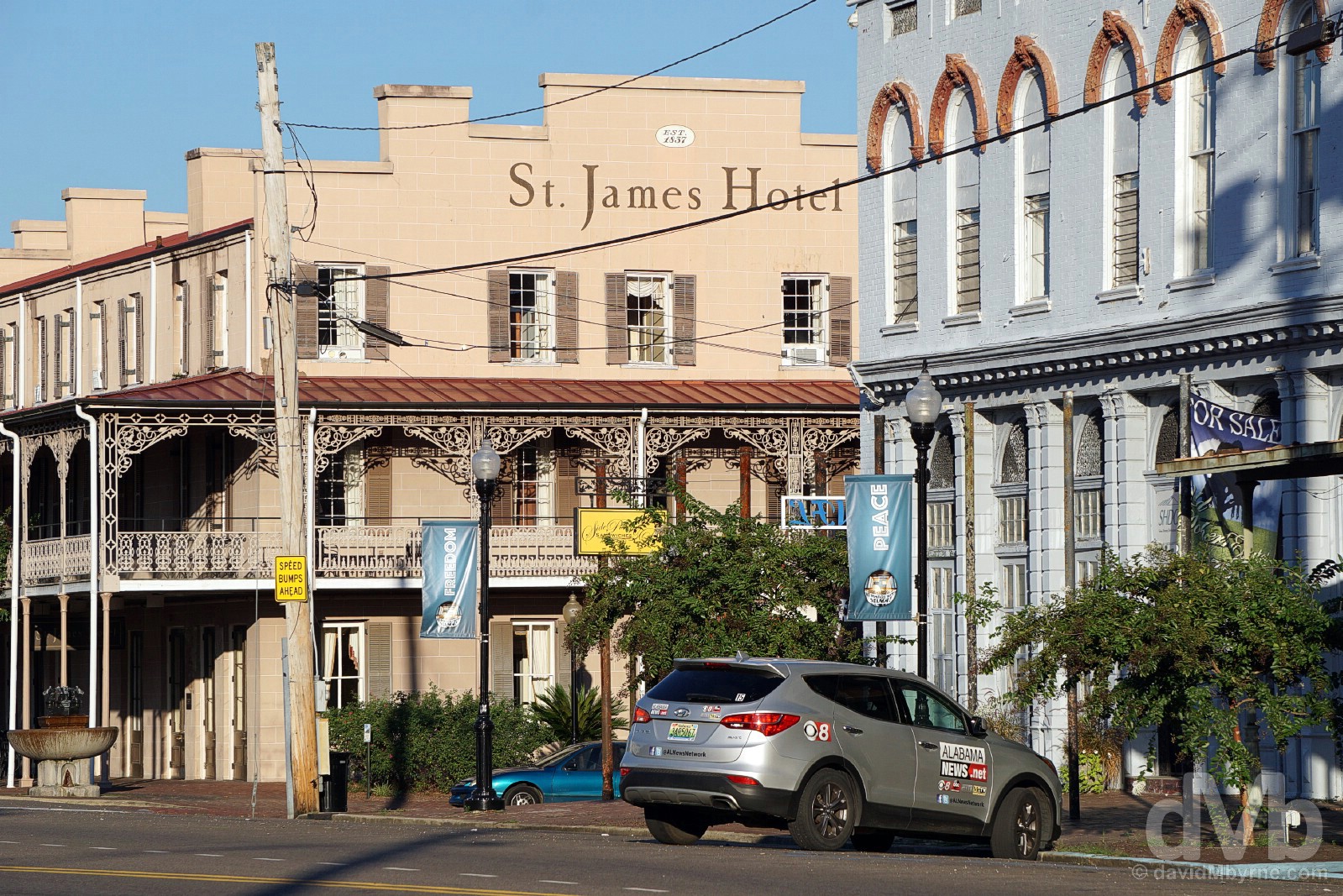
Water Avenue, Selma, Alabama. September 20, 2016.
Selma
We were late arriving into Selma, an 85-mile drive east of the state line with Mississippi. It was almost 7 p.m. The place was quiet and inviting, Selma basking in the evening glow at the end of a gorgeous and steamy Deep South day.

Arriving into Selma thrust us right into the thick of the often bloody but always fascinating history of the mid-1950s to mid-1960s Civil Rights Movement. The Edmund Pettus Bridge spanning the Alabama River in Downtown Selma has become one of the most iconic symbols of the modern struggle for civil & voting rights in America. The start of a 54-mile route via US Highway 80 to the Alabama state capital of Montgomery, the bridge was, on March 7 1965, a.k.a. Bloody Sunday, the site of a bloody rebuke by heavily armed state troopers and deputies who brutally assaulted peaceful marchers attempting to march on the capital demanding equality. The first of 3 events collectively called the Selma to Montgomery Marches, the protesters would eventually make it to Montgomery, the birthplace of Civil Rights, culminating with a speech by Dr. Martin Luther King Jr. on the steps of the State Capitol Building on March 25 1965. The Edmund Pettus Bridge spanning the Alabama River in Downtown Selma, Alabama. September 20, 2016.

The Ancient Africa Enslavement & Civil War Museum on Water Avenue in Selma, Alabama. September 20, 2016.
Overview Of The Selma to Montgomery March, A National Historic Trail
Until 1965 counties in Alabama used preventive measures in order to prevent African-Americans from registering to vote. Because of this only 2% of the African-American population of Dallas County, and 0% in Lowndes County, were able to vote. Civil rights activists began to protest in Selma in order to bring attention to this injustice. These protests were often met by violence from the local sheriff’s department, leaving many wondering what was going to happen next.
On the evening of February 18, 1965 during a protest to free SCLC supporter Rev. James Orange from the Perry County Jail located in Marion, Aalbama, Jimmie Lee Jackson was shot in the abdomen. Jackson died from his wounds on February 26. On March 7, approximately 600 non-violent protesters, the vast majority being African-American, departed from Brown Chapel A.M.E. Church in Selma with the intent on marching 54 miles to Montgomery as a memorial to Jimmy Lee Jackson and to protest for voter’s rights. As they crossed the Edmund Pettus Bridge they were met by a column of State Troopers and local volunteer officers of the local sheriff’s department blocking their path. The non-violent protesters were told by Maj. John Cloud that they had two minutes to return back to their church and homes. In less than the time allotted they were attacked by the Law Enforcement Officers with nightsticks and teargas. According to several reports at least 50 protesters required hospital treatment. The brutality that was displayed on this day was captured by the media. However, the media was held back as the protesters retreated where the violence continued for some time.
The attack caused outrage around the country, March 7 becoming known as ‘Bloody Sunday’. Two days later Dr. Martin Luther King Jr. led a second march which again had its path blocked by Law Enforcement Officers. This time they decided to turn back and not risk a violent confrontation. However, that evening three Unitarian ministers who had traveled to Selma in order to join the protest were attacked by a group of white hooligans. On March 11 Rev. James Reeb died from his injuries.
The civil rights protesters sought and received an injunction for a third march, which was granted on March 17 by Judge Frank M. Johnson Jr. On March 21 the official Selma to Montgomery March began with the final number of supports reaching near 25,000 people on March 25. Five months later President Lyndon B. Johnson signed the Voting Rights Act which prohibits discrimination in voting practices or procedures because of race and color.
Reproduced from text taken from https://www.nps.gov/semo/index.htm
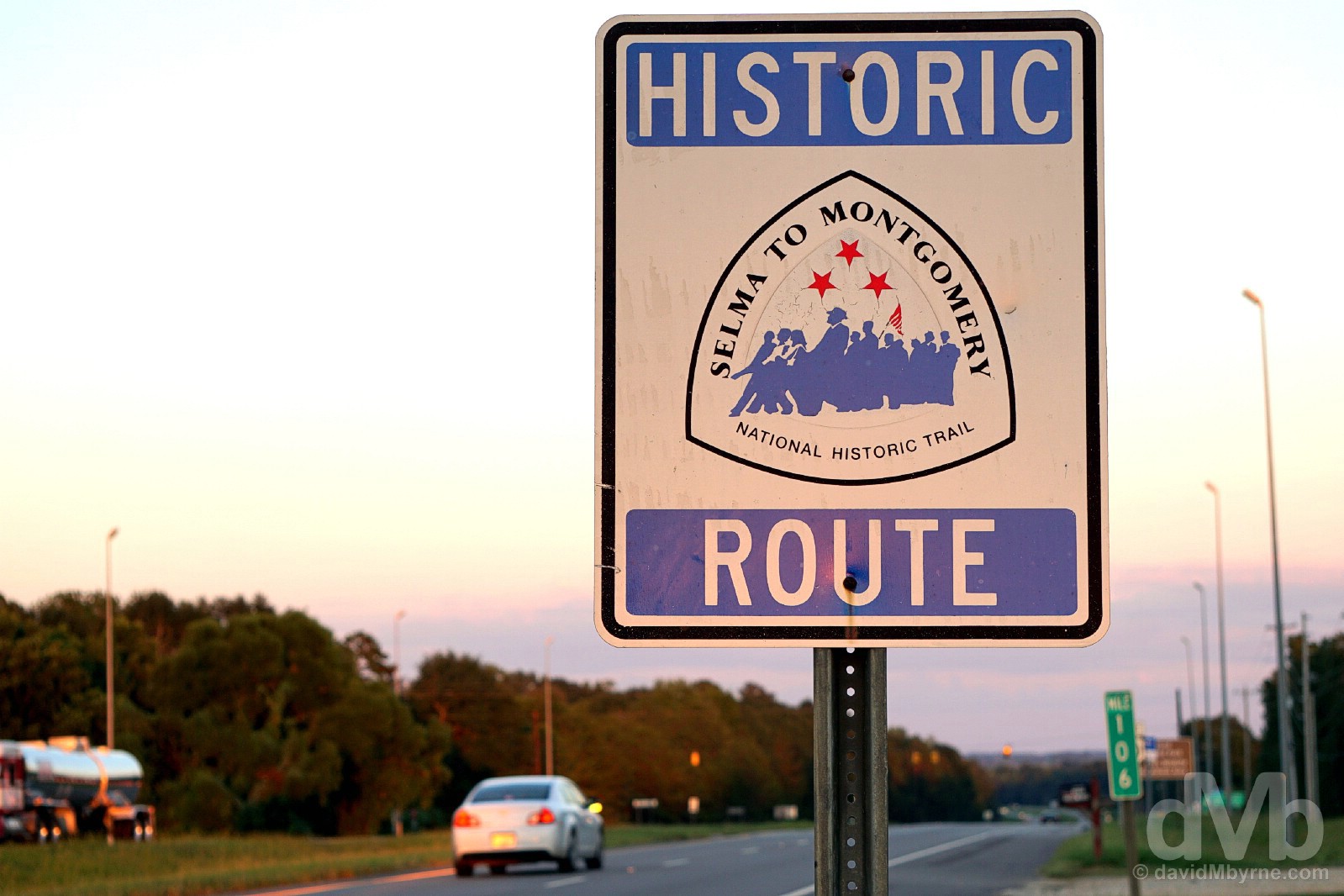
Near mile marker 106 on US Highway 80, a.k.a. The Jefferson Davis Highway, connecting Selma to Montgomery, Alabama, the route of the Selma to Montgomery March and now designated a National Historic Trail, not to mention an All-American road, the Selma to Montgomery March Byway. September 20, 2016.
All-American Road #5 – Selma to Montgomery March Byway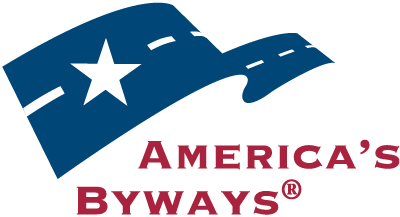
– www.fhwa.dot.gov
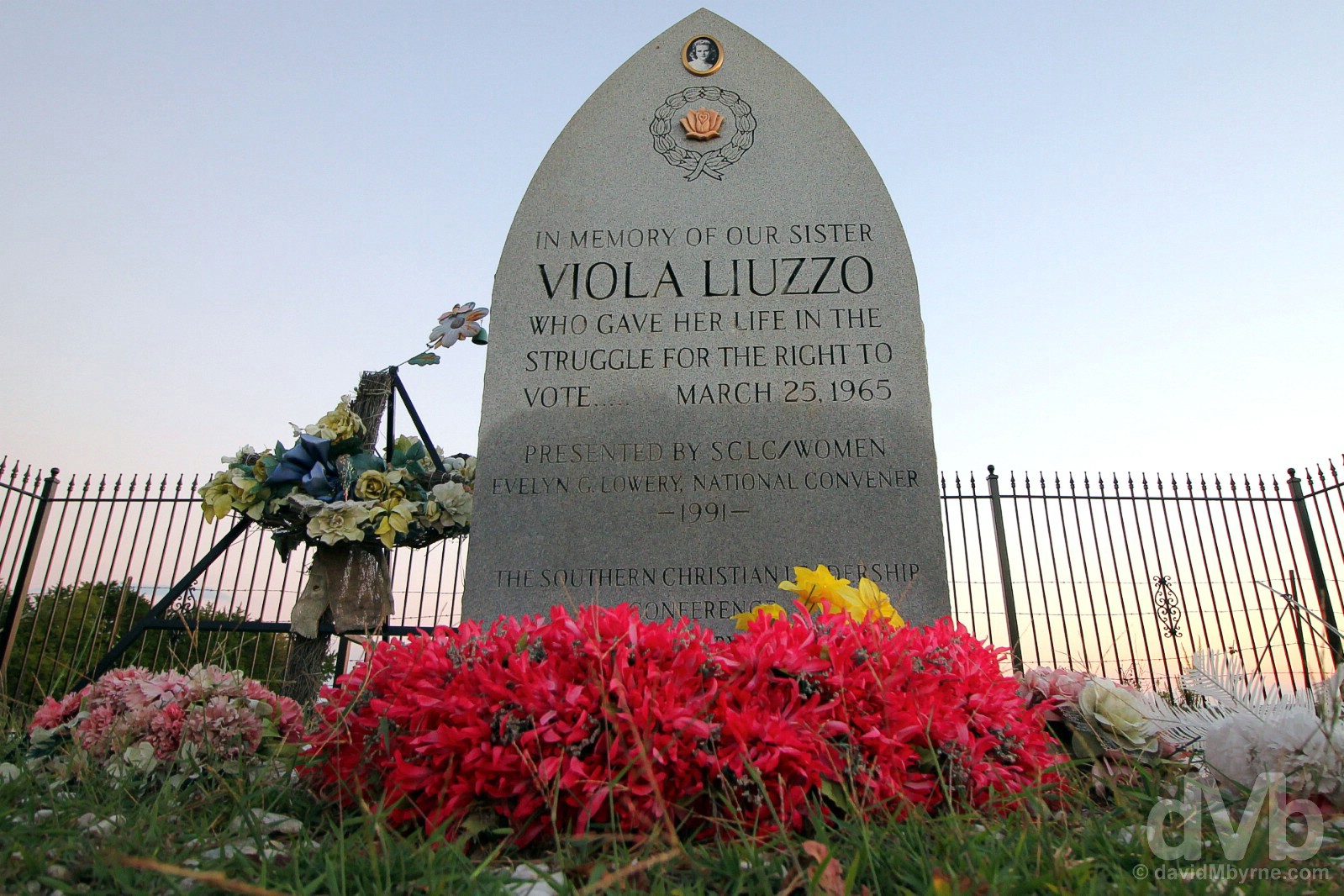
Houston, a friendly member of the congregation from the neighbouring African Methodist Episcopal Zion Church Wright Chapel, introduced himself to us as we were viewing this roadside memorial where, on March 25 1965, a 39-year-old white civil rights activist named Viola Liuzzo was killed. Heeding the call of Martin Luther King Jr. and traveling from Detroit, Michigan to Selma, Alabama in the wake of Bloody Sunday, Liuzzo participated in the successful Selma to Montgomery march helping with march coordination and logistics. Driving back towards Montgomery with a black passenger, Leroy Moton, after shuttling fellow activists to Selma, she was chased down & shot dead by members of the Ku Klux Klan. Moton survived the shooting but Liuzzo died instantly, her car veering into a ditch at a point where today The Viola Liuzzo Memorial sits. On Historic Route US Highway 80 between Selma & Montgomery, Alabama. September 20, 2016.
Image ||International Peace Day March, Dexter Avenue, Montgomery, Alabama.
“The scene for the culmination of the 1965 Selma to Montgomery Marches of the Civil Rights Movement of the 50s & 60s, Dexter Avenue fronting the Alabama State Capitol Building in Montgomery still sees marches today…”
Day 25 || September 21 2016
Route || Pratville, Alabama to Cornelia, Georgia (via Montgomery, Alabama & Stone Mountain, Georgia)
Miles (Kilometres) Driven || 297 (478)
Posted From || Cornelia, Georgia
Today’s Highlight || Rosa Parks Museum, Montgomery
– The Montgomery Chamber Convention & Visitor Bureau
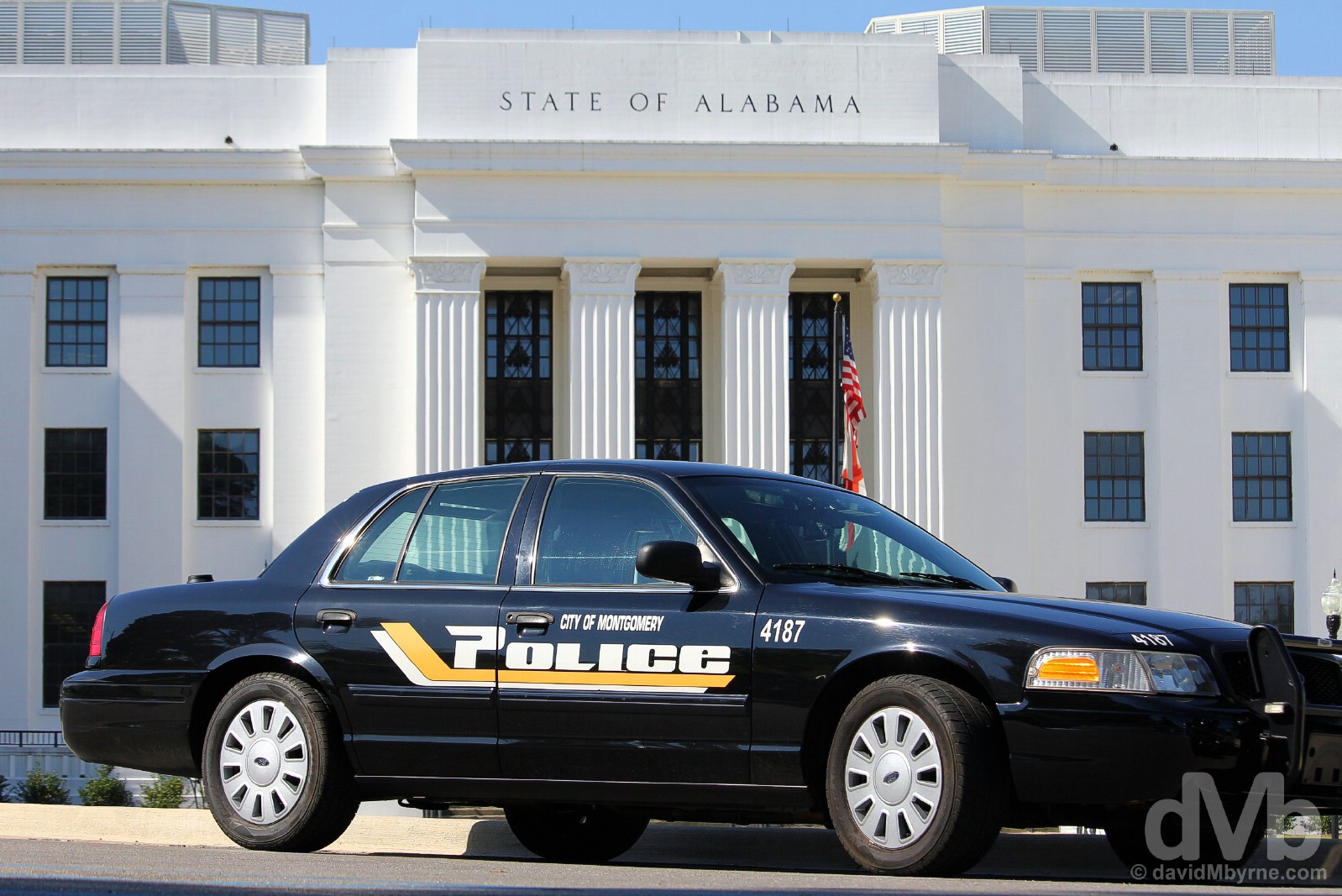
On South Bainbridge Street in Montgomery, Alabama. September 21, 2016.
Montgomery – A Witness To History
The Alabama state capital since January 1846 and a city steeped in history, Montgomery is known as both the Cradle of the Confederacy & the birthplace of Civil Rights as it played a pivotal role in two defining periods of American history – the 1861-1865 American Civil War & the Civil Rights Movement of the 1950s & 60s. Any visit to the city will revolve around the history of both, momentous events in American history that are closely tied to the Montgomery’s blindingly-white Alabama State Capitol Building – the American Civil War started in its chambers & the Civil Rights Movement effectively ended on its steps.
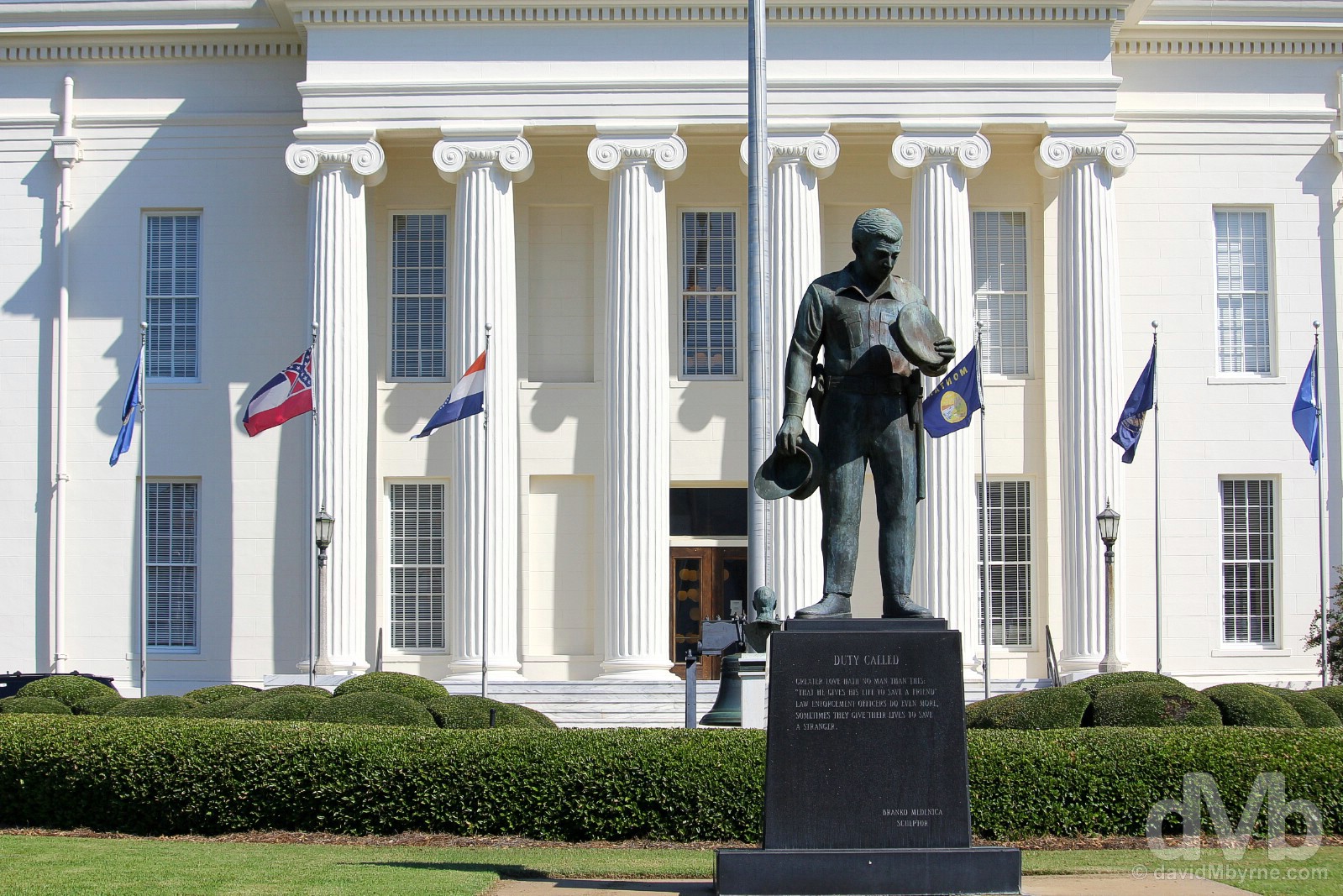
A Duty Called statue fronting the Alabama State Capitol Building in Montgomery. The city’s Alabama State Capitol Building was where, in 1861, Jefferson Davis took the oath of office as President of the Confederate States of America after delegates from Southern states voted to establish a new nation thus igniting the American Civil War. It is also where, a little over a century later in 1965, the Selma to Montgomery march of the Civil Rights Movement ended with a speech delivered by Dr. Martin Luther King Jr. from the Capitol steps towards the crowds gathered on Dexter Avenue. The gorgeous present-day Greek Revival building on the city’s Goat Hill dates from the early 1850s and was placed on the National Historic Landmark list in 1960. It underwent a seemingly never-ending restoration that commenced in the 1970s and which officially finished in the early 1990s. In truth efforts to restore and enhance the historical character of the building are forever ongoing. Montgomery, Alabama. September 21, 2016.
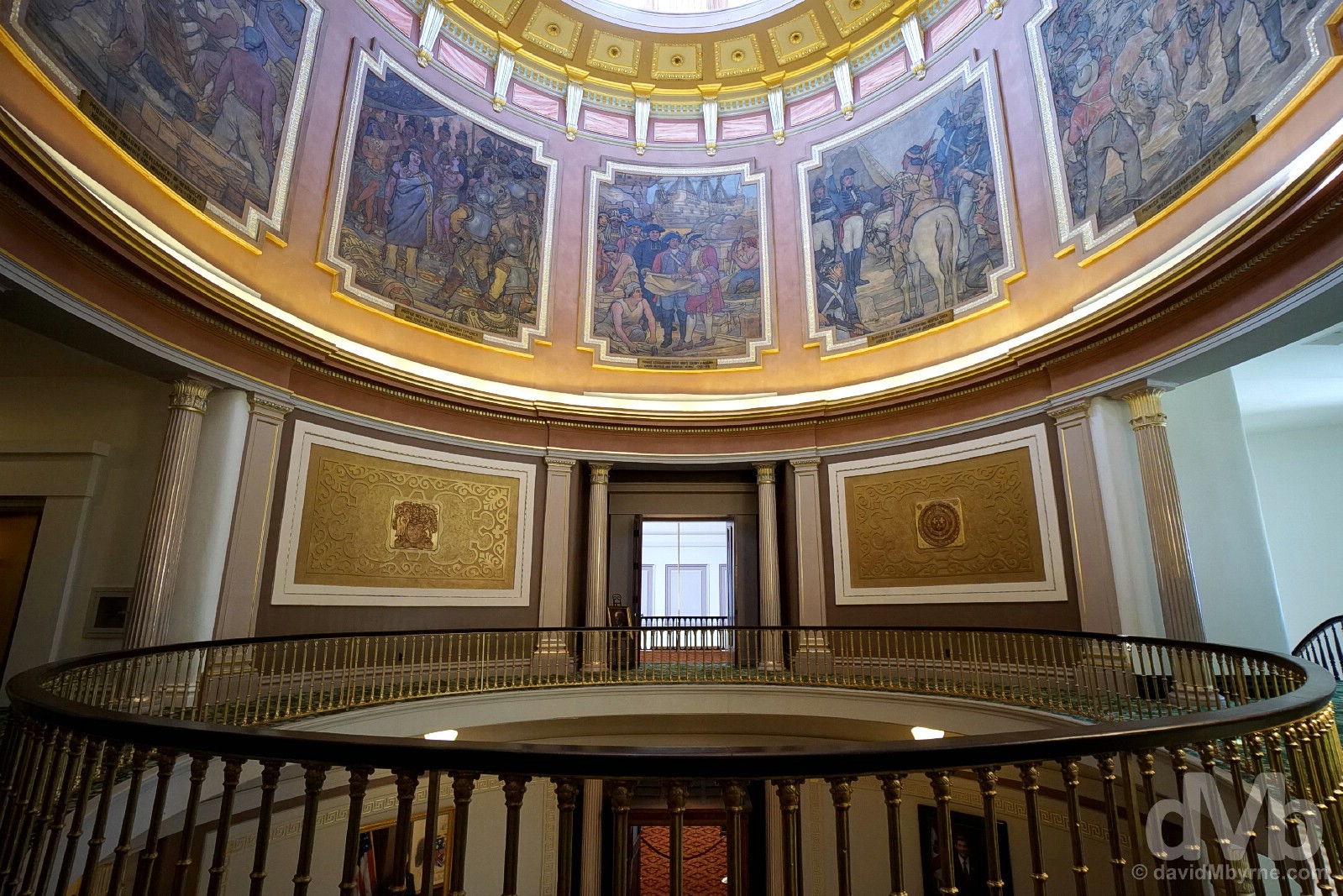
The interior of the Alabama State Capitol Building in Montgomery, Alabama. September 21, 2016.
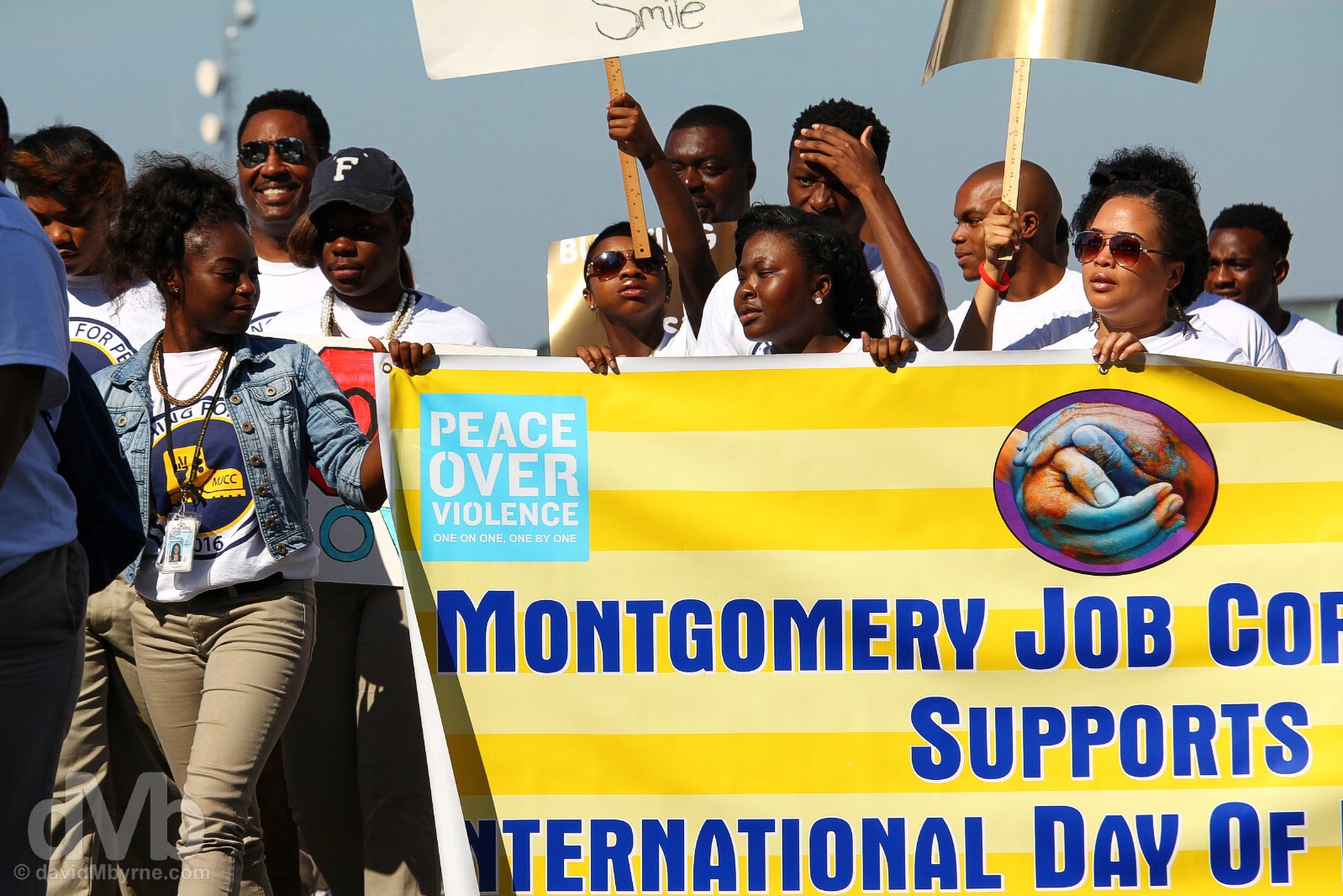
The scene for the culmination of the 1965 Selma to Montgomery Marches of the Civil Rights Movement of the 50s & 60s, Dexter Avenue fronting the Alabama State Capitol Building in Montgomery still sees marches today, like this one for International Day of Peace 2016. September 21, 2016.
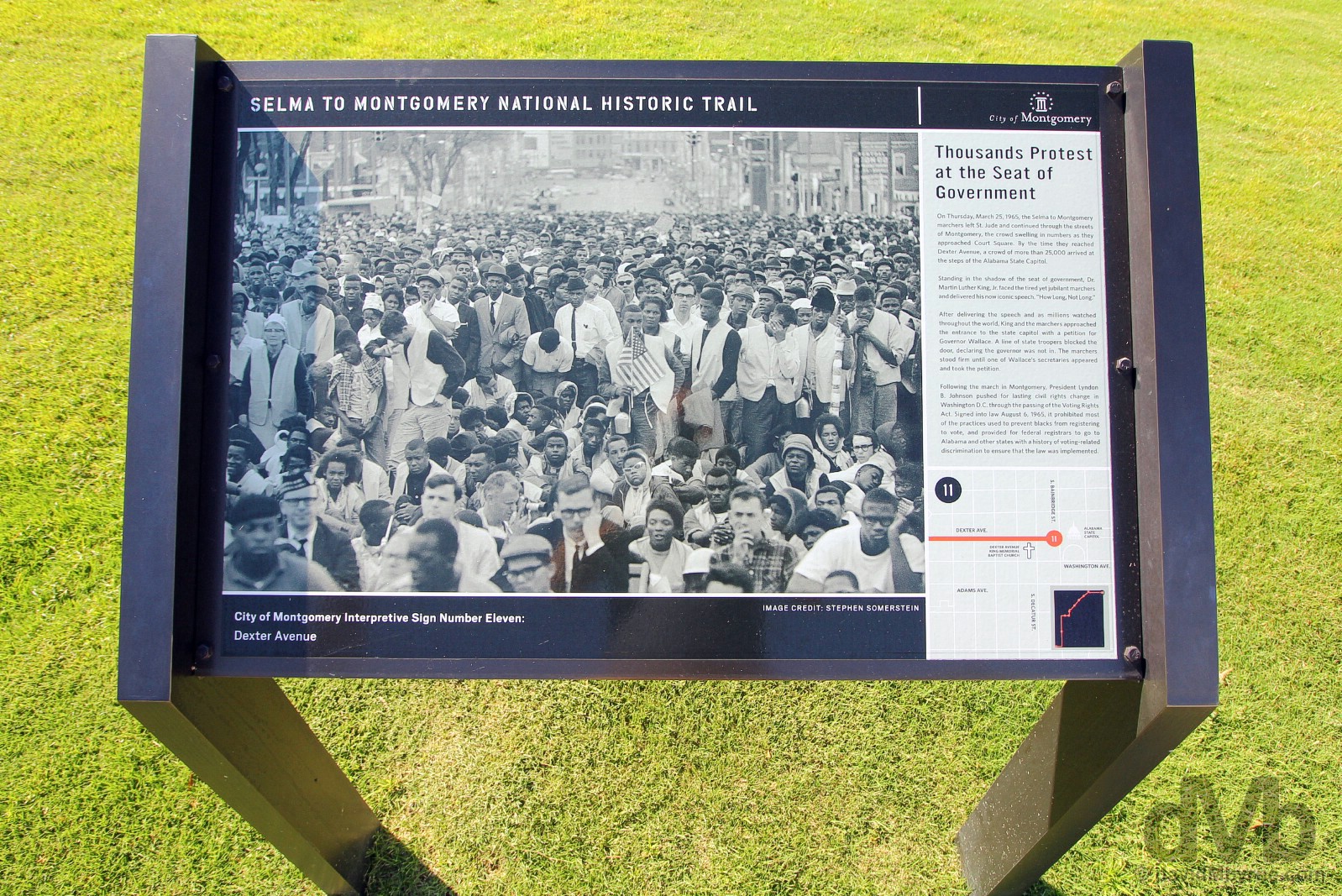
Selma To Montgomery National Historic Trail signage on Dexter Avenue in Downtown Montgomery, Alabama. September 21, 2016.
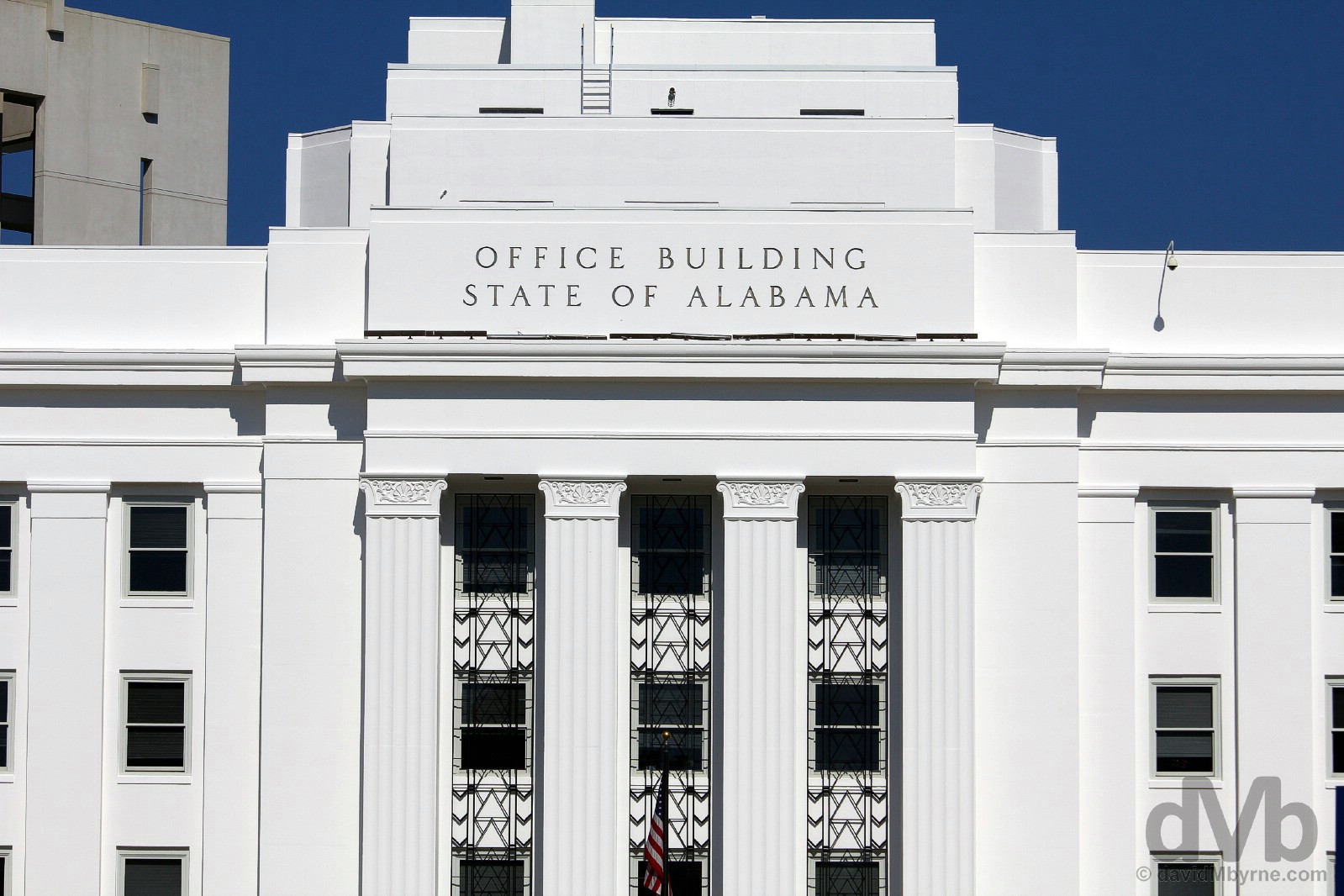
Montgomery, Alabama. September 21, 2016.
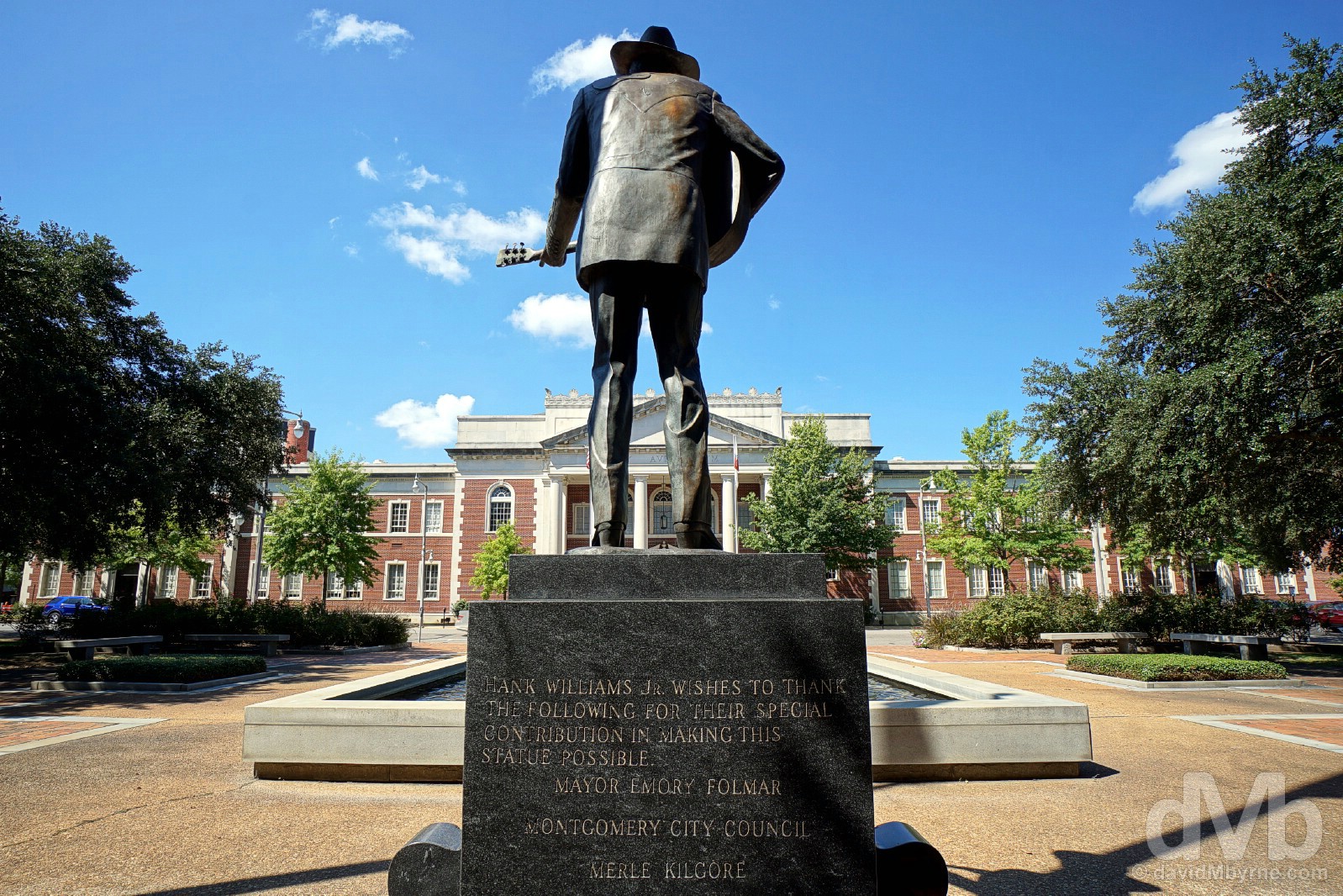
A statue of Montgomery native Hank Williams fronting City Hall in Downtown Montgomery. This picture was captured en route from the Alabama State Capitol Building to the city’s Hank Williams Museum, somewhere where efforts to prevent photography are just a bit too draconian, so much so that they detract from the museum experience itself. Montgomery, Alabama. September 21, 2016.
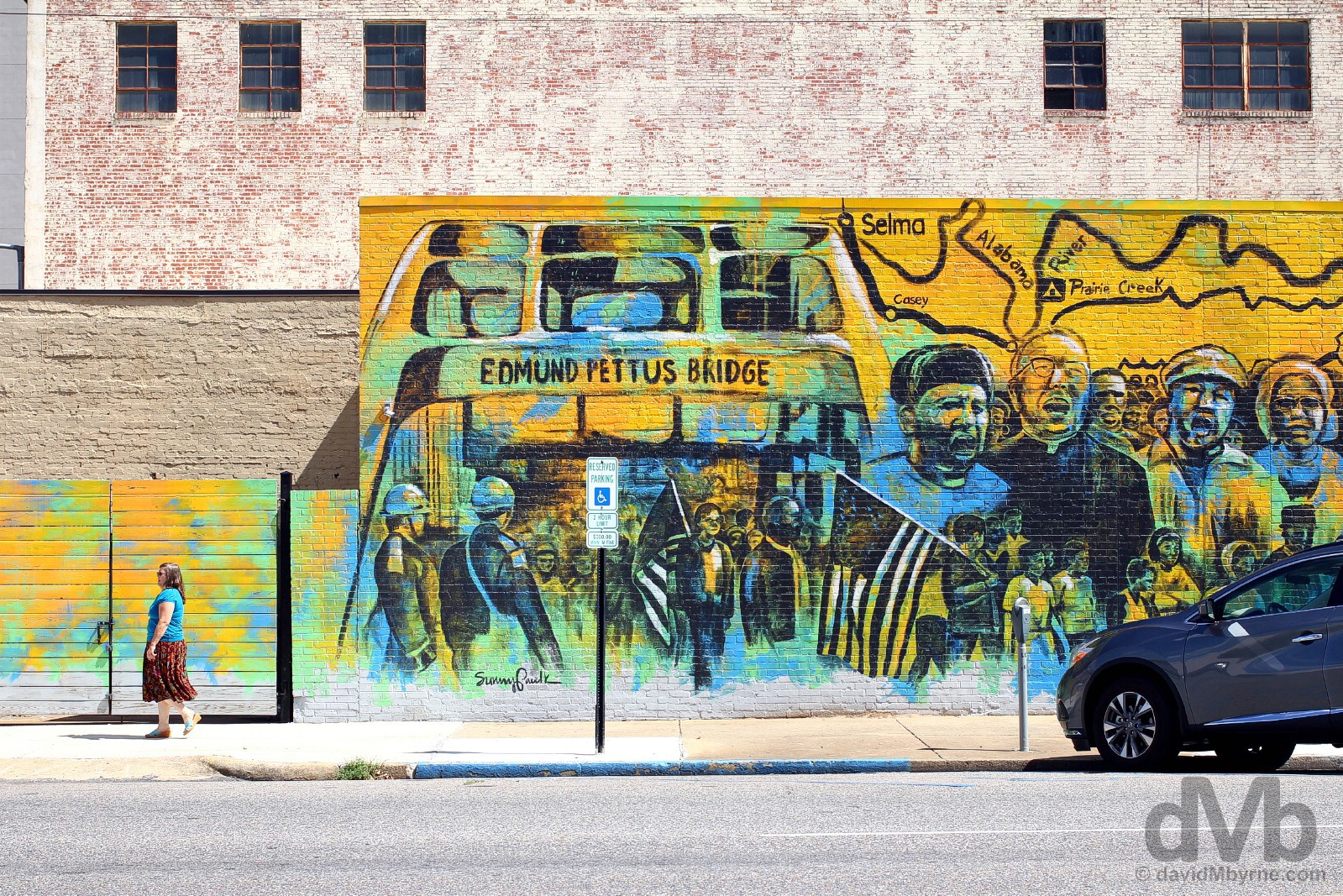
This mural depicting the Selma to Montgomery Marches in Downtown Montgomery was created in late 2014 by local artist Sunny Paulk. Located on the wall of 129 Montgomery Street, it was the first of many urban murals planned for the Selma to Montgomery National Historic Trail as part of a wider effort by city leaders to advance public art in downtown Montgomery in concert with the city’s work to promote revitalization. Montgomery, Alabama. September 21, 2016.
– Lonely Planet USA, 6th Edition
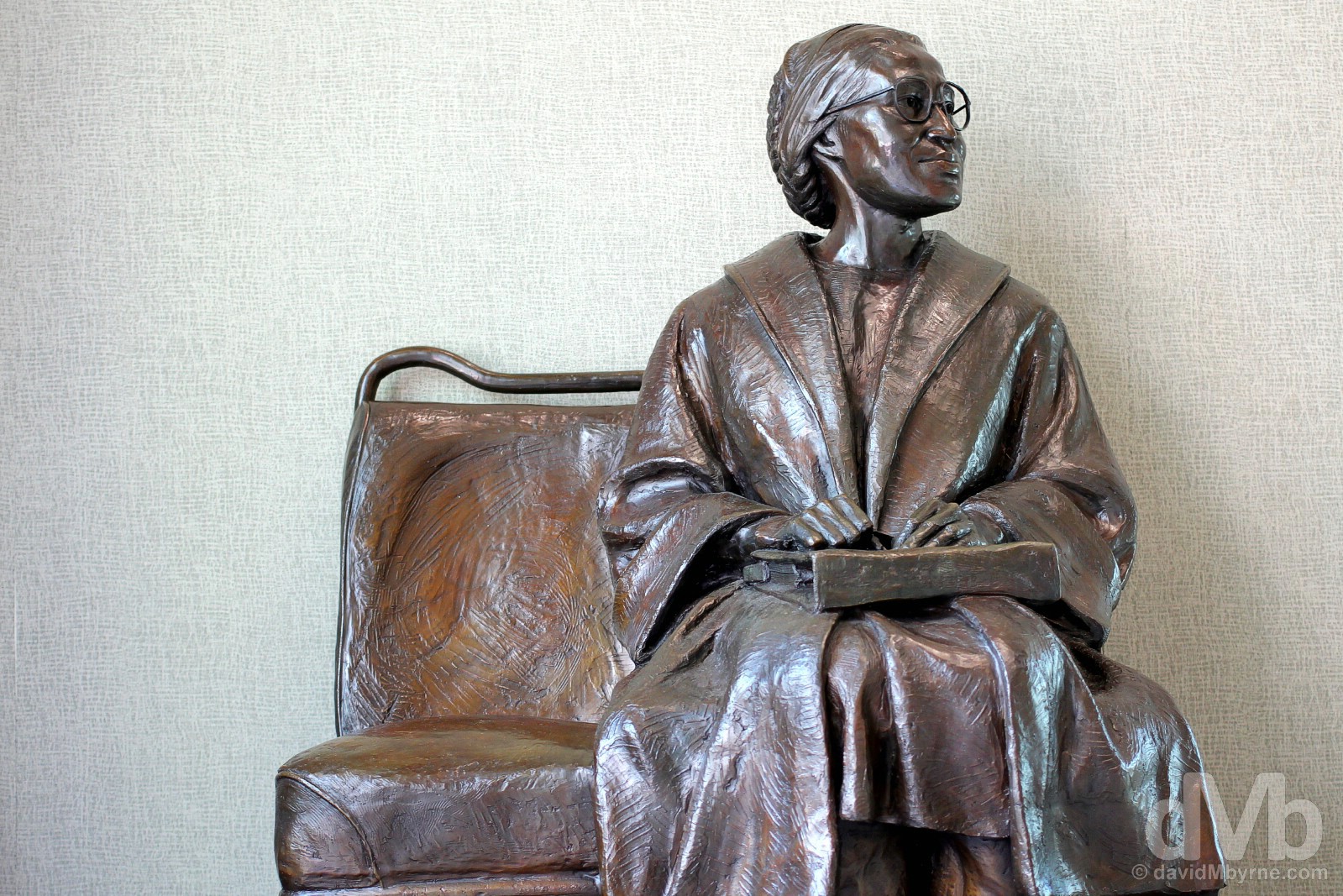
The Rosa Parks Library & Museum is a Montgomery must-see, a state-of-the-art interactive look at the story which famously saw, in December 1955, a pint-sized African American seamstress refuse to give up her seat to a white passenger on a Montgomery city bus. Cementing her name in history, this action got her arrested and led to the bus boycott of the early Civil Rights Movement. Pictures are not allowed among the awesome museum exhibits but photos are allowed in the museum lobby where you’ll find this sculpture of Rosa Parks reenacting that historic bus journey. The Rosa Parks Library & Museum in Montgomery, Alabama. September 21, 2016.

In the gift shop of the Rosa Parks Library & Museum in Montgomery, Alabama. September 21, 2016.
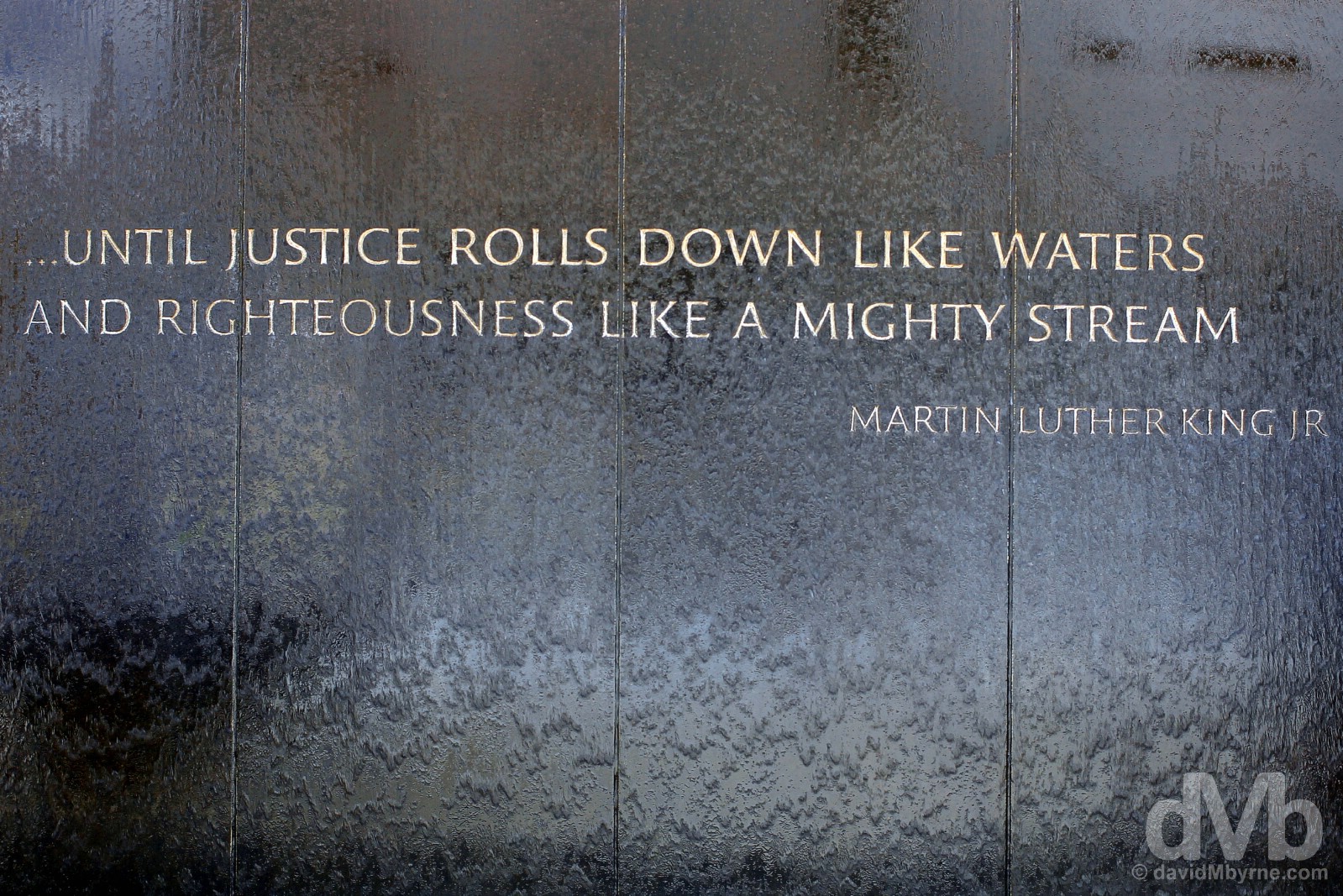
Outside the Civil Rights Memorial Center on Washington Avenue, Montgomery, Alabama. September 21, 2016.
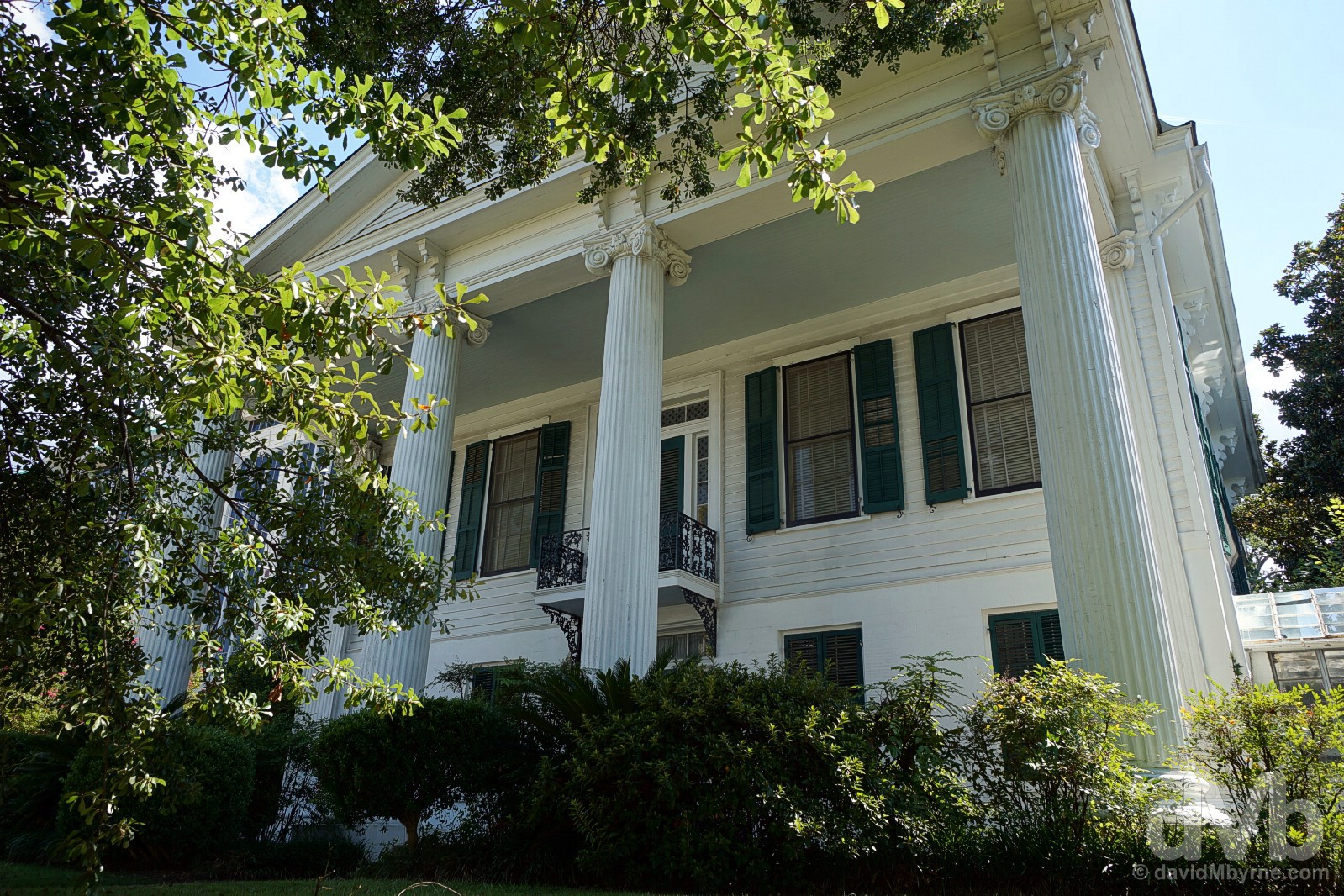
The three Dowe Houses, on or just off Montgomery’s Washington Avenue, are reminders of the residential neighbourhood that existed here in downtown Montgomery in the 19th century. Dating from 1863, the main residential building, seen here, was originally designed as an Italianate-style raised cottage but was altered in 1908 to its present form with a two-storey columned portico. The house was built for John Doew, an Irish-born grocer and confectioner, his wife Joanna and their children. Placed on the National Register of Historic Places in 1988, descendants continued to live here for over 150 years, the last member of the family to occupy the house – John Dowe III – dying in 2007 at the age of 97. Montgomery, Alabama. September 21, 2016.
It was an 80-mile drive northeast via Interstate 85 from Downtown Montgomery to the state line with Georgia, The Peach State and Epic US Road Trip state number 19.

State sign #19 || At the Alabama-Georgia state line off Interstate 85 in West Point, Troup County, western Georgia. September 21, 2016.
State Nicknames – Peach State; Empire State of the South. State Mottos – Wisdom; Justice; Moderation. Admitted To The Union – January 1788 (4th state). Population – 10.2 million (8th most populous state). Area – 59,400 sq miles (24th largest state). Capital – Atlanta. National Parks – 0. National Scenic Byways/All-American Roads – 1/0. Famous For – Peaches; Coca-Cola; UPS; CNN; hosting the 1996 Olympic Games; The Dukes of Hazzard; The Masters; R.E.M. (a college band done good from Athens); Martin Luther King Jr. (born in Atlanta in January 1929). State Highlights – Southern belle Savannah, Stone Mountain & hokey faux Swiss-German alpine Helen. Georgia Titbits – The state is named after King George II of Great Britain; it’s the largest US state east of the Mississippi; there are 15 Fortune 500 companies & 26 Fortune 1000 companies headquartered in Georgia – if it were a stand-alone country, it would be the 28th largest economy in the world; at one stage in Georgia’s history, just prior to the Revolutionary War, almost half of the state’s population was made up of slaves; the 1972 movie Deliverance, a landmark movie noted for its ‘Dueling Banjos’ scene & trip by ill-prepared city slickers into unknown & potentially dangerous wilderness, was shot primarily in northeastern Georgia. “Where you goin’ city boy?”

Georgia. State #19. Cornelia, northern Georgia. September 22, 2016.
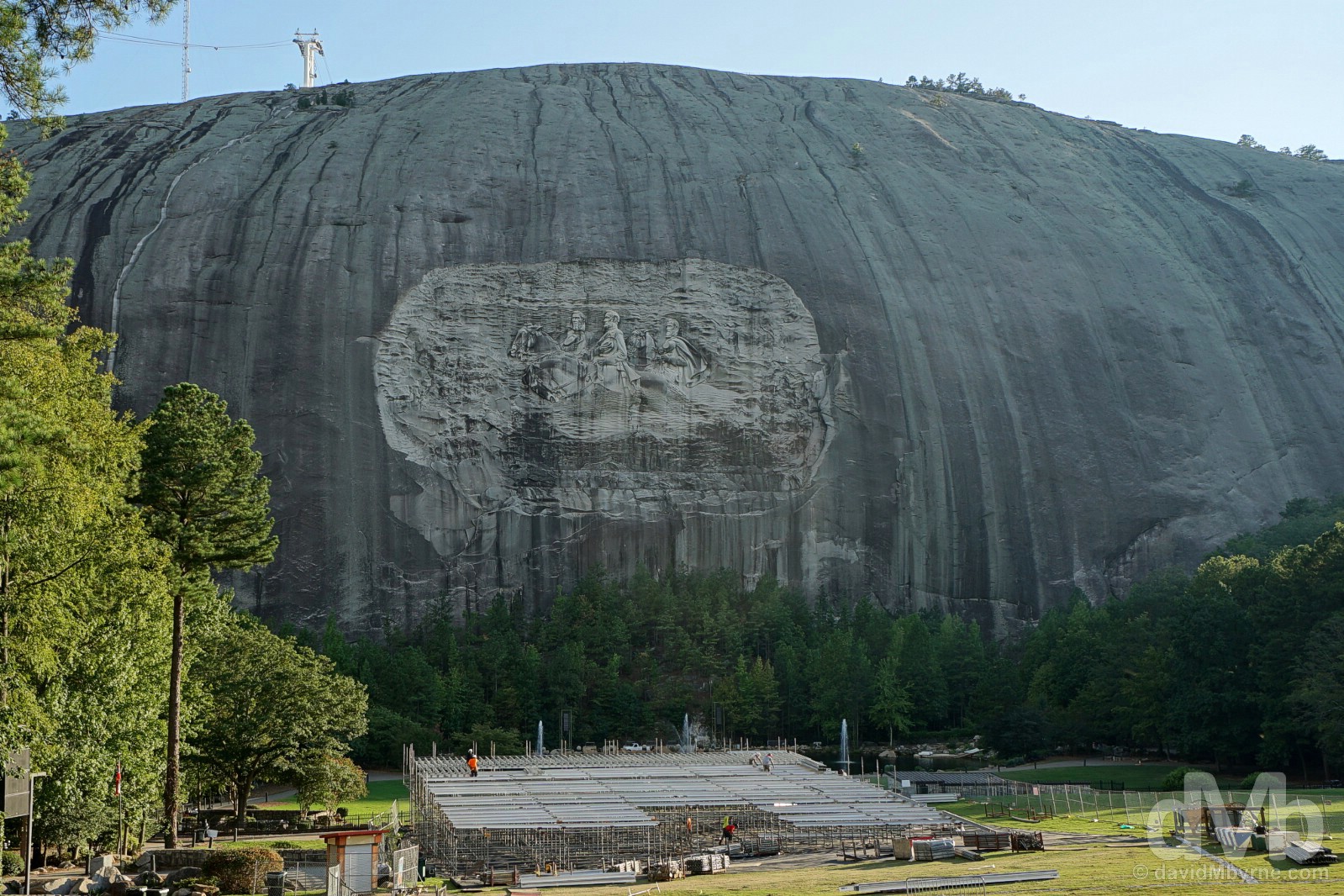
Receiving over four million tourists per year & combining natural splendour with Confederate nostalgia, Stone Mountain is a massive dome monadnock, an isolated rock hill, knob, ridge, or small mountain that rises abruptly from a gently sloping or virtually level surrounding plain. Measuring 5 miles (8 kilometres) in circumference at its base, rising 825 feet (251 metres) above the surrounding area and with a summit accessible via a walk-up trail or Skyride aerial tram, the formation is well-known not only for its geology but also for the enormous rock relief on its north face. The 6,400 m² carving – depicting Stonewall Jackson, Robert E. Lee, and Jefferson Davis (and their horses), the three main Confederate figures of the American Civil War – is recessed 13 metres into the mountain and is the largest bas-relief in the world. The site was once owned by the Venable Brothers, a brotherly business venture that owned rock quarries. One of the brothers, Sam, was a Confederate sympathiser and was famously involved in the resurgence of the Ku Klux Klan; a cross burning was held here in 1915 signalling the founding of the second Ku Klux Klan, the Klan granted easement to the mountain in 1923. The Venable Brothers granted a 12-year lease to Stone Mountain for the carving of a Confederate memorial. Gutzon Borglum was commissioned to do the carving, but he abandoned the project in 1925 just two years before he would go on to start work on the carving of Mount Rushmore in the Black Hills of South Dakota. American sculptor Augustus Lukeman continued carving until 1928 when further work stopped for a period of thirty years. The site was purchased by the State of Georgia in 1958 for $1,125,000 before, in 1963, Walker Hancock was selected to complete the carving. Work recommenced in 1964 and was considered completed, by Roy Faulkner, in early March of 1972. Today the carving is the obvious standout feature of the massive dome monadnock, itself the centrepiece of the wider Stone Mountain Park, a family-friendly recreation area of walking & hiking trails, boating & fishing facilities & eating and lodging options. When we visited the park was almost empty, the space fronting the Stone Mountain carving, normally the scene of a nightly ‘Lasershow Spectacular’, getting ready, as early as late-September, for the erection of Snow Mountain, a winter-themed wonderland due to open in November. Stone Mountain of Stone Mountain Park, Georgia. September 21, 2016.
THE UPPER MIDWEST || Wisconsin & Minnesota
DAY 01 139 miles || Chicago’s O’Hare Airport to Madison, Wisconsin
DAY 02 302 miles || Madison to Saint Paul, Minnesota (via Pewit’s Nest State Natural Area & Prescott, Wisconsin)
DAY 03 259 miles || Saint Paul to Bemidji, Minnesota (via St Cloud, Brainard & Walker, Minnesota)
THE DAKOTAS || North & South Dakota
DAY 04 458 miles || Bemidji to Bismarck, North Dakota (via Grand Forks, Lakota & Rugby, North Dakota)
DAY 05 459 miles || Bismarck to Deadwood, South Dakota (via Fort Yates, North Dakota & Badlands National Park, South Dakota)
DAY 06 167 miles || Deadwood & The Black Hills (Mount Rushmore National Memorial & Crazy Horse Memorial)
THE NORTHERN ROCKIES || Wyoming, Montana & Idaho
DAY 07 354 miles || Deadwood to Billings, Montana (via Devil’s Tower & Little Bighorn Battlefield National Monuments)
DAY 08 262 miles || Billings to West Yellowstone, Montana (via the Beartooth Highway & Yellowstone National Park)
DAY 09 227 miles || West Yellowstone to Jackson, Wyoming (via Yellowstone National Park & Grand Teton National Park)
DAY 10 280 miles || Jackson to Salt Lake City, Utah (via Alpine, Wyoming; & Montpelier, Paris, & Bear Lake, Idaho)
THE SOUTHWEST || Utah, Arizona & New Mexico
DAY 11 330 miles || Salt Lake City to Panguitch, Utah (via Brian Head & Cedar Breaks National Monument)
DAY 12 273 miles || Panguitch to Page, Arizona (via Bryce Canyon National Park, & Zion National Park)
DAY 13 307 miles || Page (Horseshoe Bend) & Grand Canyon National Park (North Rim)
DAY 14 175 miles || Page to Kayenta, Arizona (via Upper Antelope Canyon, Arizona & Monument Valley, Utah)
DAY 15 252 miles || Kayenta to Durango, Colorado (via Monument Valley, Utah, the Four Corners Monument, & New Mexico)
THE ROCKIES || Colorado
DAY 16 348 miles || Durango to Leadville, Colorado (via Wolf Creek Pass & Monarch Pass)
DAY 17 299 miles || Leadville to Estes Park, Colorado (via Independence Pass, Aspen, Berthoud Pass, & Rocky Mountain National Park)
THE GREAT PLAINS || Wyoming, Nebraska, Iowa, Missouri & Arkansas
DAY 18 307 miles || Estes Park to Cheyenne, Wyoming (via Laramie, Como Bluff, Medicine Bow, & Buford, Wyoming)
DAY 19 404 miles || Cheyenne to Burwell, Nebraska (via Scotts Bluff National Monument & Carhenge, Nebraska)
DAY 20 407 miles || Burwell to Kansas City, Missouri (via Spalding, Nebraska; SW Iowa; & Omaha, Nebraska)
DAY 21 286 miles || Kansas City to St Louis, Missouri
DAY 22 322 miles || St Louis to Memphis, Tennessee (via Dyess, Arkansas)
THE SOUTH || Tennessee, Mississippi, Alabama & Georgia
DAY 23 308 miles || Memphis to Vicksburg, Mississippi (via Clarksdale, Yazoo City & Bentonia, Mississippi)
DAY 24 336 miles || Vicksburg to Prattville, Alabama (via Selma, Alabama)
DAY 25 297 miles || Prattville to Cornelia, Georgia (via Montgomery, Alabama & Stone Mountain, Georgia)
THE APPALACHIANS || Georgia, North Carolina, Virginia & West Virginia
DAY 26 261 miles || Cornelia to Asheville, North Carolina (via Helen & Brasstown Bald, Georgia & Great Smoky Mountains National Park, North Carolina)
DAY 27 200 miles || Asheville to Galax, Virginia (via the Blue Ridge Parkway)
DAY 28 004 miles || Galax, Virginia
DAY 29 354 miles || Galax to Lewisburg, West Virginia (via the Blue Ridge Parkway & Shenandoah National Park)
KENTUCKY & THE GREAT LAKES || Ohio, Kentucky, Indiana & Illinois
DAY 30 404 miles || Lewisburg to Lexington, Kentucky (via Chesapeake, Ohio; Cordell, Kentucky; & Sandy Hook, Kentucky)
DAY 31 241 miles || Lexington to Beaver Dam, Kentucky (via Lincoln Homestead State Park & Mammoth Cave National Park)
DAY 32 190 miles || Beaver Dam to Bloomington, Indiana (via Rosine & Owensboro, Kentucky)
DAY 33 282 miles || Bloomington to Chicago, Illinois (via Indianapolis, Indiana)
DAYS 34-36 017 miles || Chicago, Illinois

